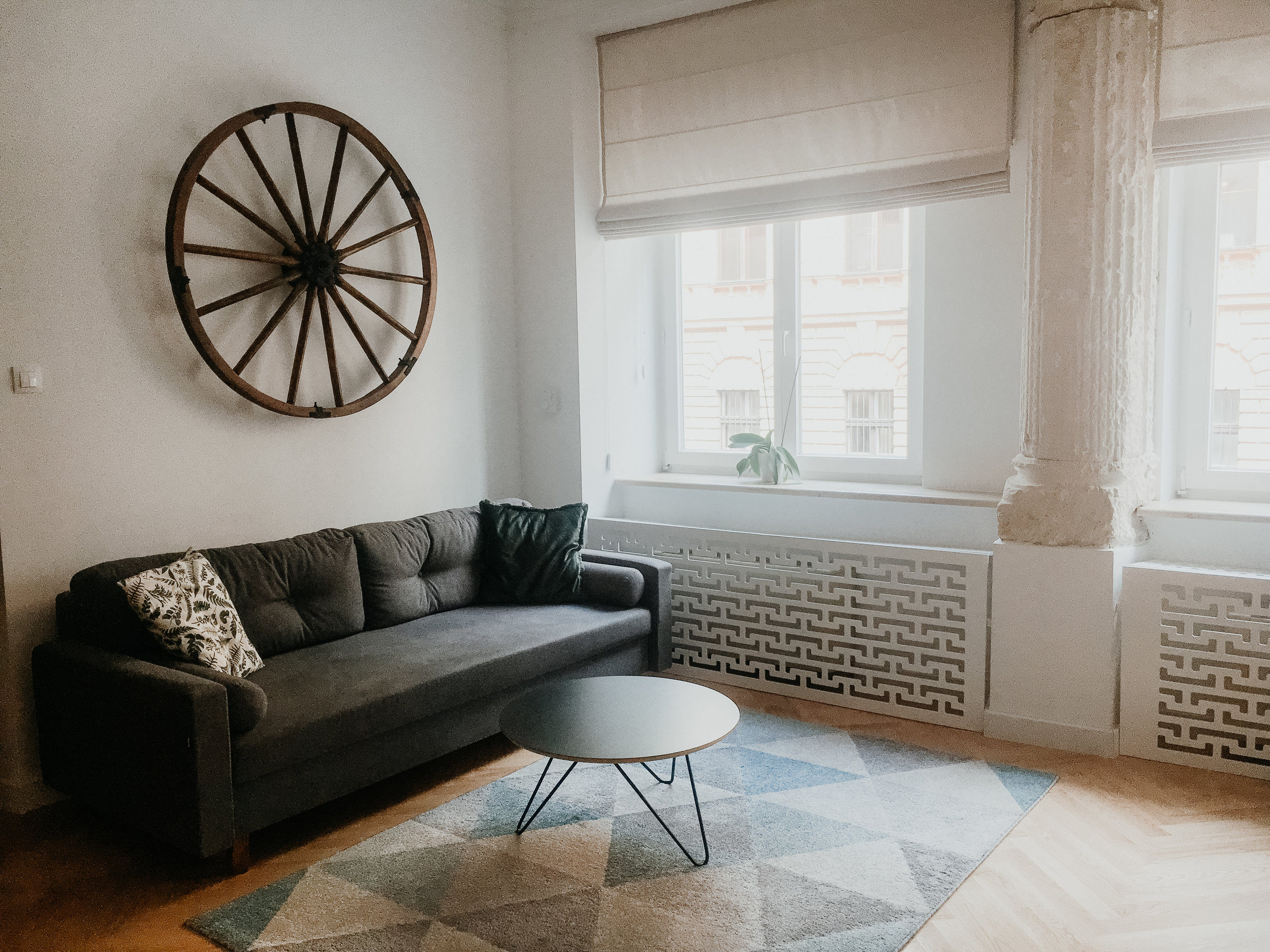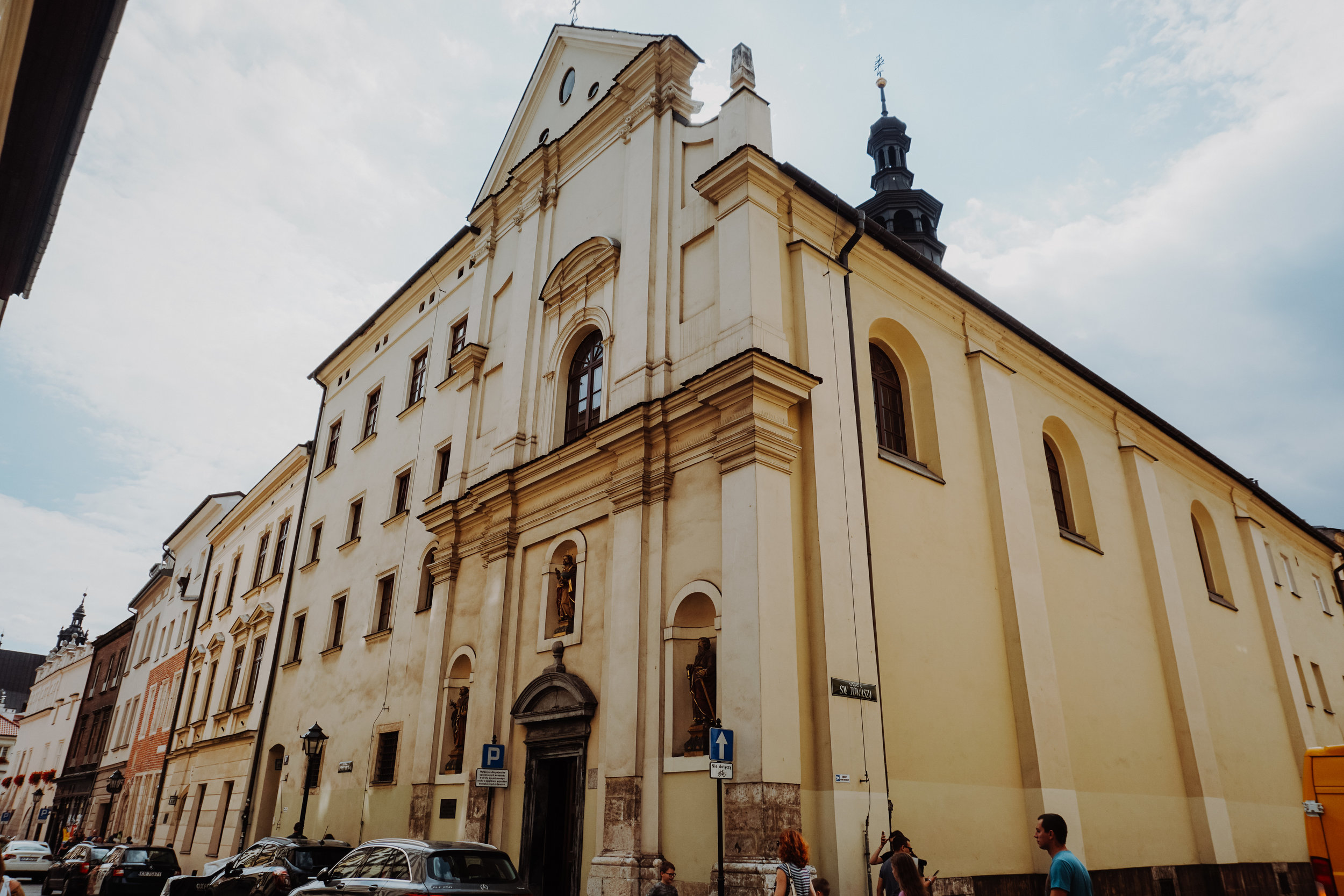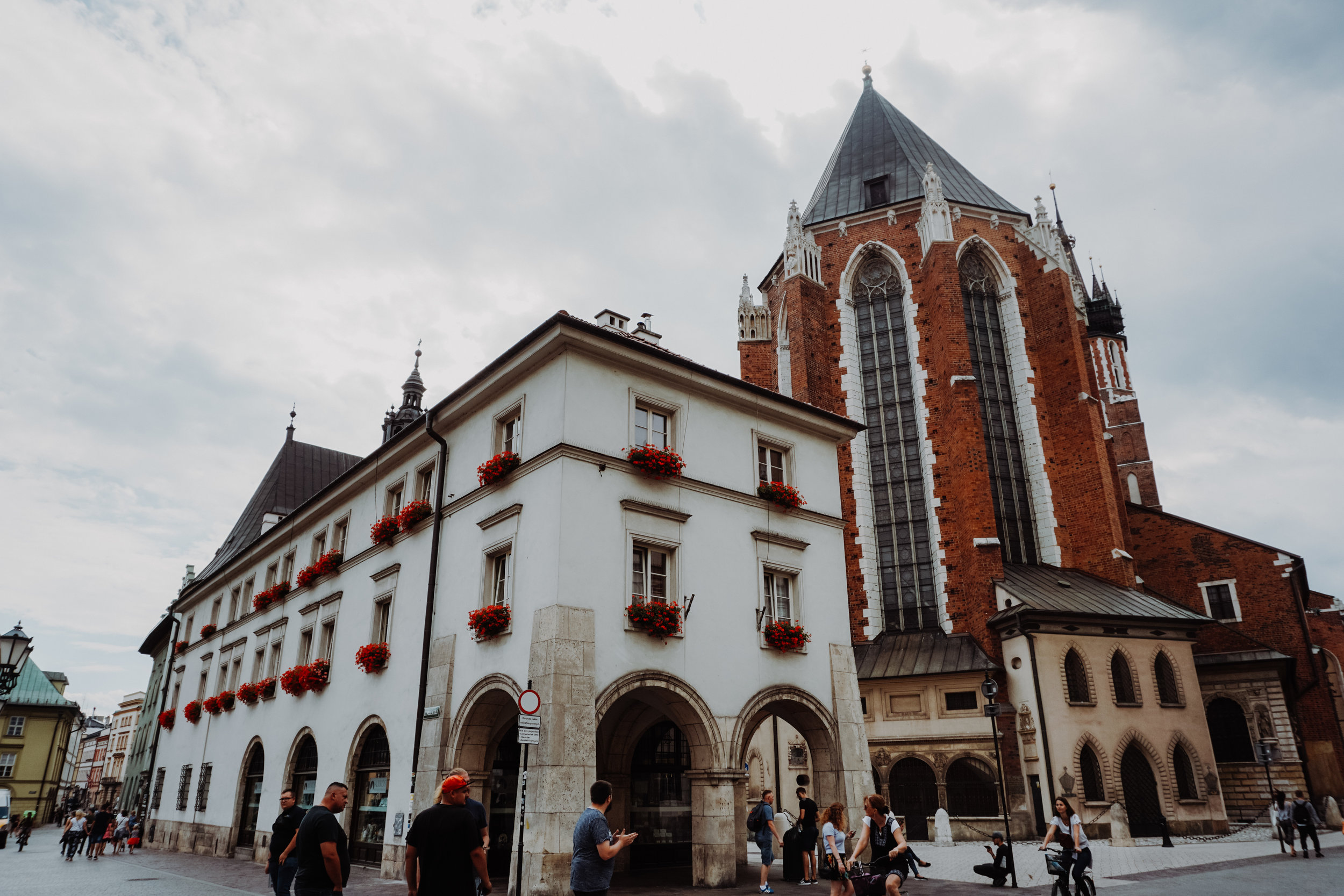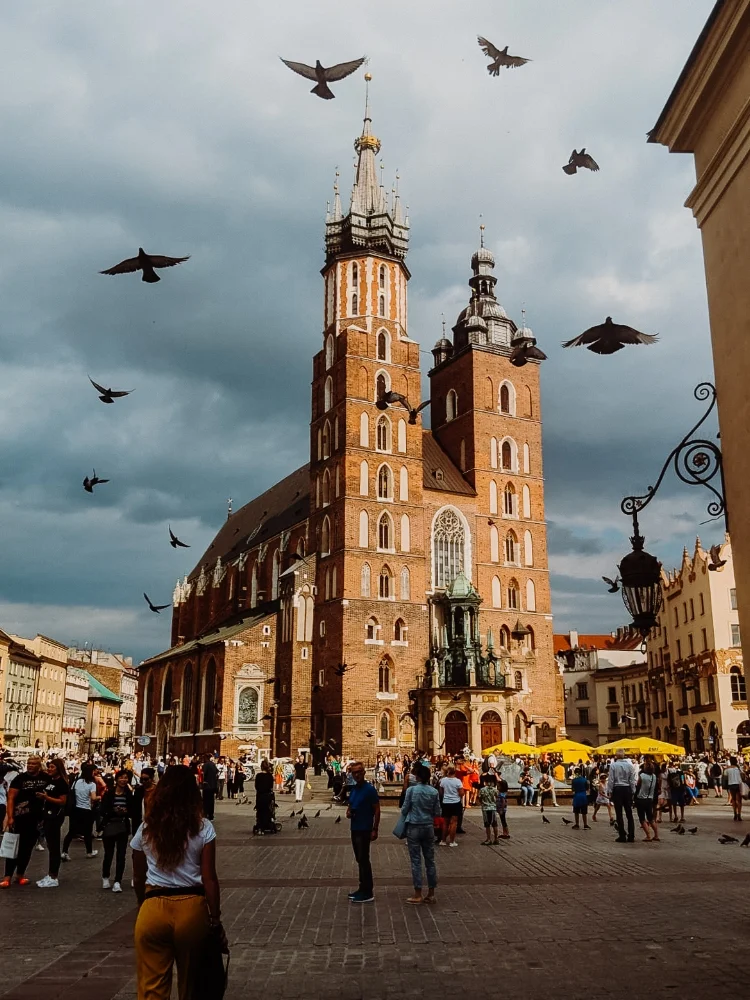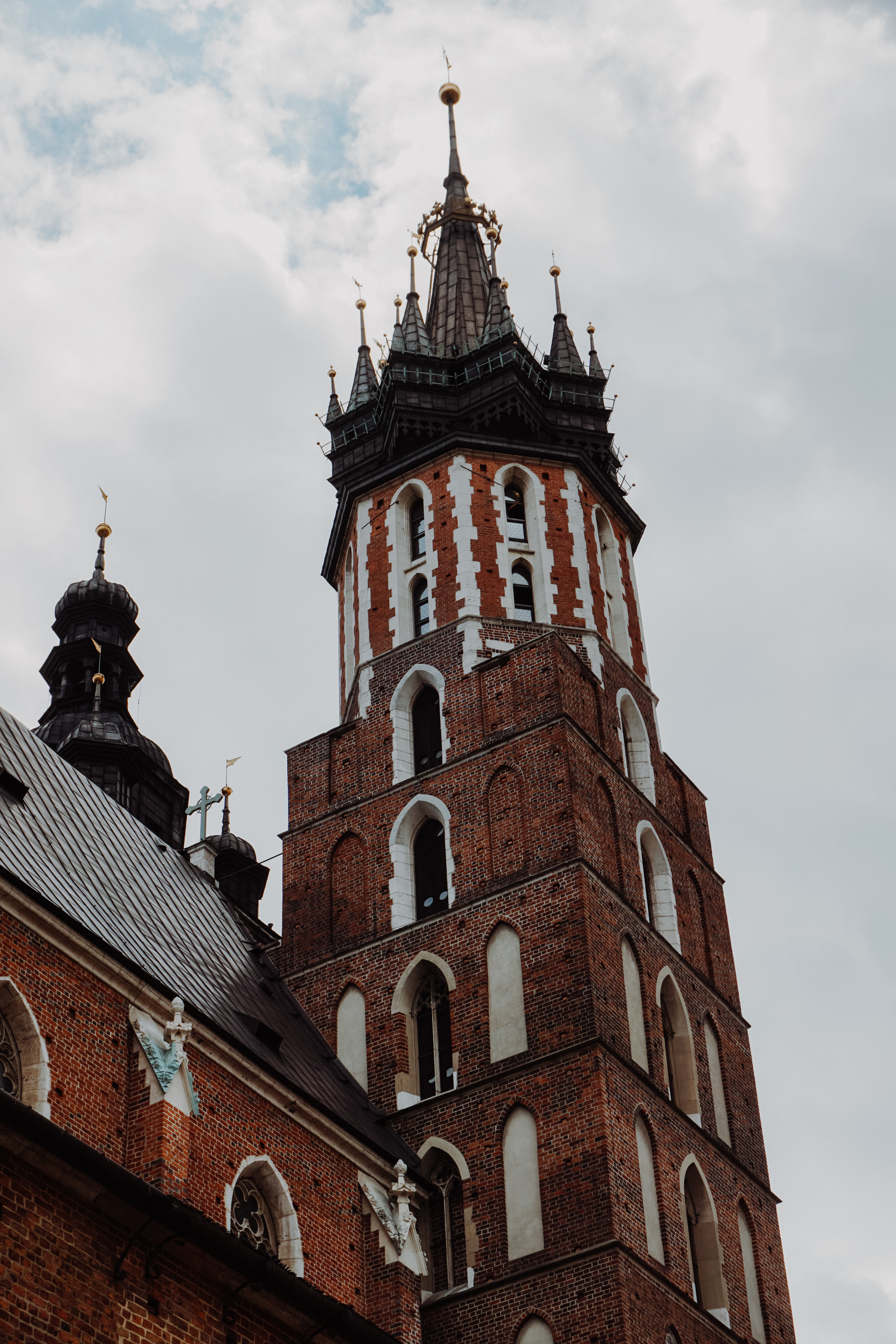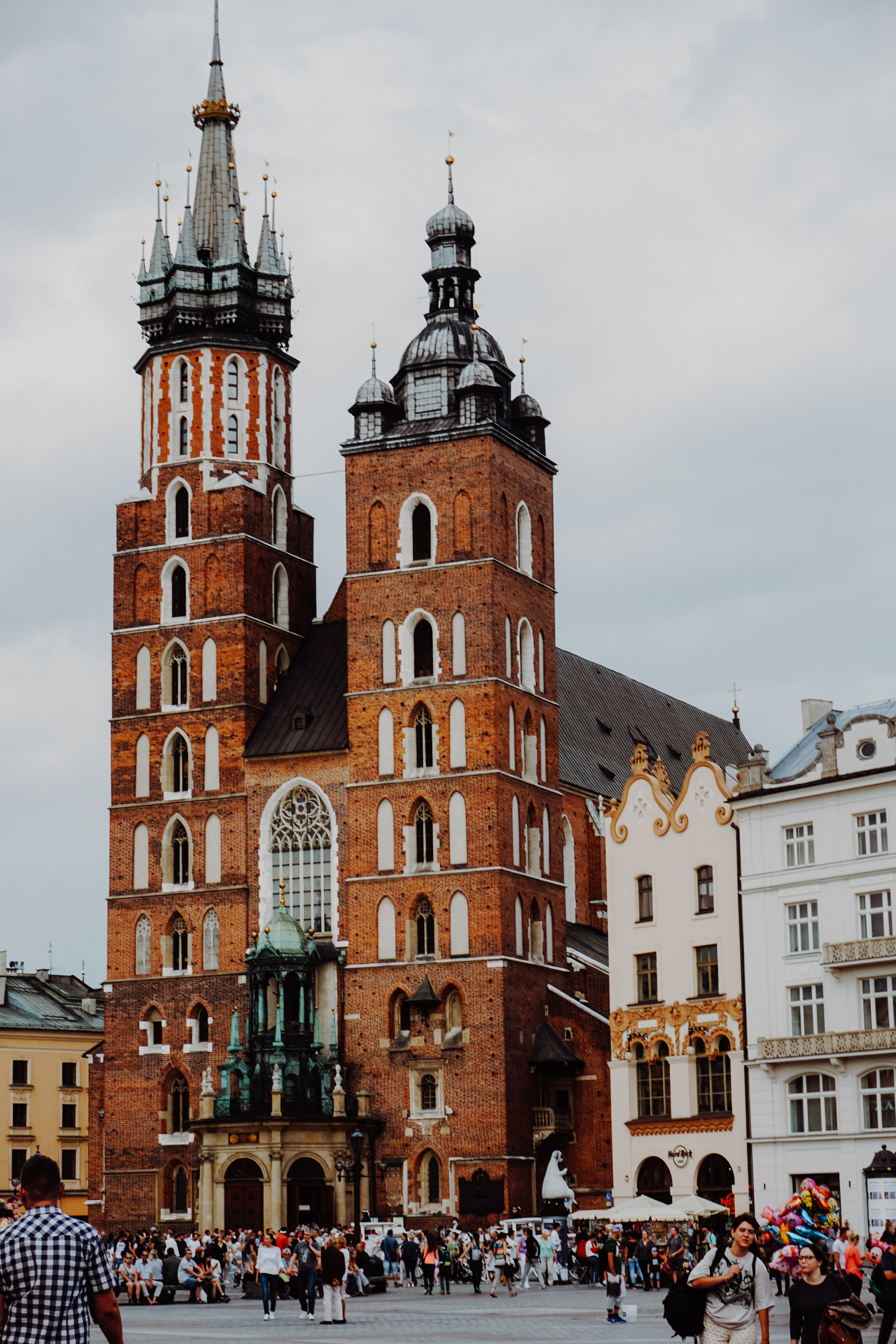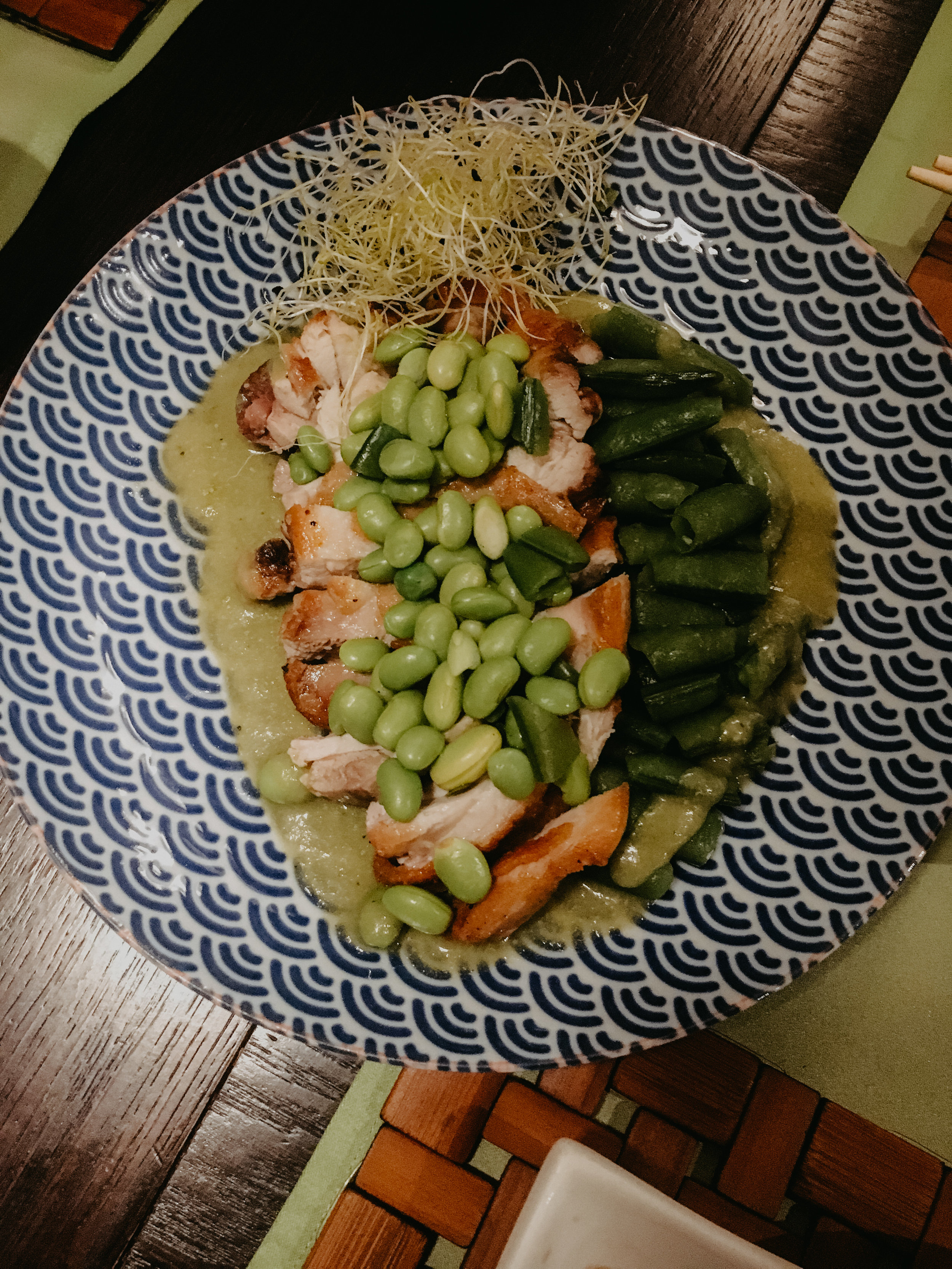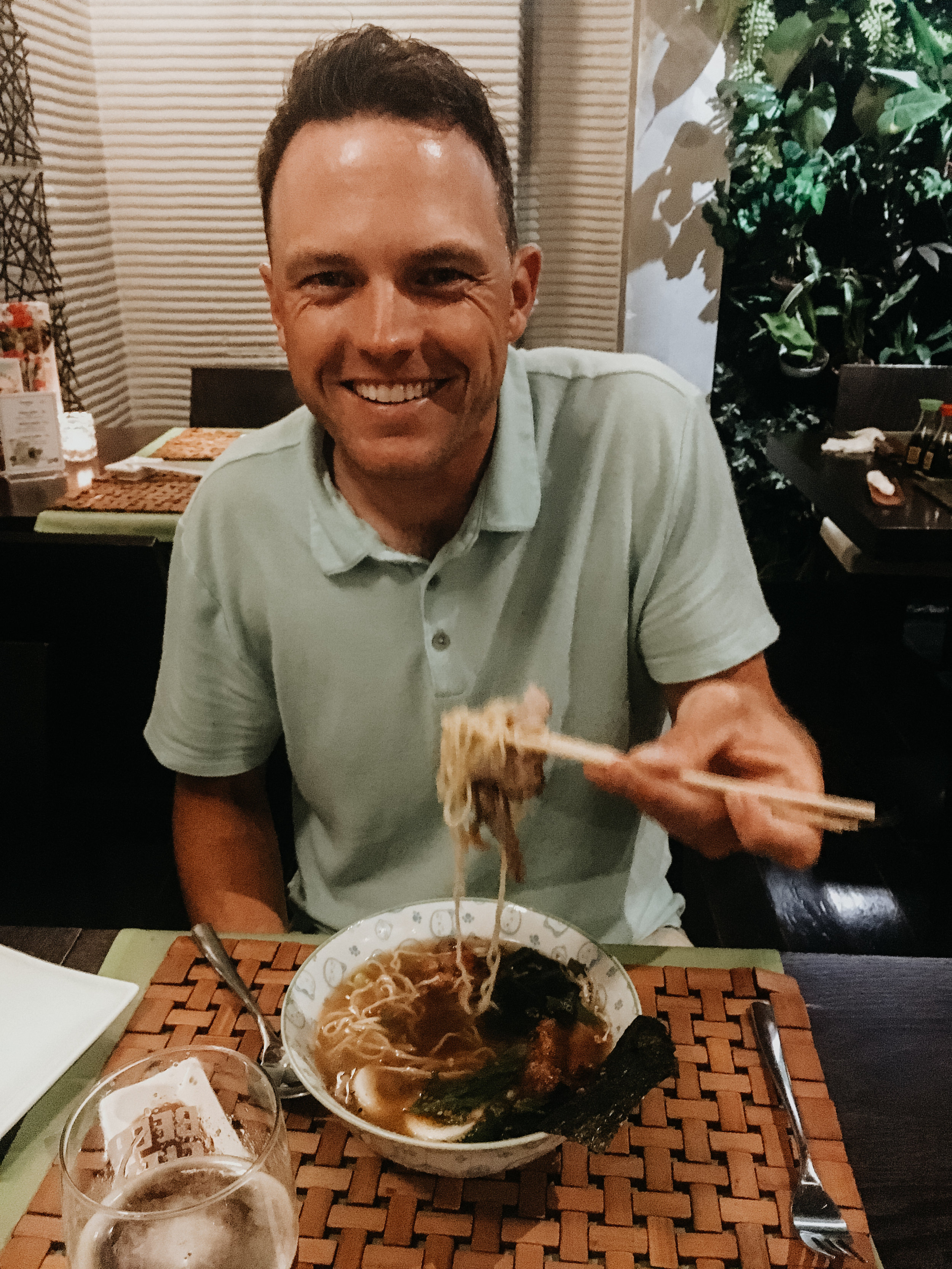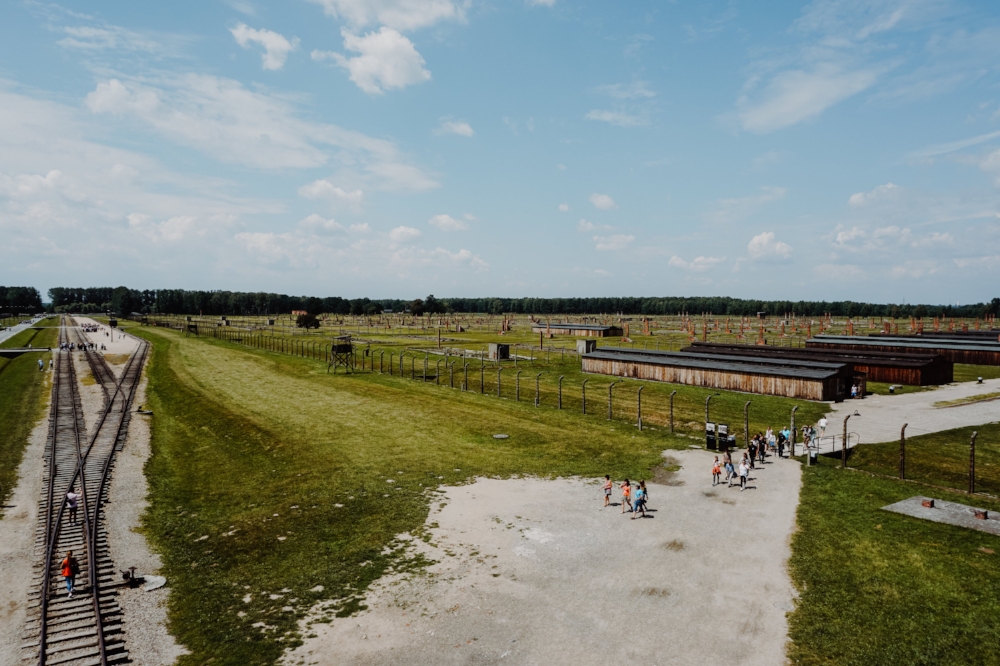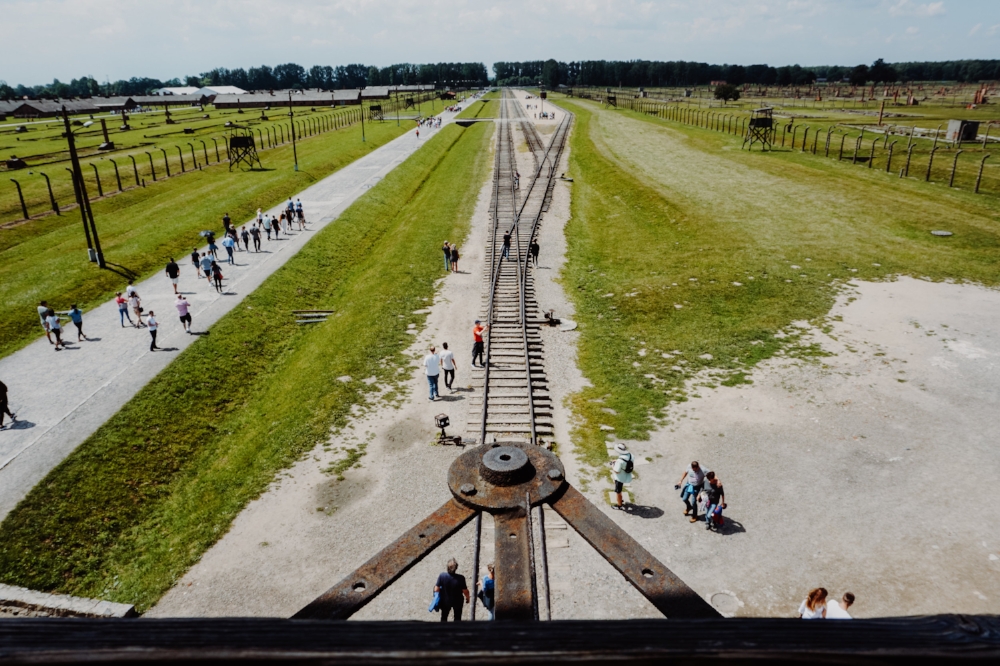Kraków
Cześć and welcome to my post about Kraków, Poland! Chris' brother, Shawn, recently visited us in Dublin for two weeks and wanted to take a trip that had history tying to World War II. After some deliberation, we agreed that Kraków was our place. It is a well-preserved medieval city, relatively inexpensive, and is situated about an hour from the concentration camps, Auschwitz-Birkenau. We didn't know quite what to expect, but were so blown away by the architecture and vibe of the city. Perhaps a big part of the charm is that it was nearly unscathed during World War II. I hope you enjoy reading about our short weekend trip to the former capital of Poland!
Day 1 - Friday, July 13th:
We took an 11:00 a.m. flight out of Dublin to Kraków with Ryanair. Tired from the Bruno Mars concert the night before, we were ready to relax on our three-hour journey to Poland.
We landed at Kraków John Paul II International Airport around 3:00 p.m. Poland time [+1 hour from Dublin], made it through customs, and found the personal driver our AirBnb host arranged for us. He said he would get us to our place "fast, but not furious". He was a funny guy, who made our welcome to Poland fun. One of his other jokes was, "What's the best thing in Warsaw? A plane to Kraków!" The thirty-minute ride from the airport to our place in the Old Town with our own private stand-up comedian / driver cost us 100 Polish złoty [PLN], which converts to $27 / € 23. Not bad, but we found cheaper for the drive back.
Our AirBnb was located right in the heart of the Old Town of Kraków. It was a gorgeous two-bedroom with high ceilings and herringbone wood floors. The host was super great, the location was perfect, and only cost us $90 per night. The only downsides were that it was pretty loud at night with party people on the streets and there was only one pillow per person. I would still recommend this place to anyone visiting though!
As soon as we set our bags down, we wanted to get out and explore the Old Town. Right outside our door were cobblestone streets and buildings with amazing architecture. There were also churches everywhere...lots of churches. 100 churches according to our airport driver. This probably explains the high volume of nuns walking around the city. :)
Just a short stroll from our place and we found ourselves in one of the largest medieval main squares in all of Europe. Dating back to 1257, it is the bustling hub of the Old Town filled with shops and restaurants. The first building to draw your attention is St. Mary's Basilica. Erected in the 1300s, it is a Gothic masterpiece towering over the square.
Thank you to Shawn for capturing this incredible picture!
On the hour, every hour, a bugle call is played from the tallest tower of the church. Historically, the tower was used as a lookout for fires and invaders. A bugle player would send out the warning signal if danger ensued. To carry on the tradition and honor the past, this tune is still played by a bugler every day. He climbs the stairs of the tower and plays the tune out of each window sending out the call to the north, south, east, and west. The bugler's song ends abrubtly harkening back to the legend that when the Tatar's, a tribe of Mongols, invaded Poland in the 12th century, they shot the bugler in the neck to kill off his warning to the towns people.
Visitors can go up into the tower to get great views of the city, but the times are a bit limited, so just make sure to look ahead of time. We weren't able to go up, but we spent a lot of time marvelng at the church and listening to the bugler.
After marveling at St. Mary's Basilica, we found a restaurant along the square to have a bite to eat. There are loads of options with patio seating, so I'm not sure if it makes a difference where you eat. It's all touristy, you know? We settled at Loźa Klub Aktora to try the traditional Polish dishes of pierogis and breaded pork. Pierogis are essentially filled dumplings. Shawn tried the meat pierogis while Chris and I shared the cheese and onion ones, were rich in taste, but very good. The breaded pork was basically wienerschnitzel, which was delicious. Unlike the Germans and Austrians though, they didn't serve it with a lemon, so I had to improvise and use the one from Chris' long island!
The sun was shining, the food was tasty, and the views were great!
While we were eating, we kept seeing people coming from down the street with ice cream cones, so after our meal, we ventured down the street to find the source. The shop was called Argasinoy and the ice cream was creamy perfection all for 7 PLN / $1.91 / €1.63.
The other major building in the main square is the Cloth Hall, a shopping mall / market dating back to the 1300s. Vendors line the hallway selling everything from t-shirts to amber to ceramic dishes. It's worth taking a stroll through to see all the fun stuff to buy. I would have totally gotten dishes if we had had room in our luggage.
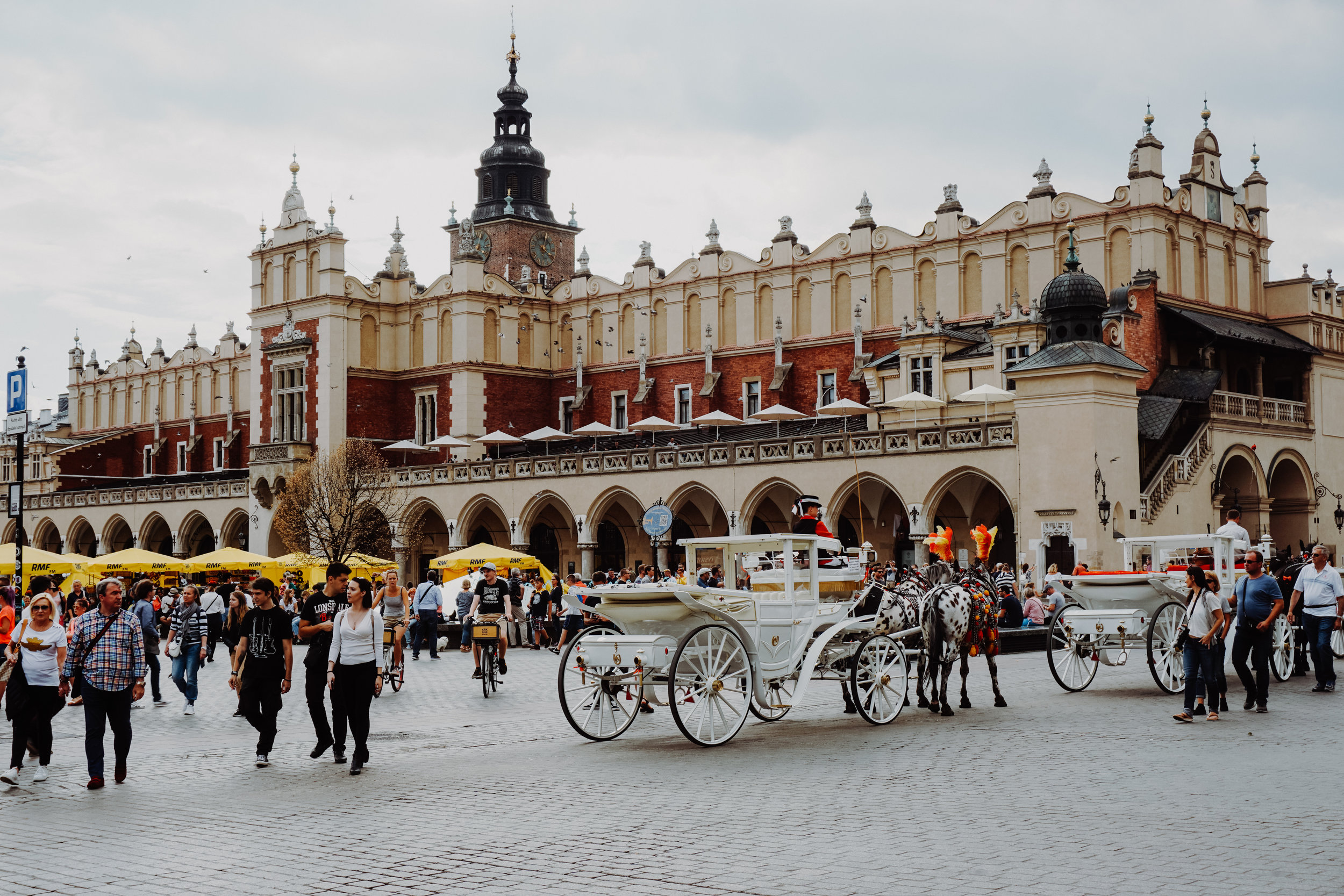
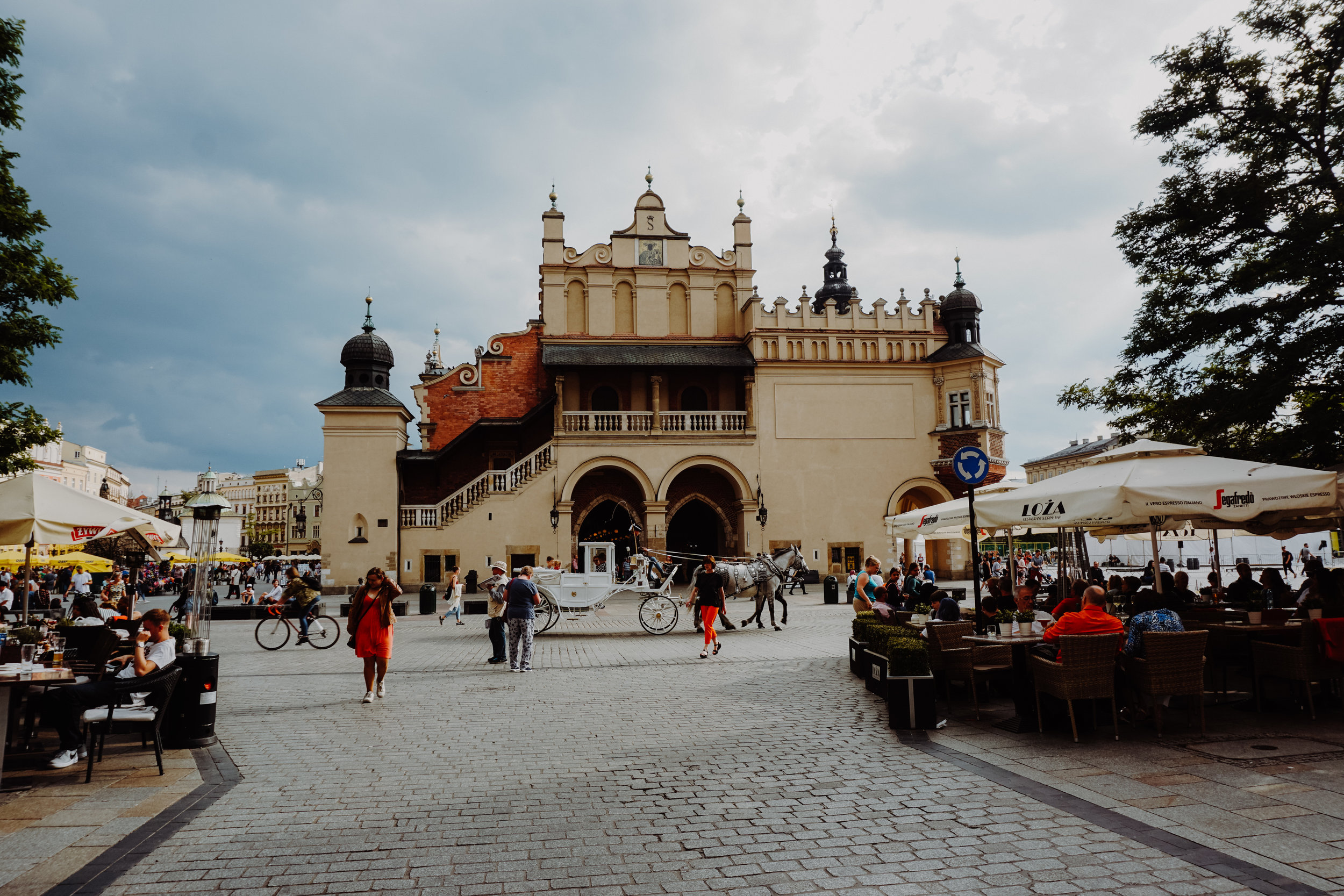
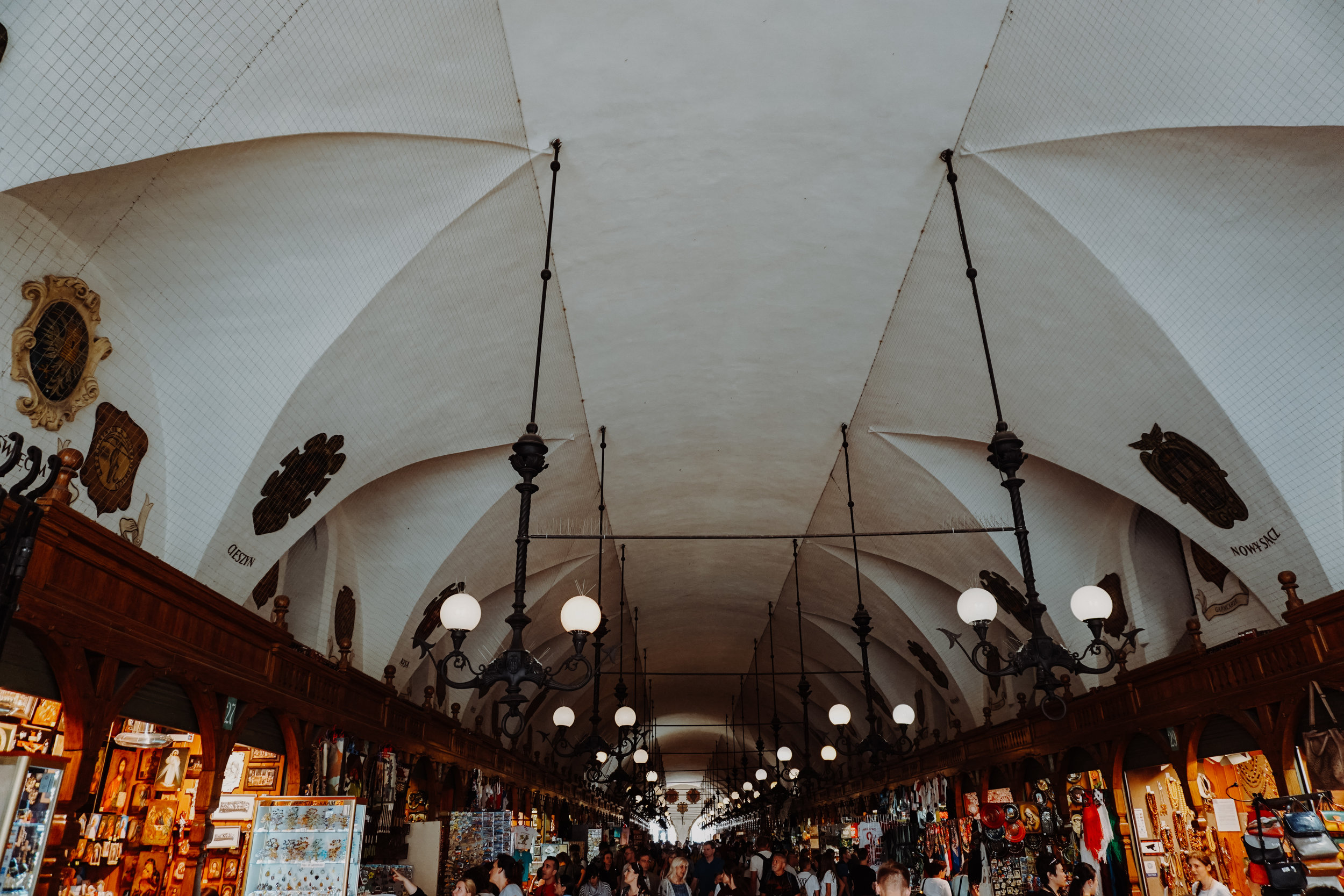
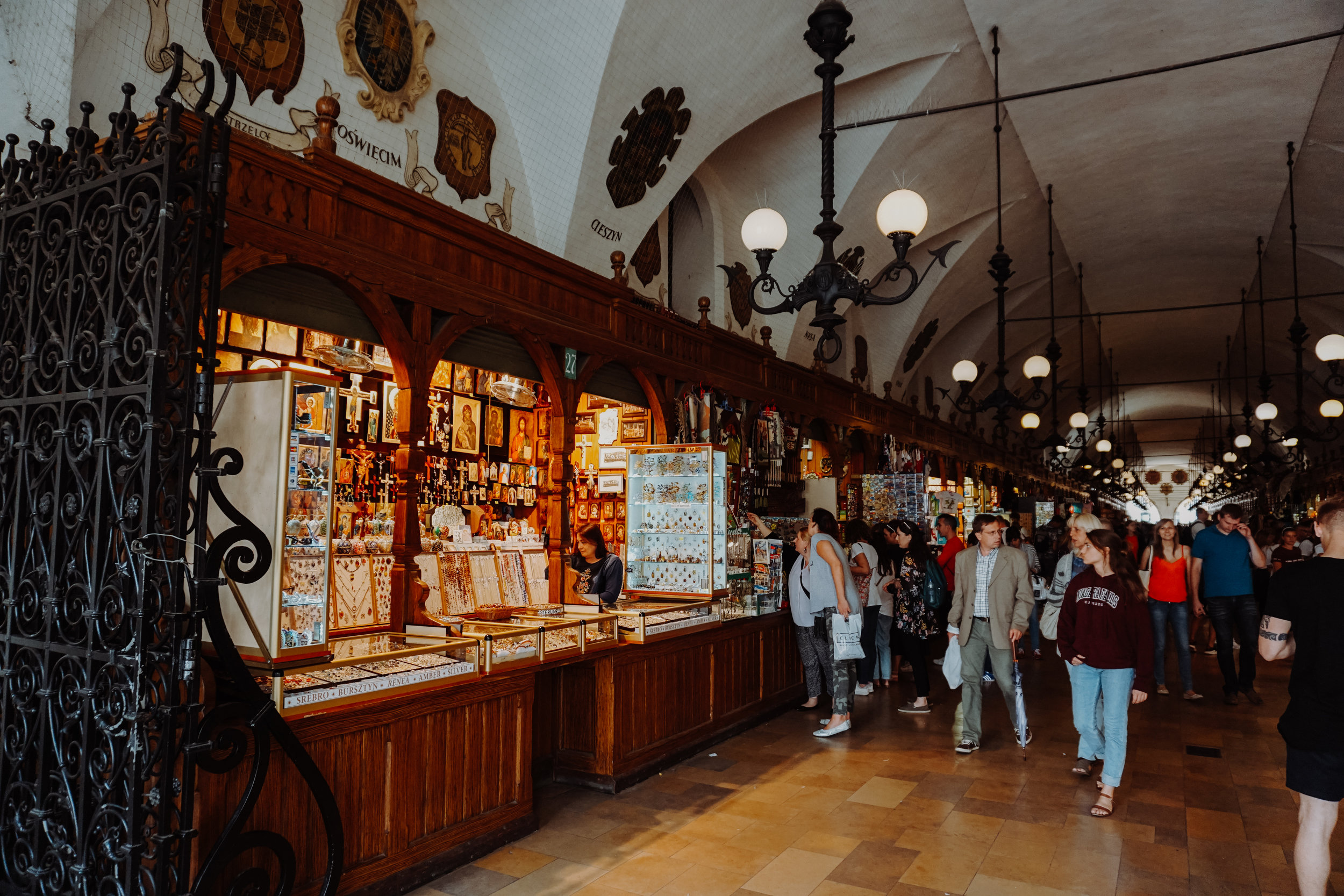

At the other end of the Cloth Hall, you can throw a few coins at this guy and sword fight!
A view from the other side of the square.
We kept walking through the Old City to make our way to Wawel Castle. Along the way, we found an imposing church in St. Peter and Paul's Church. This church was built by the Jesuits who went to Poland in the mid-1500s. My favorite part of the church were the statues of the 12 Apostles at the front gate.
Also, the streets are filled with beautifully decorated horse-drawn carriages, so below is a shot of one of those carriages approaching the church.
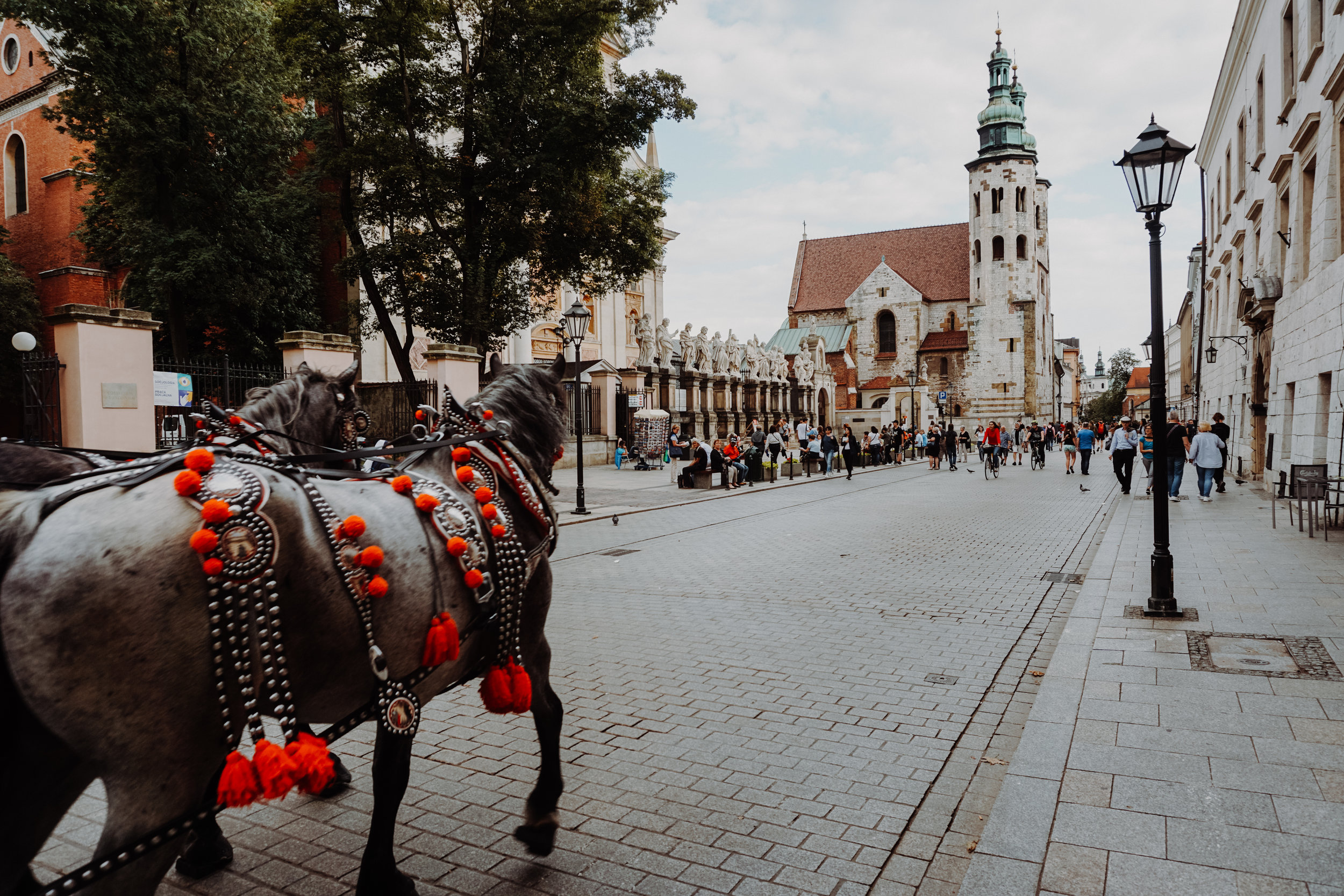
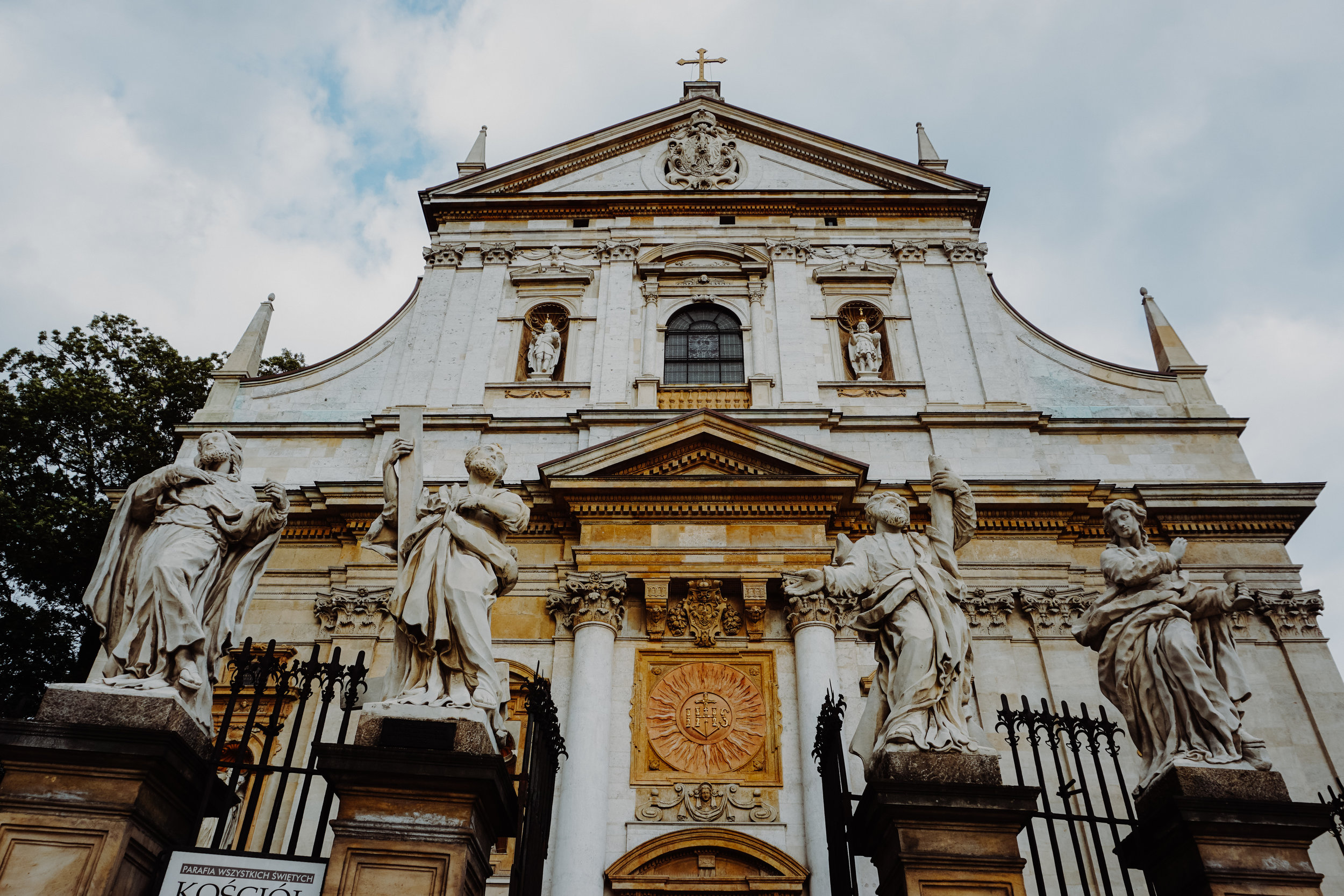
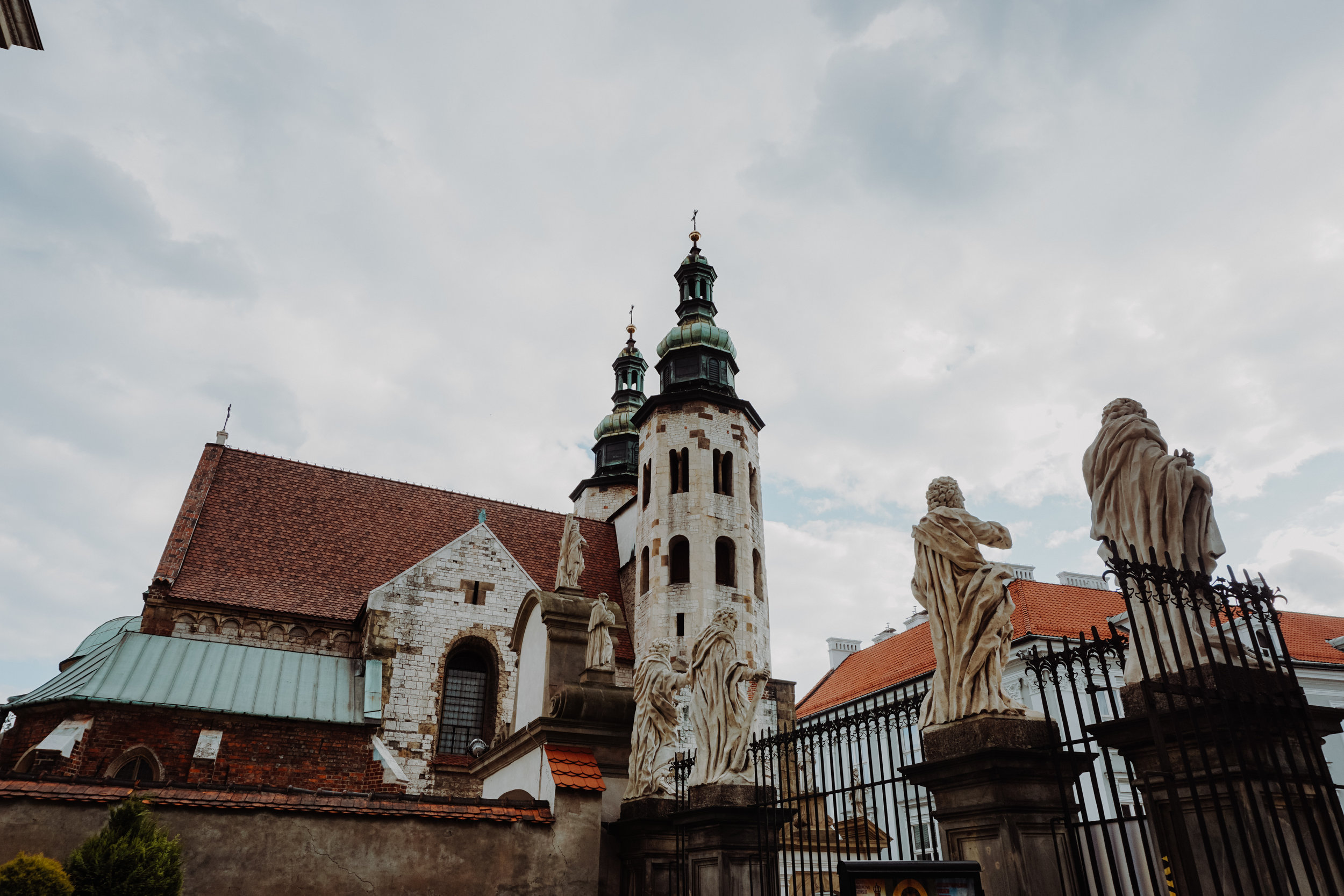
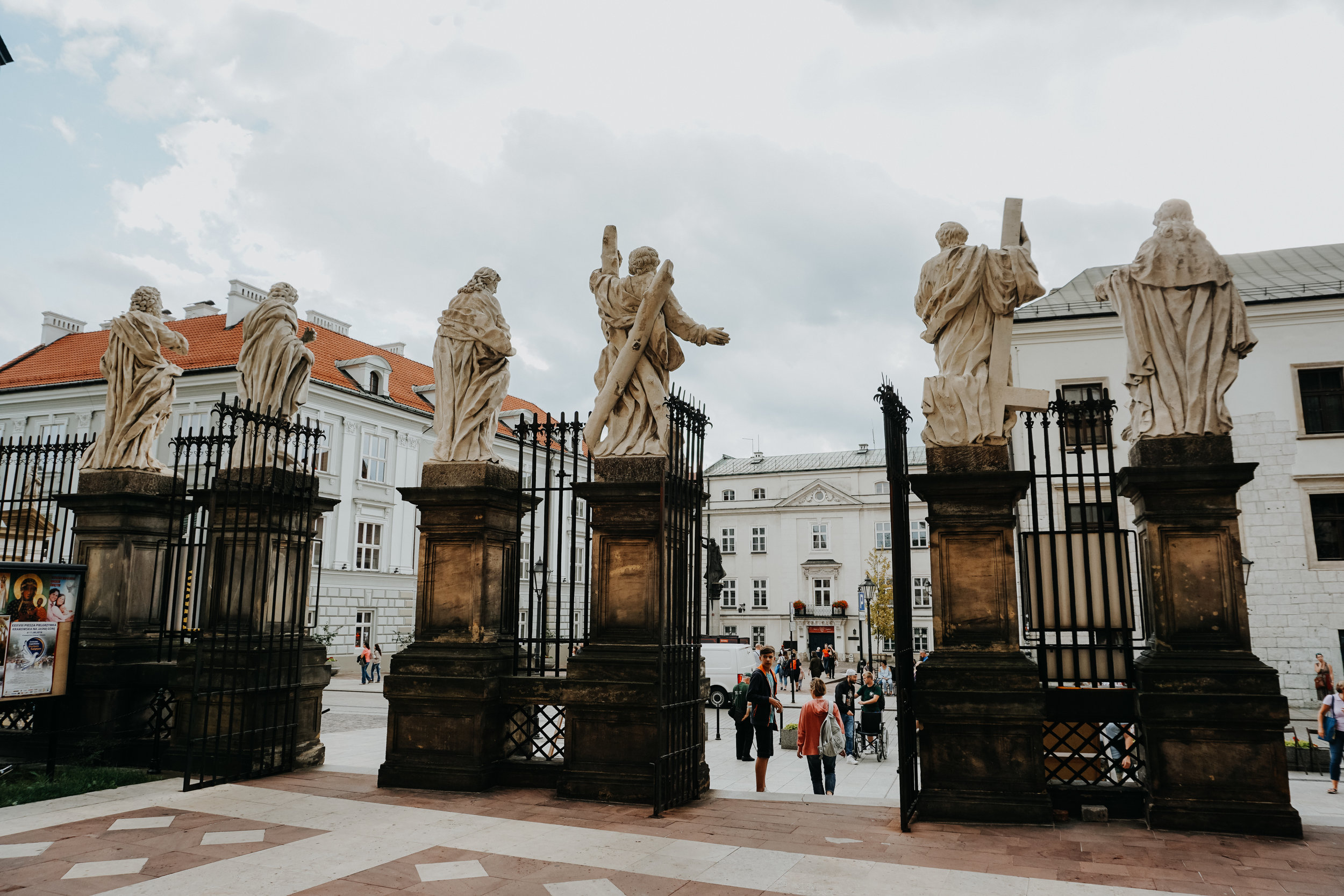
Not too far from St. Peter and Paul's Church is the crown jewel of Kraków, Wawel Castle. It is a massive structure that combines the styles of Romanesque, Renaissance, and Gothic architectures. It is a sprawling compound resting atop a hill, which makes it very imposing. The Wawel Castle is similar to other former royal residences in that there are exhibits for the state apartments, treasury, and crypts that open as exhibits to the public. It even boasts its own cathedral. It is definitely worth a visit to the castle, but make sure to get there before it closes, unlike us! You can still walk around the grounds after hours, but all of the exhibits and buildings were closed. I would have loved to see inside the cathedral and some of the other exhibits. It has different hours of operations depending on the month, so make sure to check out their website linked above before visiting. Regardless of not being able to go into any of the buildings or exhibits, we really enjoyed walking around the grounds of the castle and marveling at all its beauty.
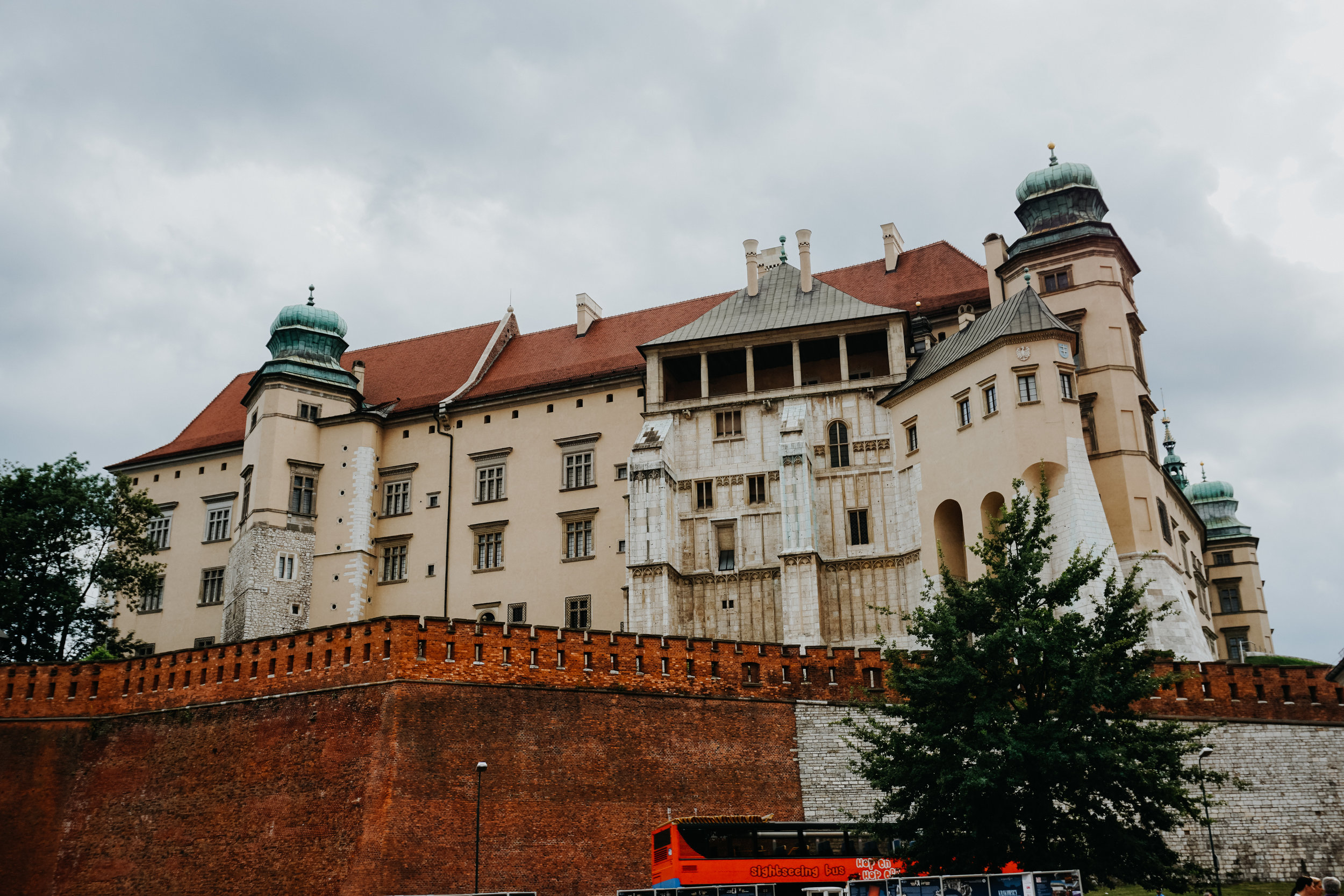
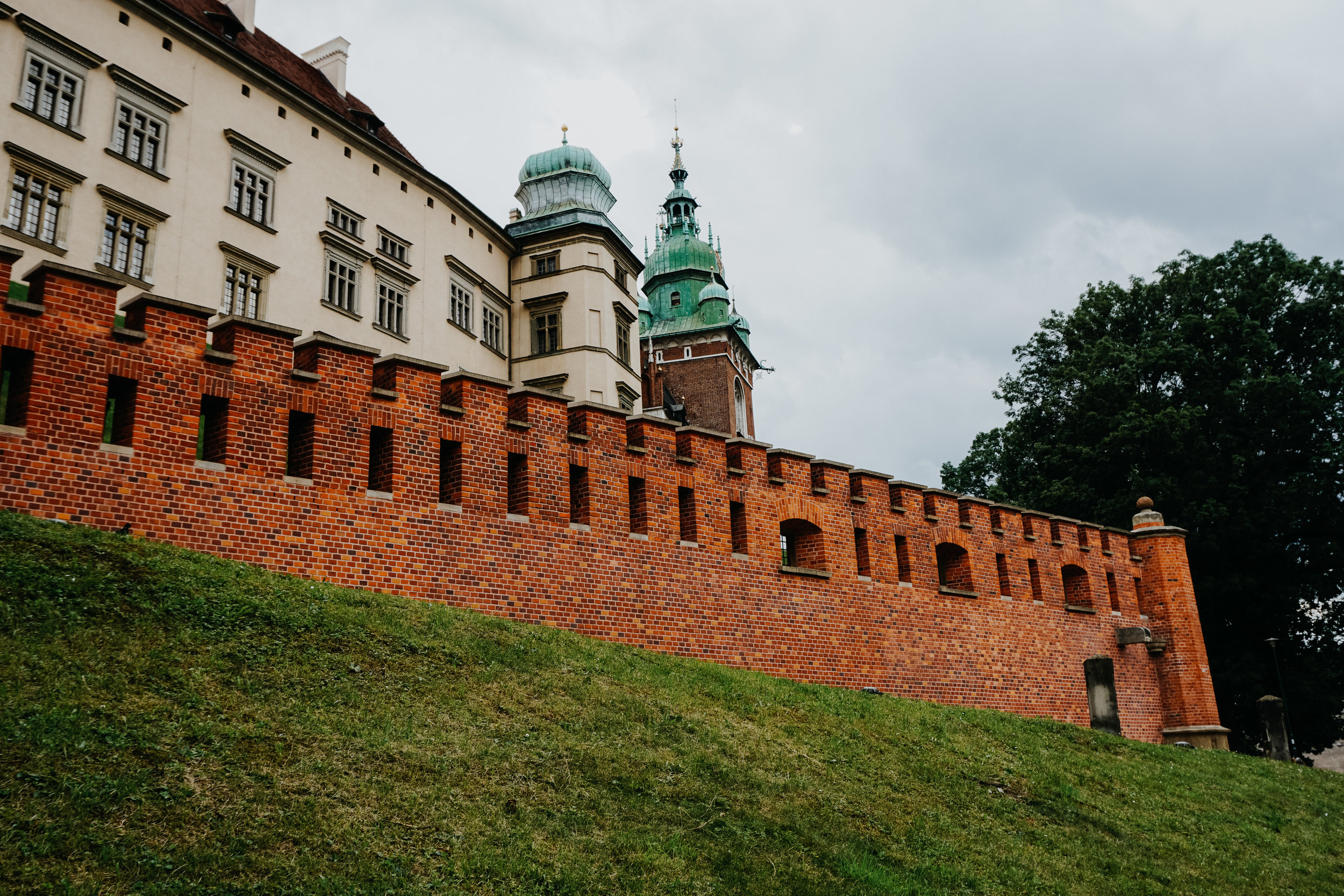
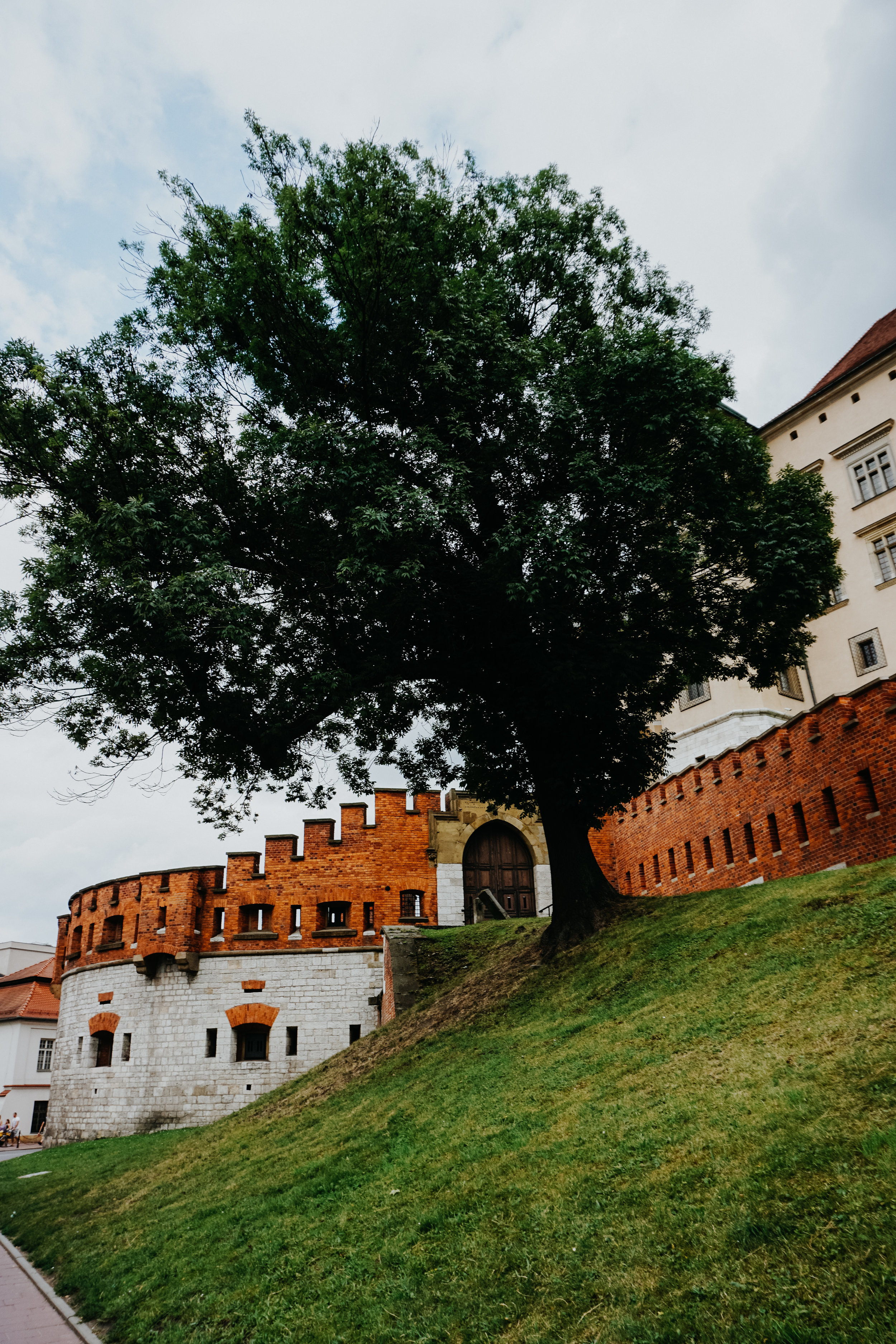
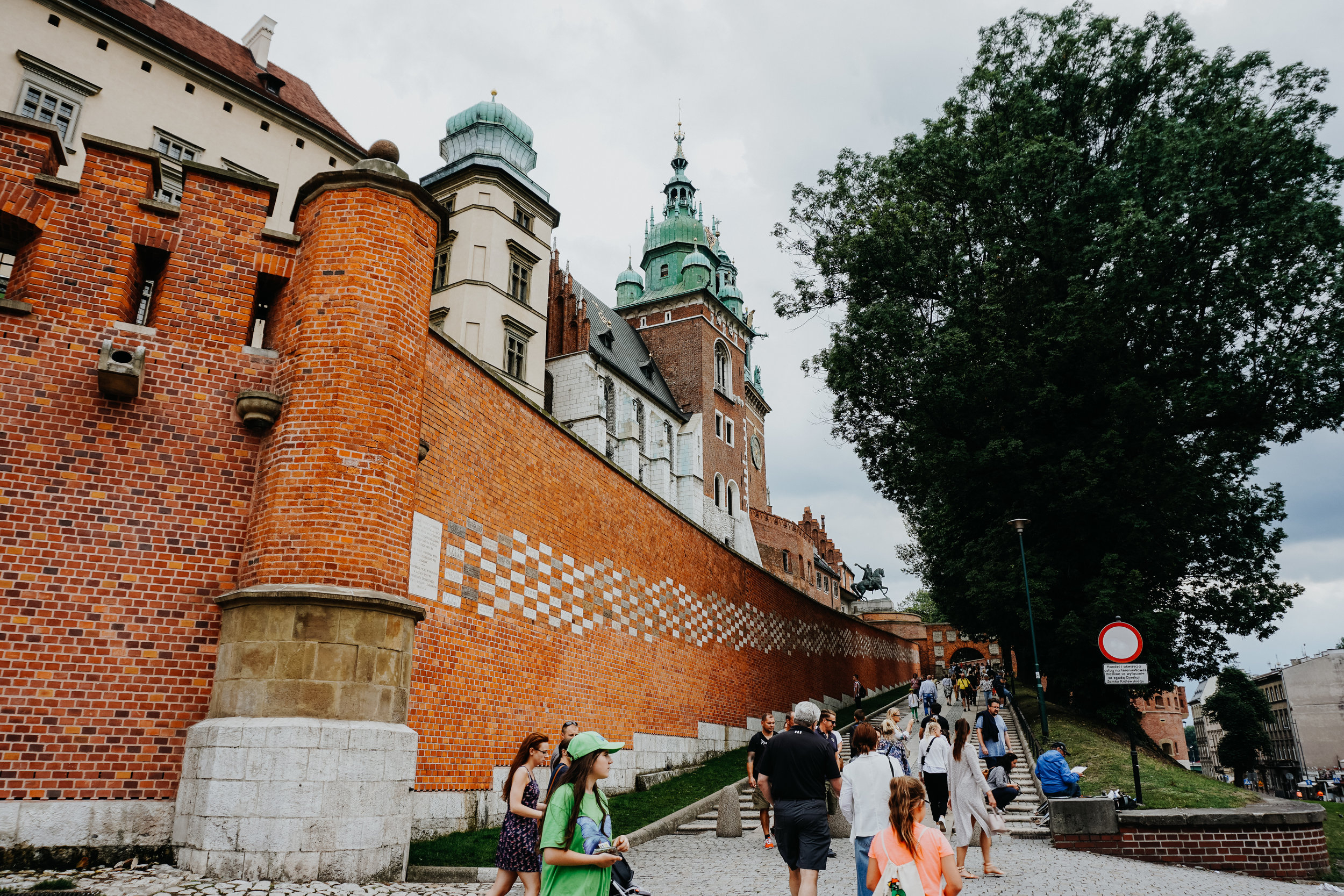
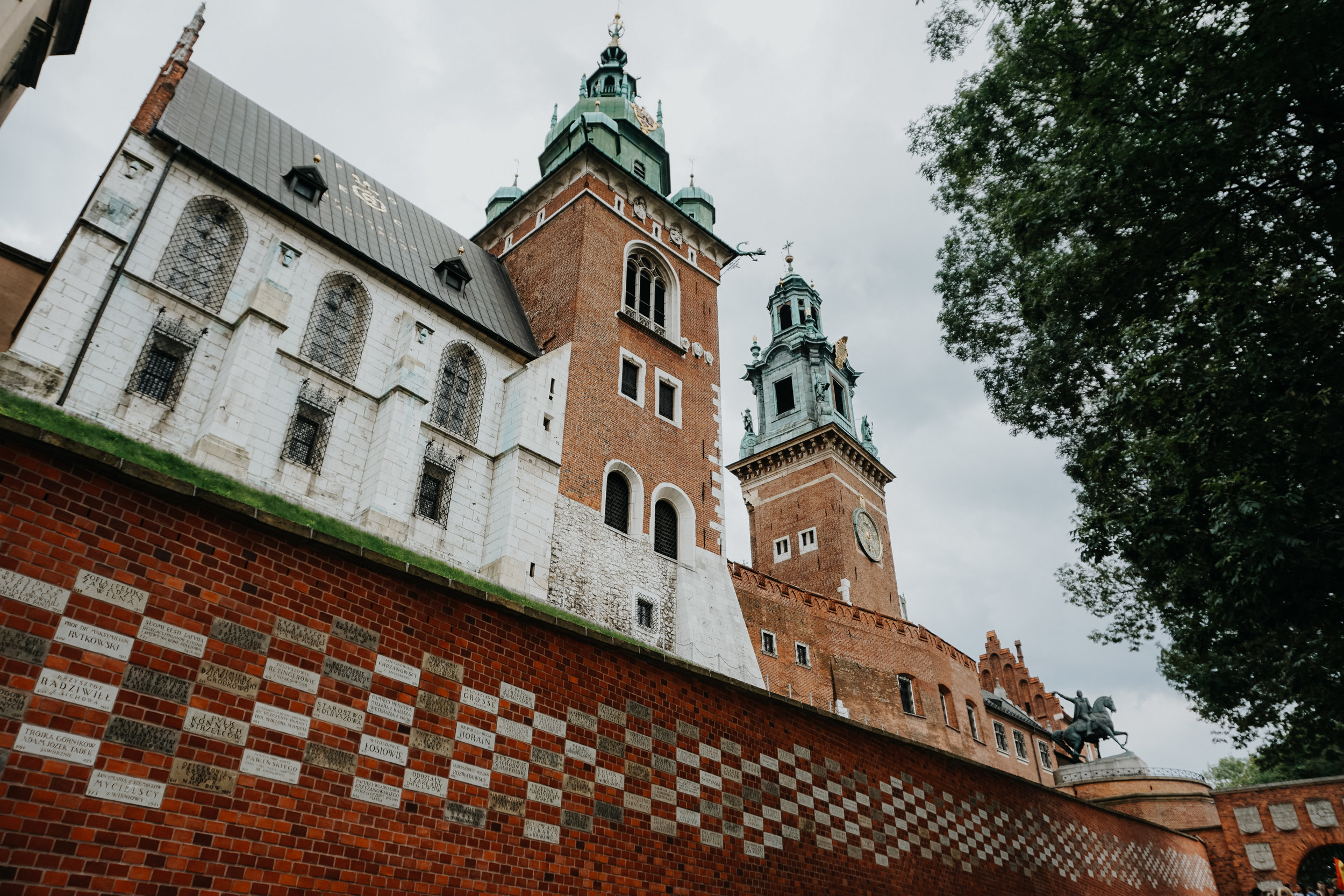
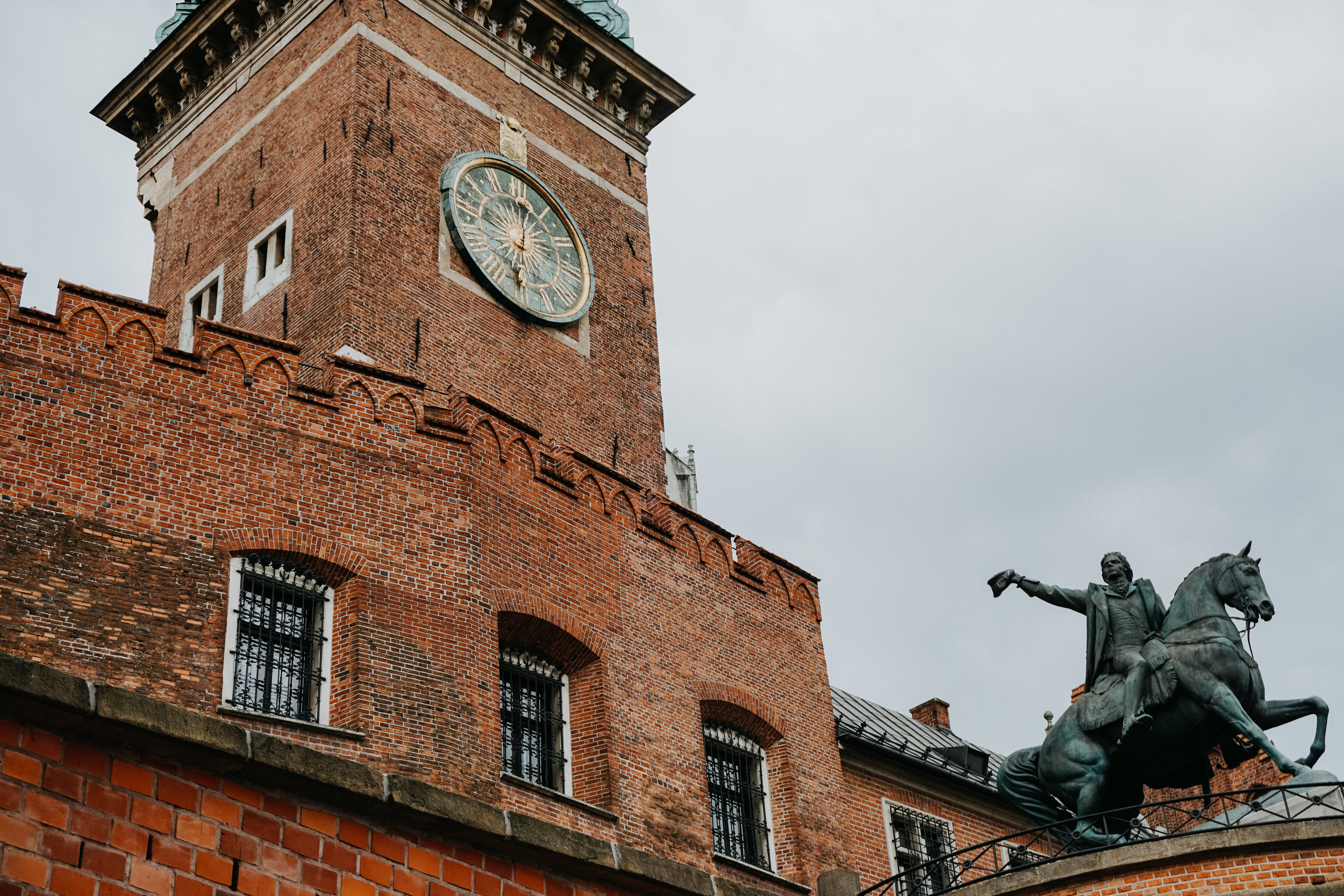

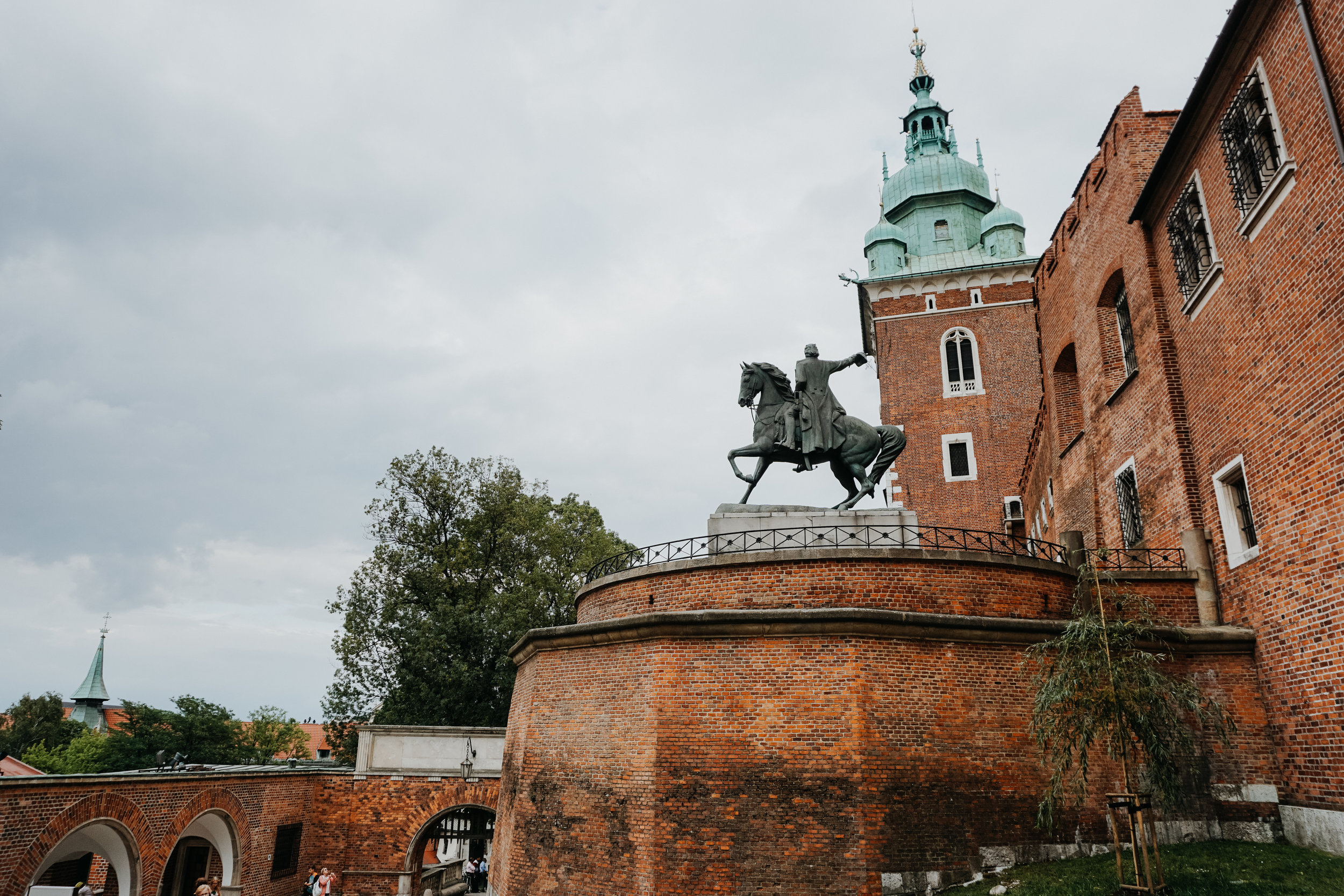
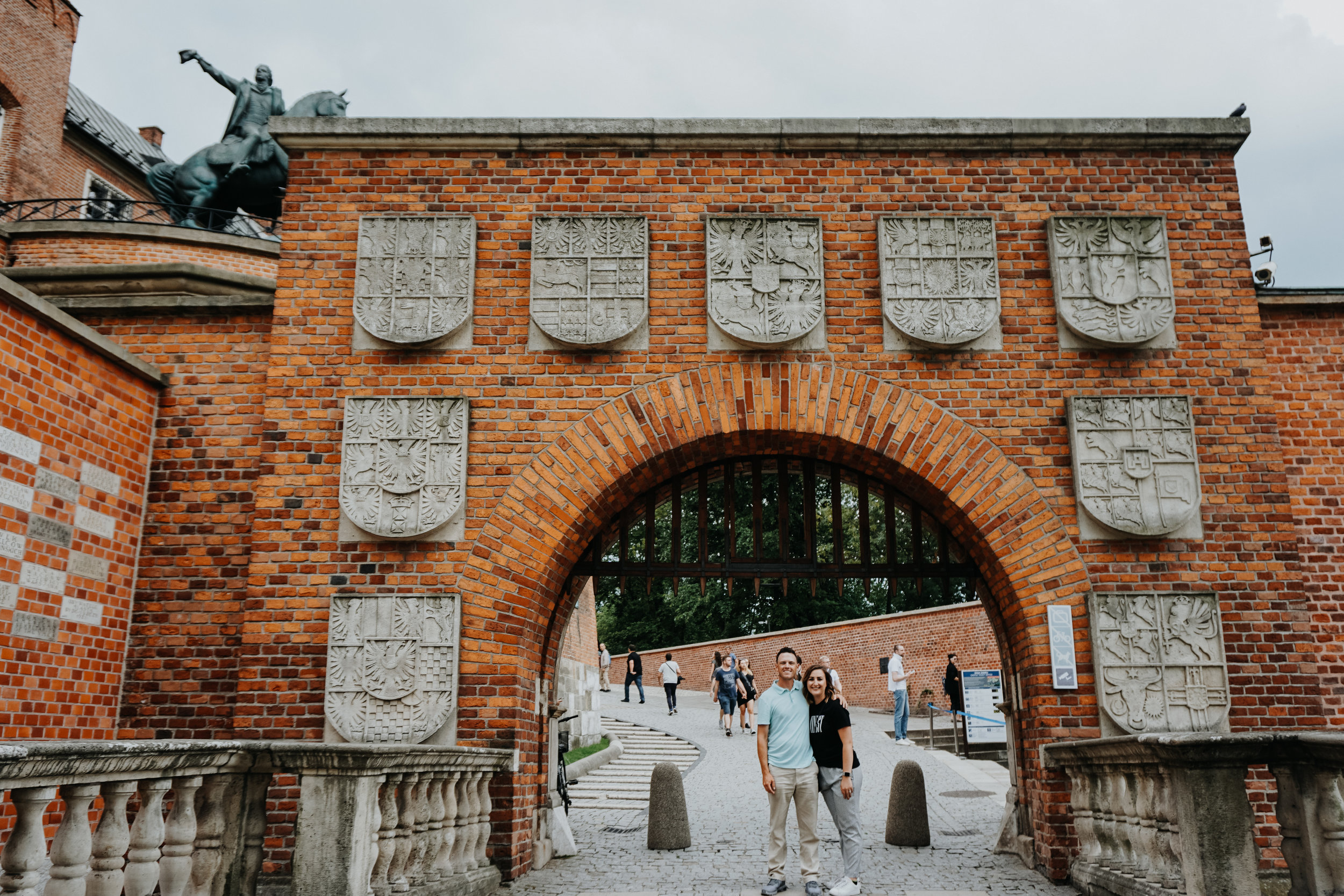
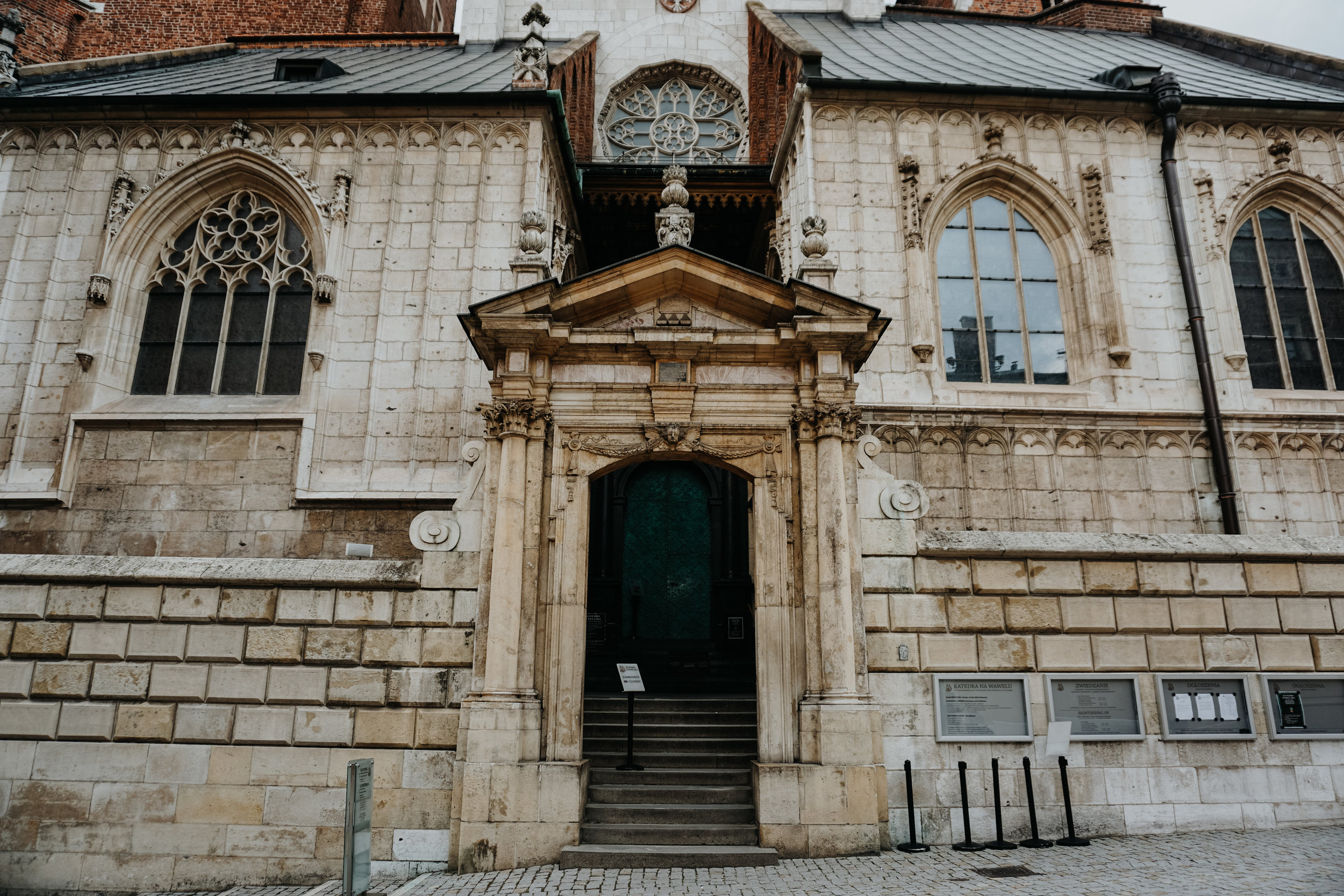
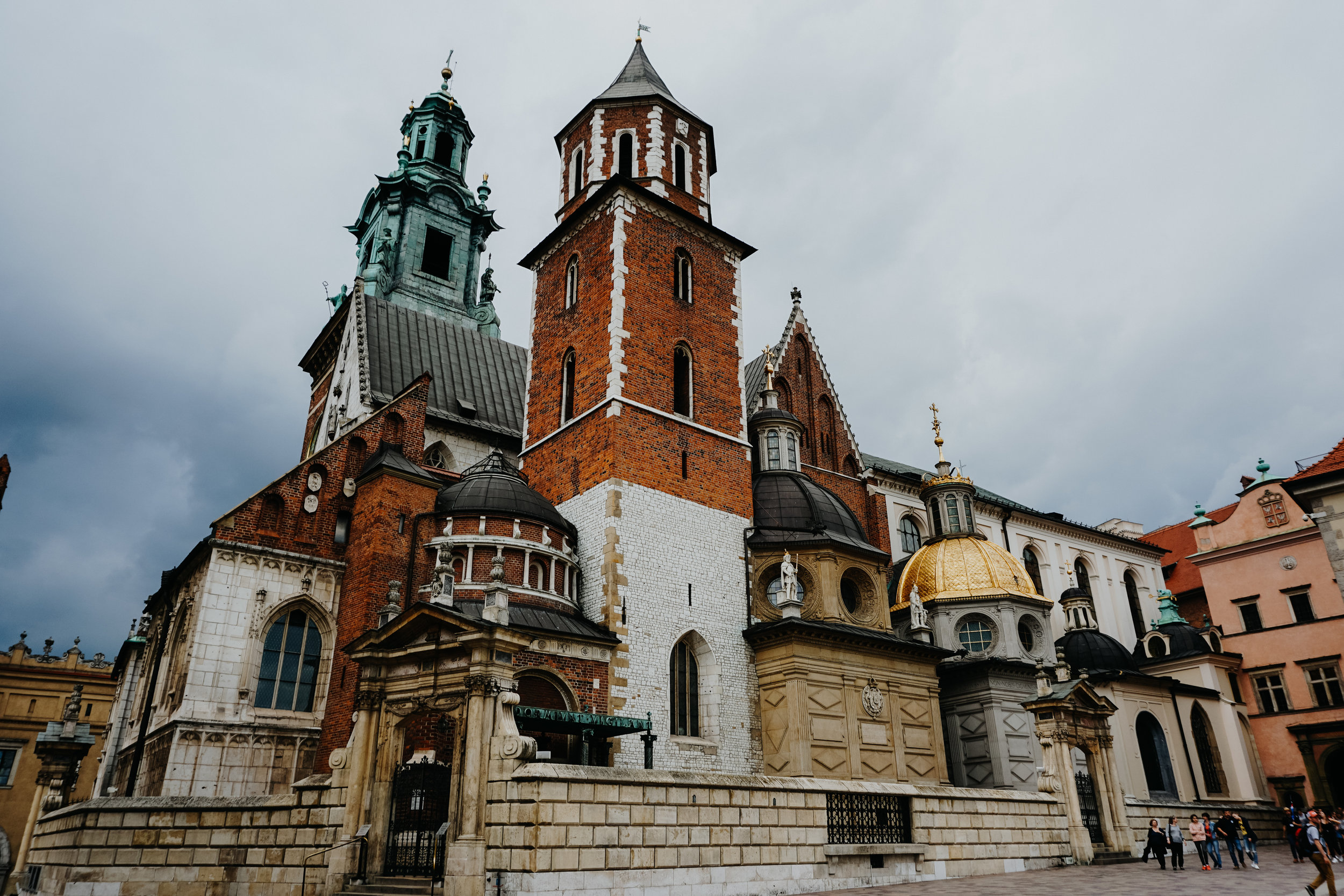
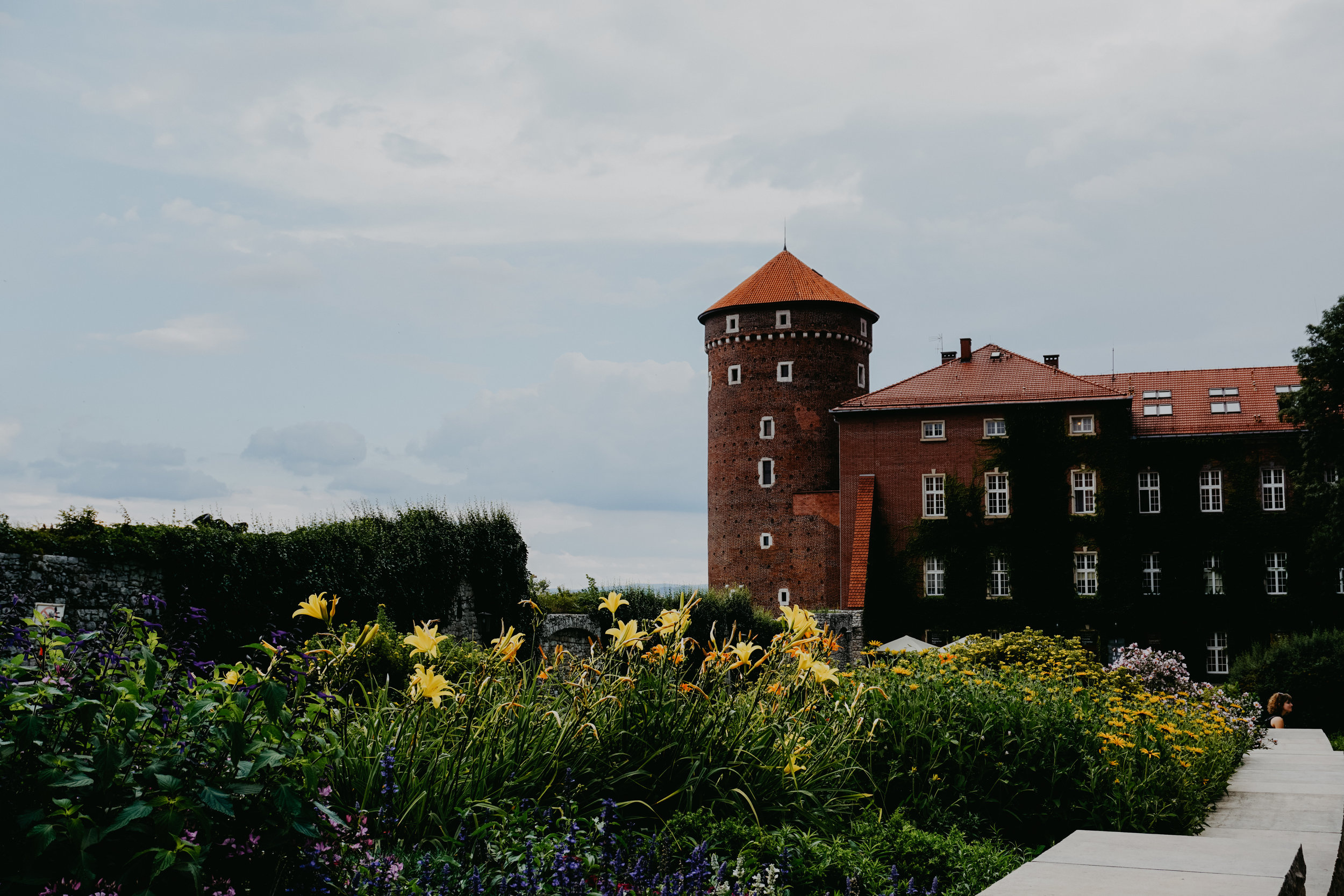
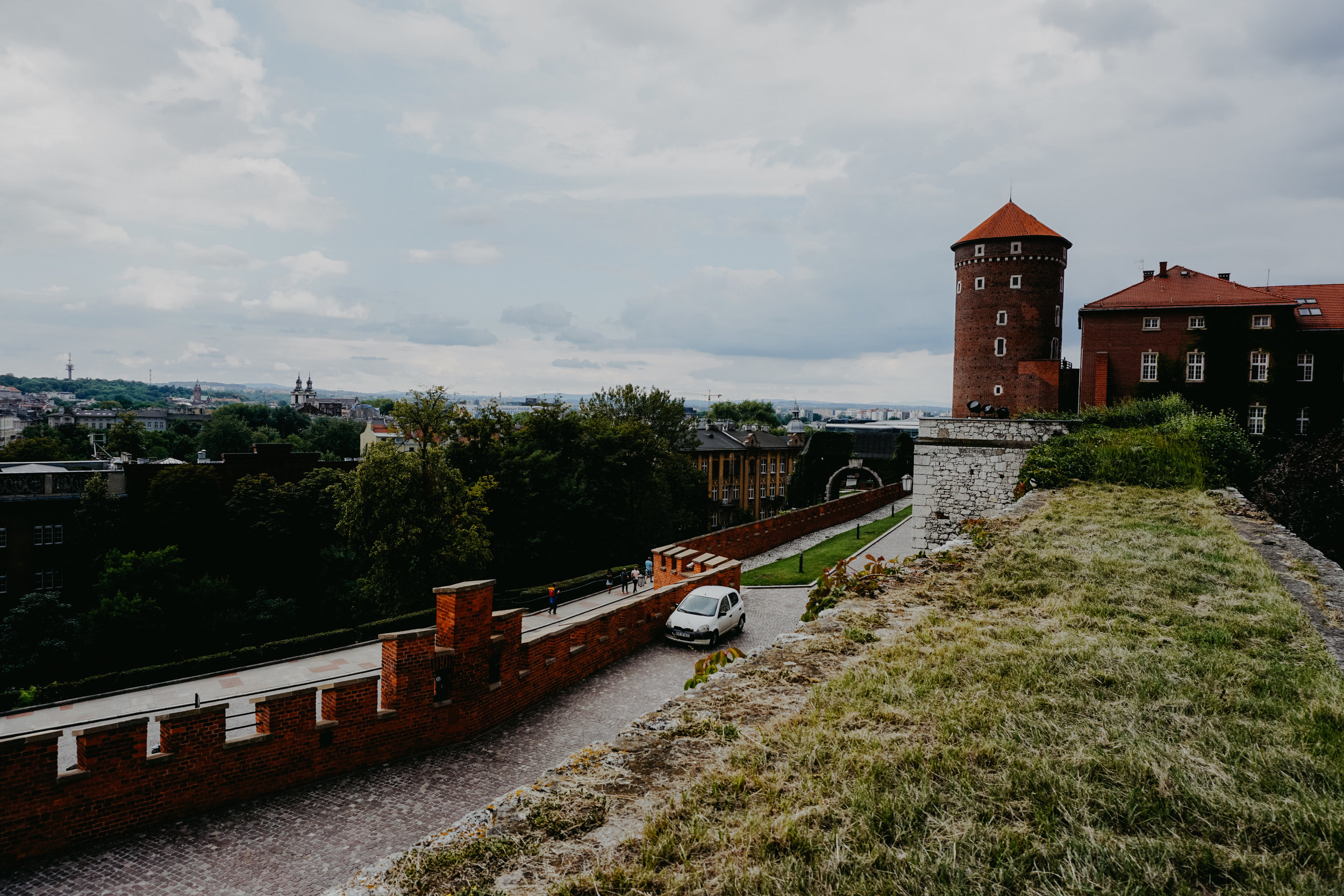
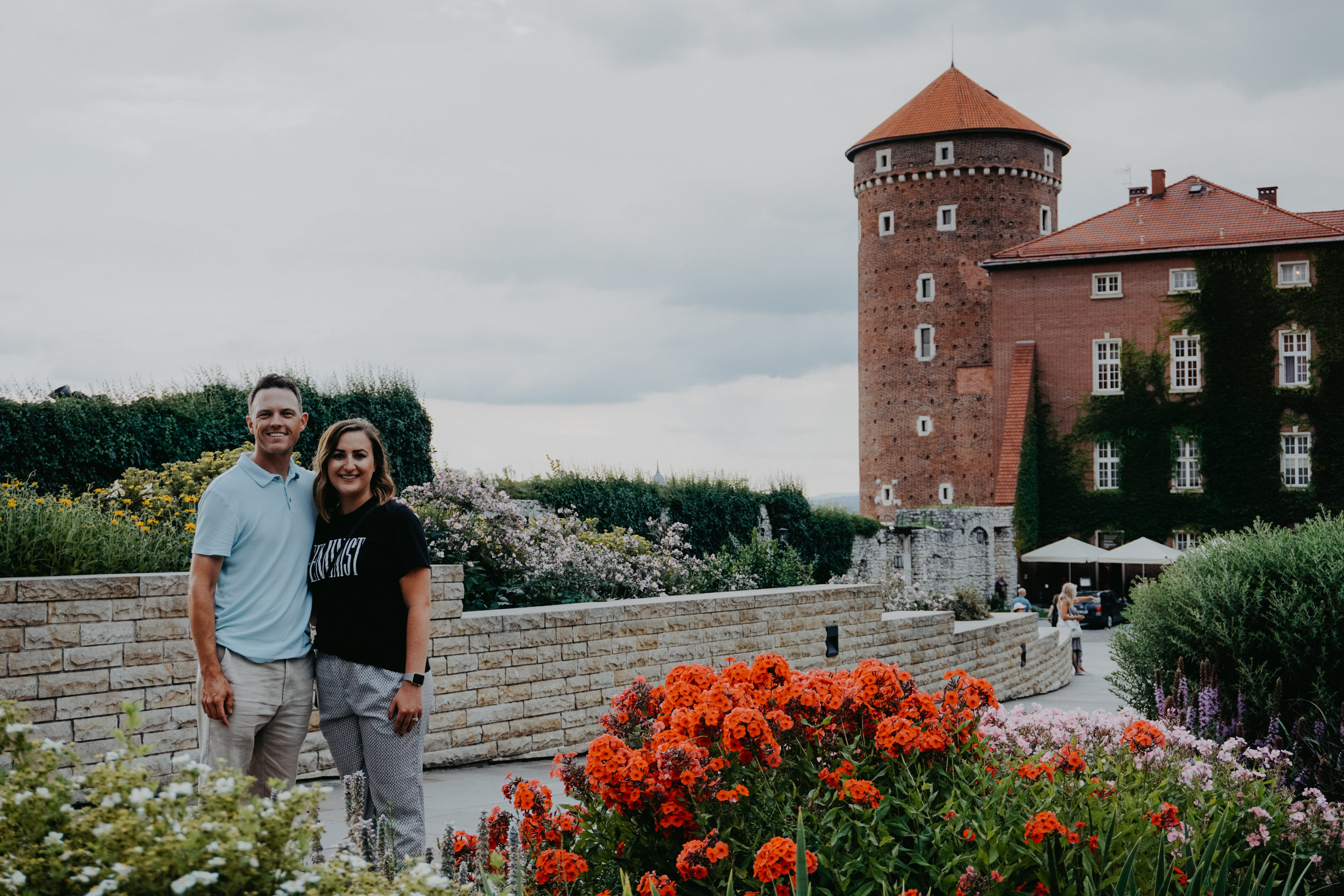
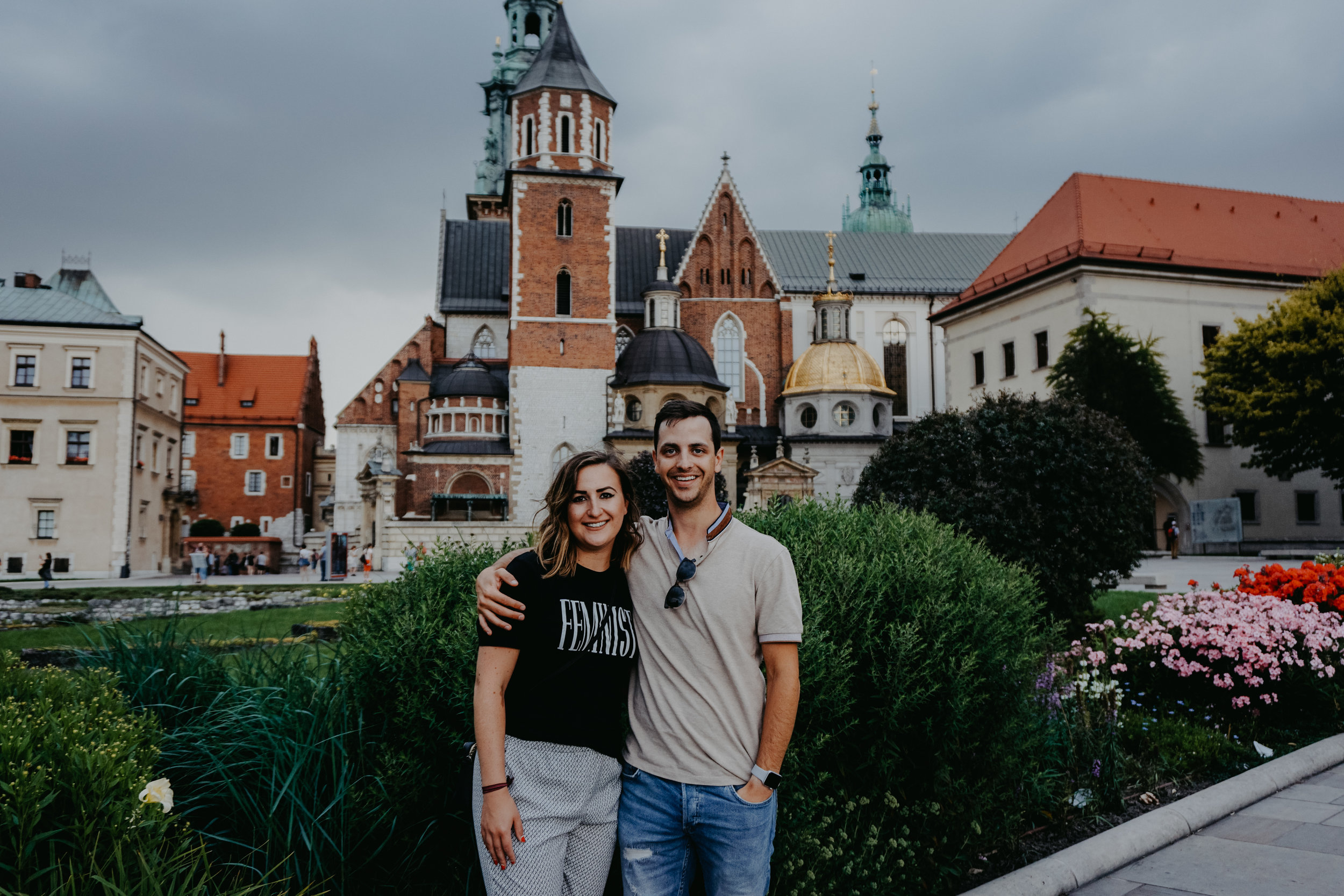
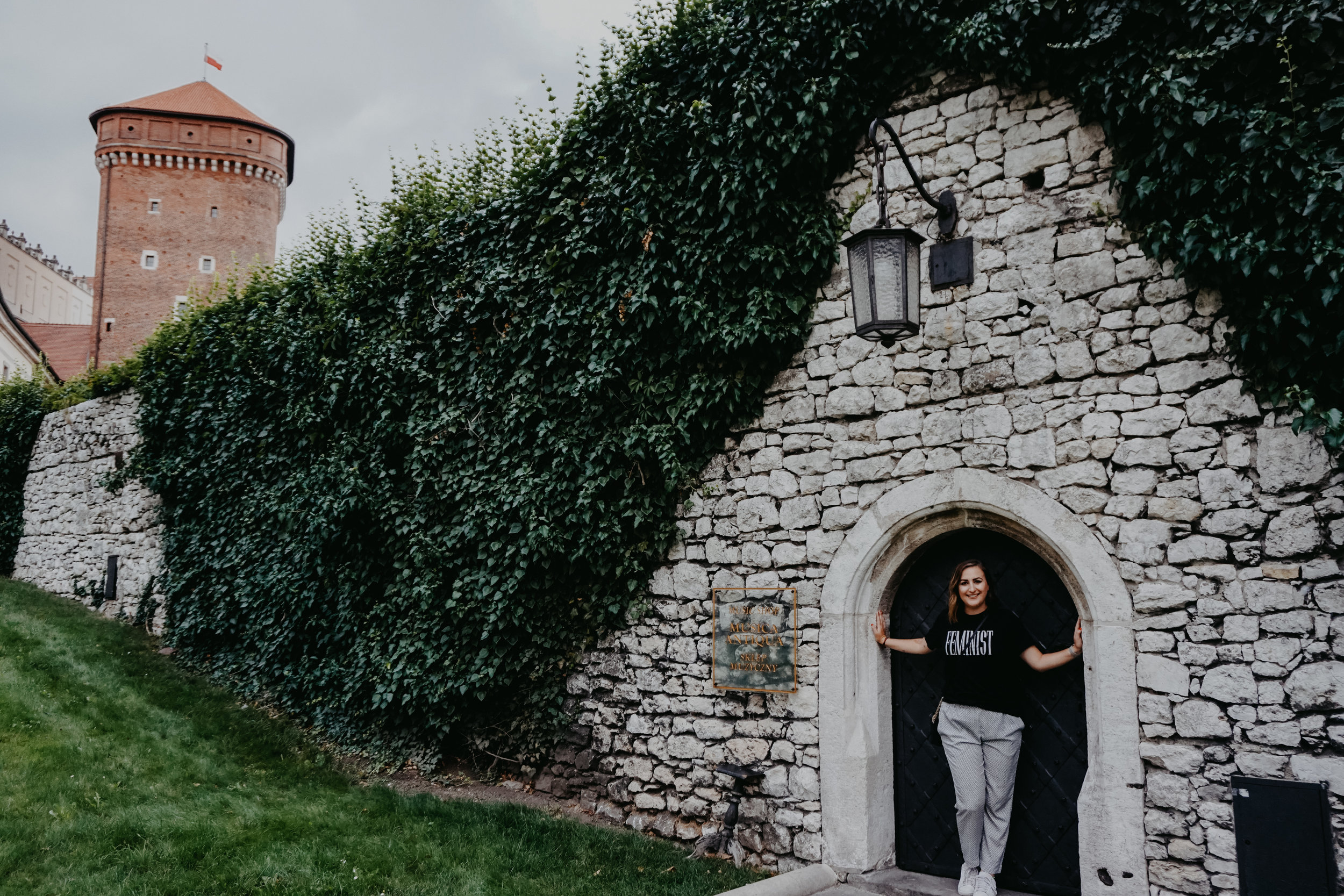

While we were at the castle, we got caught in a downpour, which is when we discovered that Kraków uses Uber and an app we use in Ireland called My Taxi. So we ordered a taxi under the cover of a guard station at the castle and were saved from the rain and taken back to our place to wait it out.
Once the rain dissipated and we felt rested up, the three of us decided to walk outside of the Old Town and head to the Jewish Quarter, known as Kazimierz. Historically, this area was the center of Jewish life in Kraków for over 500 years. Then, during WWII, it became the epicenter for the Jewish ghettos created by the Nazis. Following the war and the extermination of the Jewish population, the culture and heritage died with its people. Nowadays, Kazimierz has experienced a revival. It is Kraków's hipster neighborhood filled with character, fun bars, and even better restaurants. I'm so happy we went outside of the pristine Old Town filled with tourists and explored the more cultured Jewish Quarter.
There were a lot of hopping bars in the area and we decided to pop into one called Domowka. It was a boardgame bar, similar to Chatterbox in Minneapolis for those who are familiar. It was a chill bar where people came in groups to play their favorite board games from their childhood. We opted against playing a game and bellied up to the bar instead to chat with the bartender to learn a little about the Polish beers on tap. I normally don't drink beer, but for whatever reason I had it in my mind that Poland makes good beer, so I ordered a pint. I don't know. It tasted like my memory of playing beer pong in college... so... not great. Shawn was nice enough to switche beers with me because he got a pint of a beer that was a bit cloudier with a floral hint to it. I think we were both happy with the switch! Anyway, it was a fun place to stop and have a pint and feel a little bit like a local. Plus, our three beers cost less than $9 total!
We were in a bit of a pickle leaving Domowka because it was getting later in the night and restaurants had started to close their kitchens. Lucky for us, a fanastic Japanese restaurant, called Edo, was still open and serving food at 10:00 p.m. I know, I know, Japanese in Poland? Yes, because 1) our options were slim; 2) we had already eaten pierogis and breaded pork; and 3) I'm always down for an Asian fusion experience. We ate edamame and chicken, sushi, ramen, and curry and it was all fantastic! Funny side note: the following day, we asked our Auschwitz-Birkenau tour guide, who lives in Kraków, for restaurant recommendations and he told us Edo. So we felt pretty satisifed to tell him we had already eaten there! :)
Day 2 - Saturday, July 14th:
We woke up early on Saturday morning for our private guided tour of Auschwitz-Birkenau. Several weeks before our trip, we had gotten the recommendation from some of Chris' co-workers to experience the concentration camps with a private guide named Wojtek Smolén. Little did we know when we booked the tour with Wojtek that he was the guide of Auschwitz-Birkenau. Not only has he been giving guided tours since 1994 and participated in educational seminars all over the world, including Yad Vashem Institute in Jerusalem and the Holocaust Memorial Museum in Washington D.C., but his father survived four years as a political prisoner at Auschwitz. His father later became the director of the State Museum at Auschwitz and his mother worked at the museum as well, so Auschwitz was and is deeply embedded in Wojtek's life. He knows the ins and outs of the death camps and all of its dark history.
Wojtek picked us up at 8:00 a.m. with a driver and we made the hour-long drive west to Auschwitz-Birkenau. When we arrived at Auschwitz, we were able to skip the lines and get started right away. Wojteck gave us each a headset, which proved useful in that he was able to speak into his microphone and we were able to hear him no matter how many people were around, or if we were hanging back to take pictures.
We started our tour at Auschwitz going through the infamous gate that reads "Arbeit Macht Frei" which translates to "Work Sets You Free". If you have visited Dachau before, you have seen a similar gate. This message was to give hope to the people who entered that if they worked hard, they could earn their freedom. #lies
As you will see in the pictures, Auschwitz is much different than what people think. Again, if you have visited Dachau, or have studied the Holocaust, when you think of a concentration camp, a lot of us envision endless rows of wooden barracks and barbed wire fences. Auschwitz is not that. The small camp is filled with two-story brick buildings and looks much more civilized -- I hate using that word because nothing civilized happened at this place, but from the outside, its appearance is less barbaric... if that makes sense?
Auschwitz opened in 1940 and started out much smaller than what can be seen today. The purpose of the camp in the beginning was to incarcerate political prisoners and to supply forced labor to carry out work for the Nazis / SS. It wasn't until Heinrich Himmler visited Auschwitz that the much larger idea of using the camp for mass extermination began.
So what did go on inside those two-story brick buildings? They were used as administrative offices, housing for prisoners, jail cells, and a place to conduct medical experiments. The museum, today, has kept a lot of these buildings in tact to show how it would have looked during the camp's years of operation, but some have been turned into exhibits. One of the most moving exhibits is the piles of shoes, luggage, eye glasses, hair brushes, personal effects, etc. belonging to the people who were imprisoned. It not only gave us a sense of how many people were sent there, but again, it was a representation of the hope that people had when packing to leave their homes and then the reality of these people being stripped of everything. When people were ordered to Auschwitz, they were told to pack all of their valuables and bring personal belongings thinking where they were going that it was all going to be okay. Then, upon arriving at Auschwitz, they were stripped of their belongings, clothes, hair, and families. One of hardest things for me to see was the massive pile of shaved hair that was left over from the women who had their heads shaved. To see their actual hair, their identity, their femininty laying there from a few quick buzzes of the head put a lump in my throat and tears down my face.
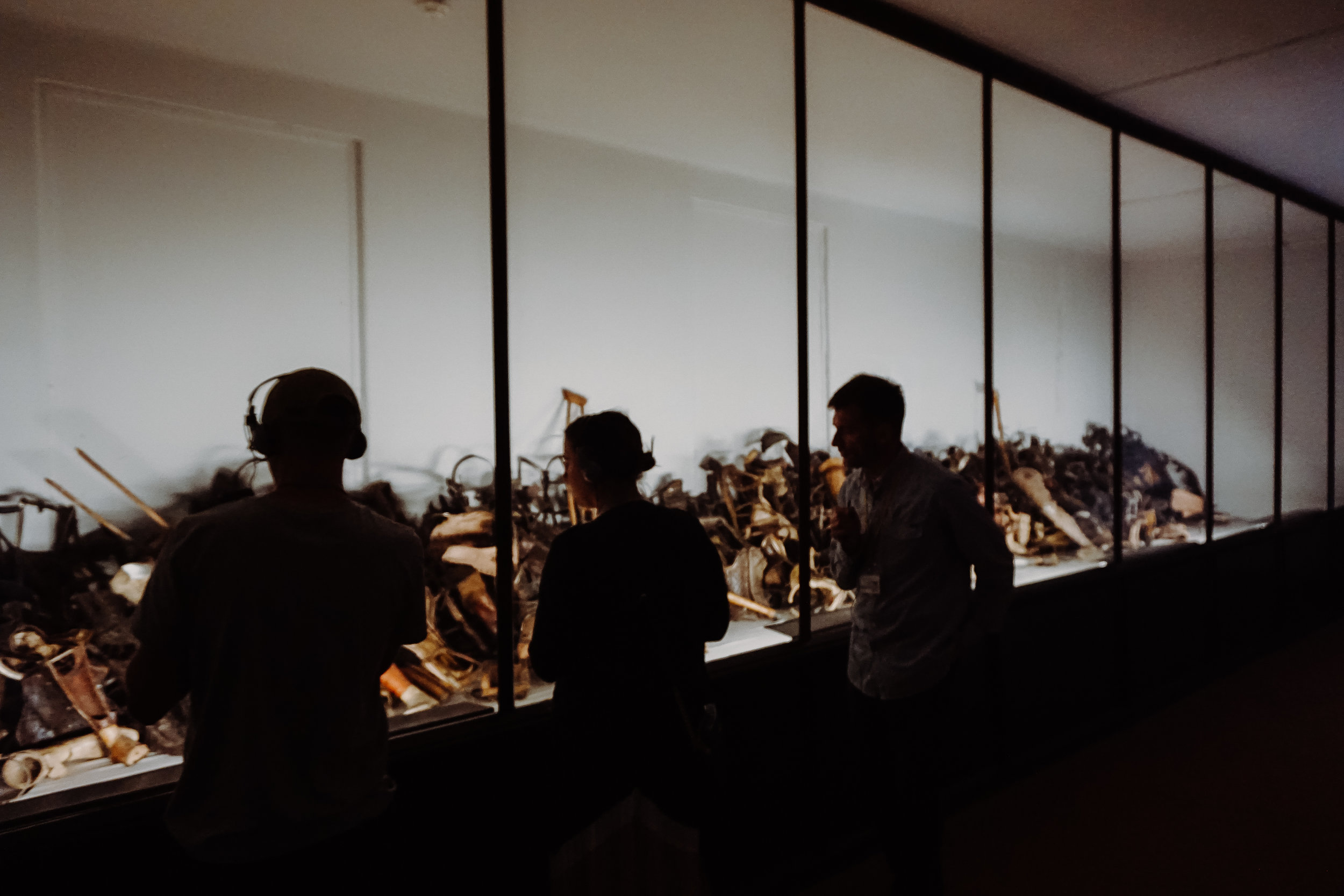


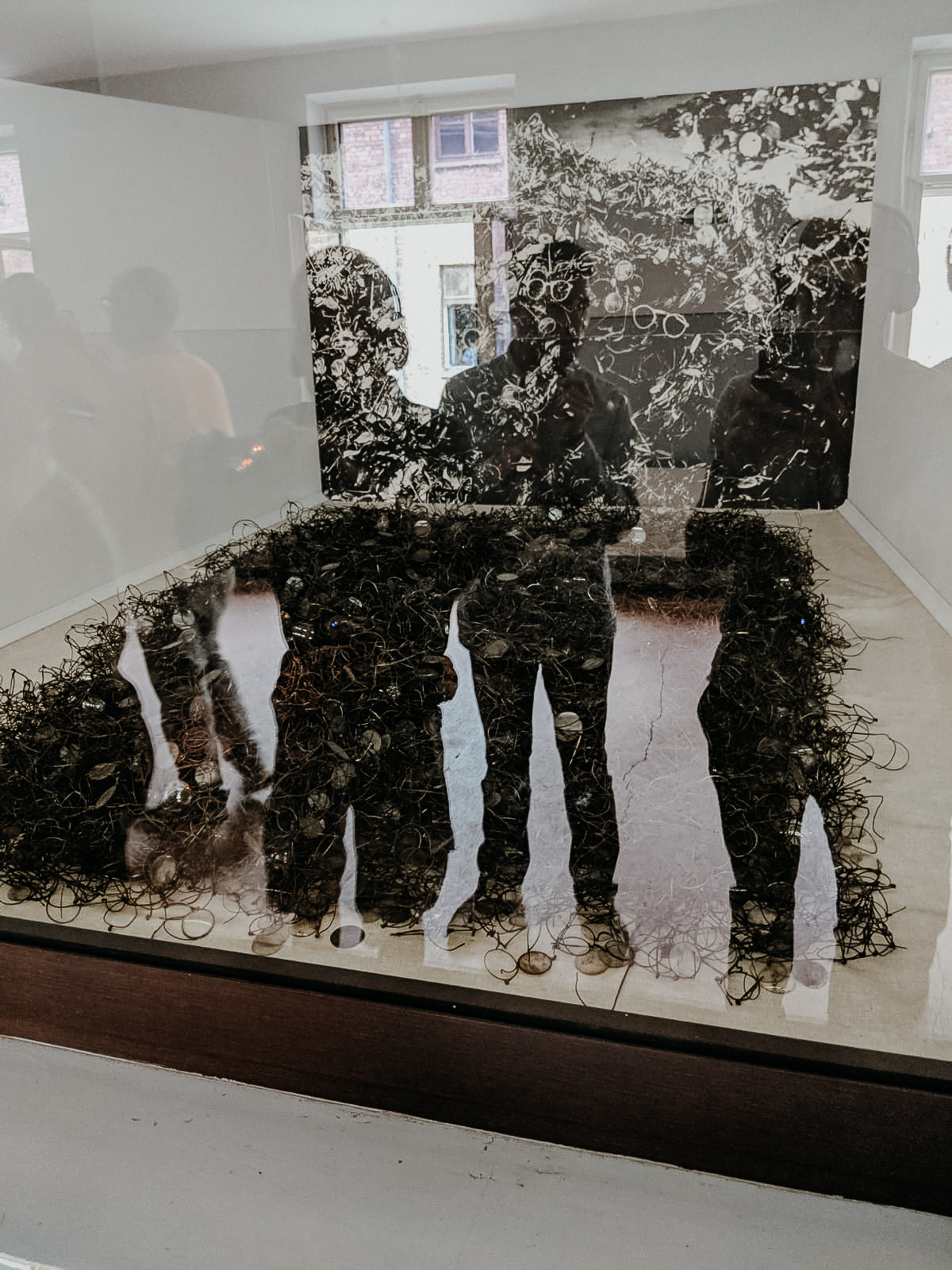
The other exhibit I'm happy Wojtek showed us was one put on by the Yad Vashem Institute in Jerusalem. I'm not sure many people know to go to it because there weren't many people there and it wasn't exactly advertised, but it was fantastically put on. You start in a room that shows pictures and videos of Jewish life all over Europe. Then, you move to a room showing interviews with survivors. Wojtek said it would be easy to sit there and listen to their stories for hours, so he allowed us to listen to a few of them before we had to keep moving. The next room was an art exhibit where an artist took drawings by the children who were at Auschwitz and re-created their pictures on the walls. Some pictures were of their families and others were soldiers pointing guns at prisoners. It was so surreal and sad. At the end of the exhibit is a massive book that the Yad Vashem Institute has put together. They have been able to figure out the names of 4 million of the 6 million people who were killed at the concentration camps. 4 million names. This book is huge, as you can imagine, and an eye-opening way to visualize the monstrous murdering that took place.
I don't know what came over me in that moment, but I felt this sudden urge to look for my last name in the book. In all my years of studying the German language and German history, it never occurred to me that I could have very distant relatives who could have been killed at a concentration camp. If I'm being brutally honest, I've always wondered if any of our distant relatives were on the other side of things, if they were Nazis. My grandpa was Lutheran, and I grew up Catholic, so I never wondered if we had Jewish blood. So to my surprise, there was nearly an entire page of Engelhardt names in the book. And not variations like Engelhard, or Engelhart. Engelhardt. It was like I got punched in the gut. Could I be distantly related to these people? Engelhardt isn't a common last name, so it's hard to push away the idea that maybe I am. Some of my aunts and uncles just visited us in Dublin and they told me that my great-grandfather emigrated from Germany to the United States, and that my Grandpa Engelhardt thought our family heritage was Jewish. So it doesn't seem too far off. The names in that book have left us intrigued and yearning for more information about our family and heritage.
We spent the entire morning and early afternoon at Auschwitz before heading to Birkenau. Before moving on to Birkenau, here is our collection of photos from Auschwitz. Below, you will see pictures of the buildings, gravel roads, the rooms where people would sleep on nothing but blankets, wash room, pile of empty poison canisters that were later used in the gas chambers, the site of Auschwitz's Nazi commanding officer Rudolf Höss' hanging after he was sentenced to death at the Nuremburg trials, and the inside of the first experimental crematorium on site.
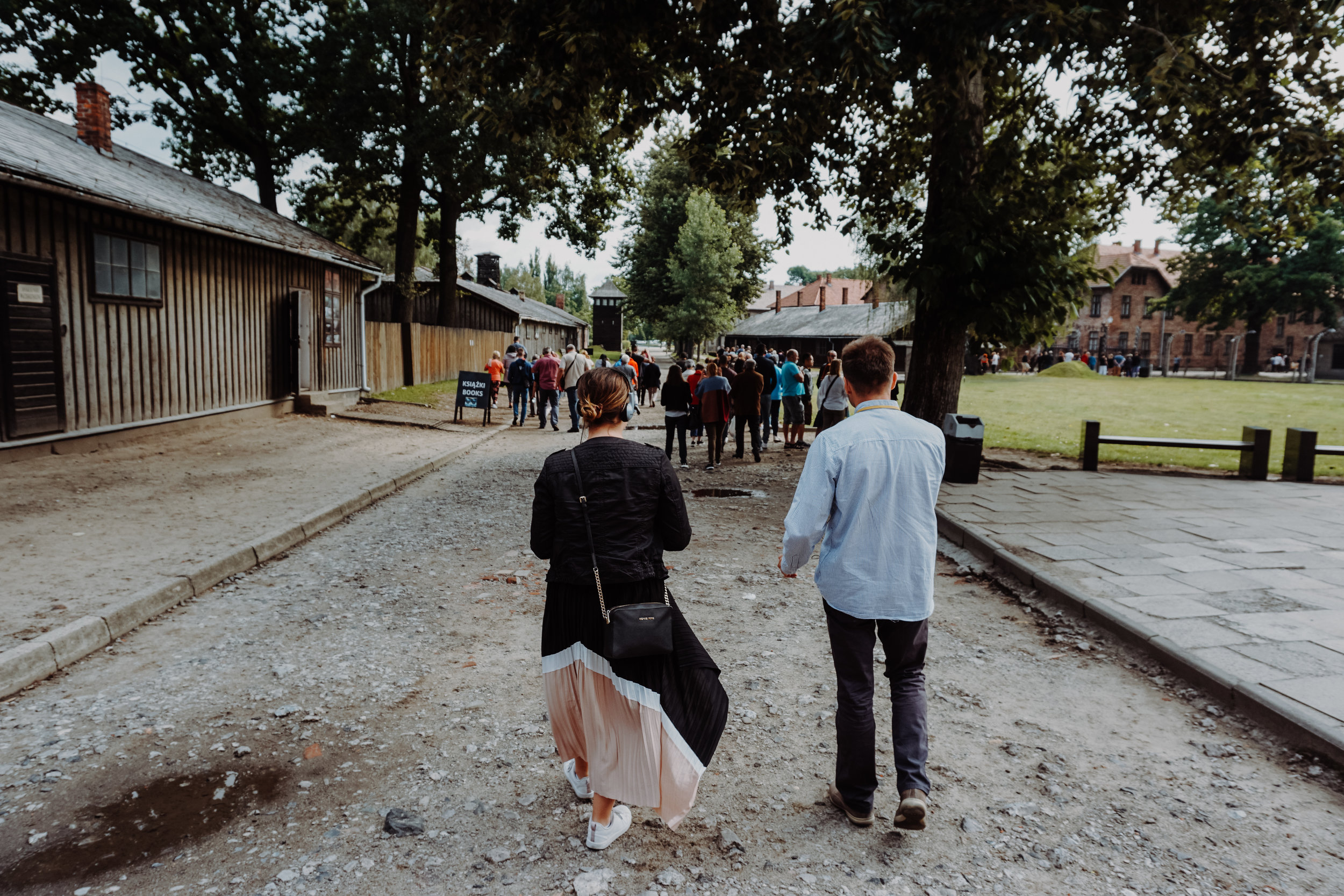
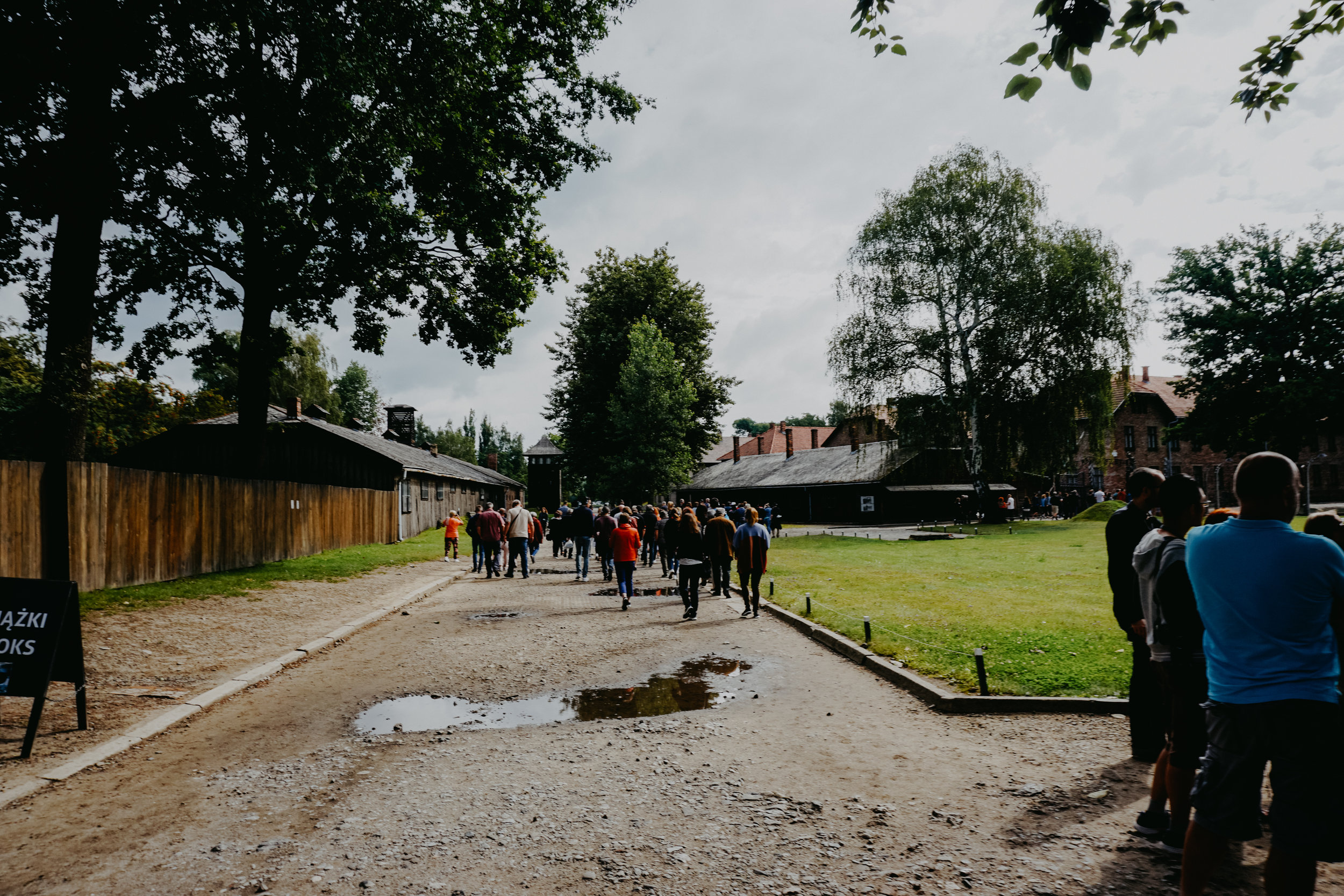
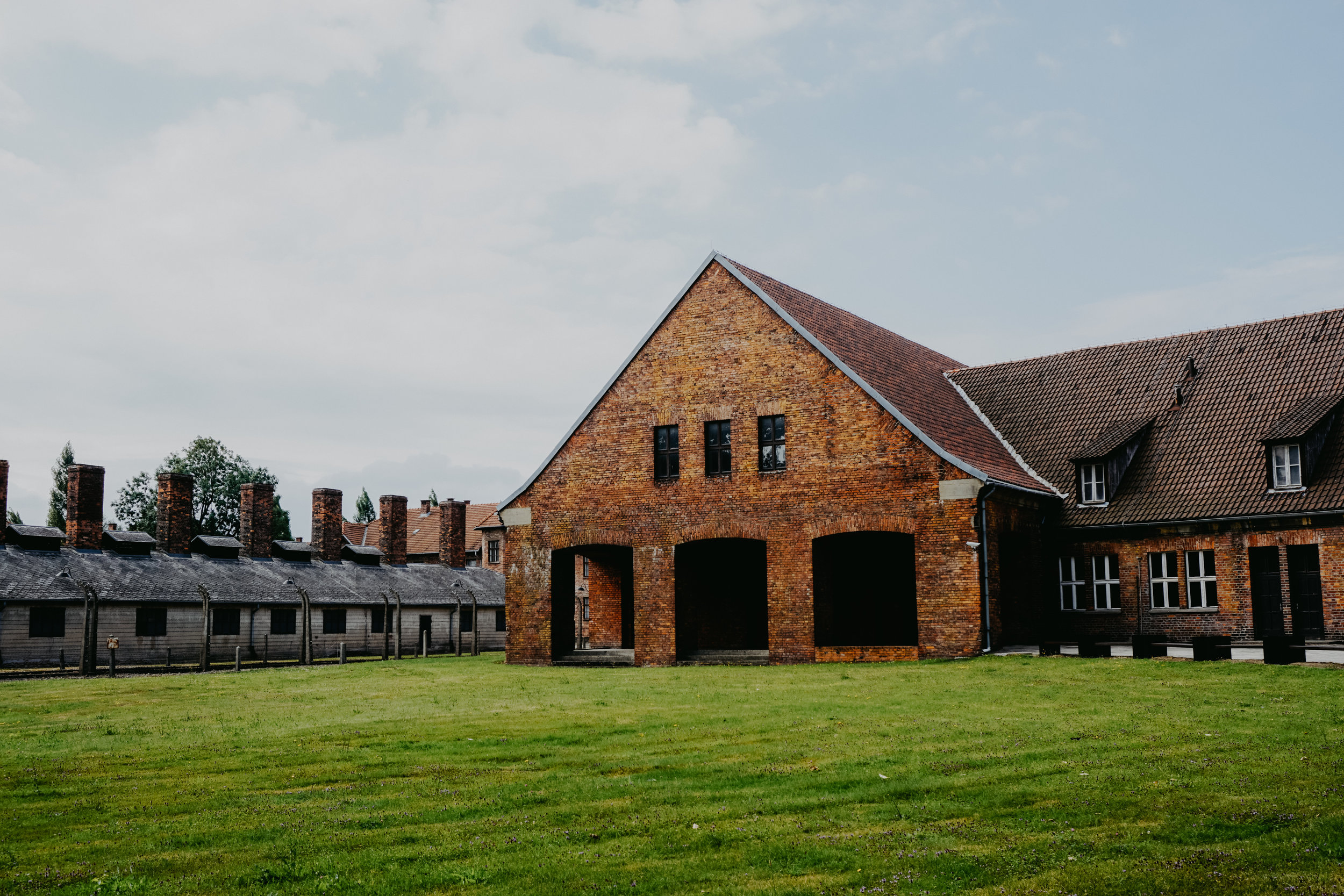

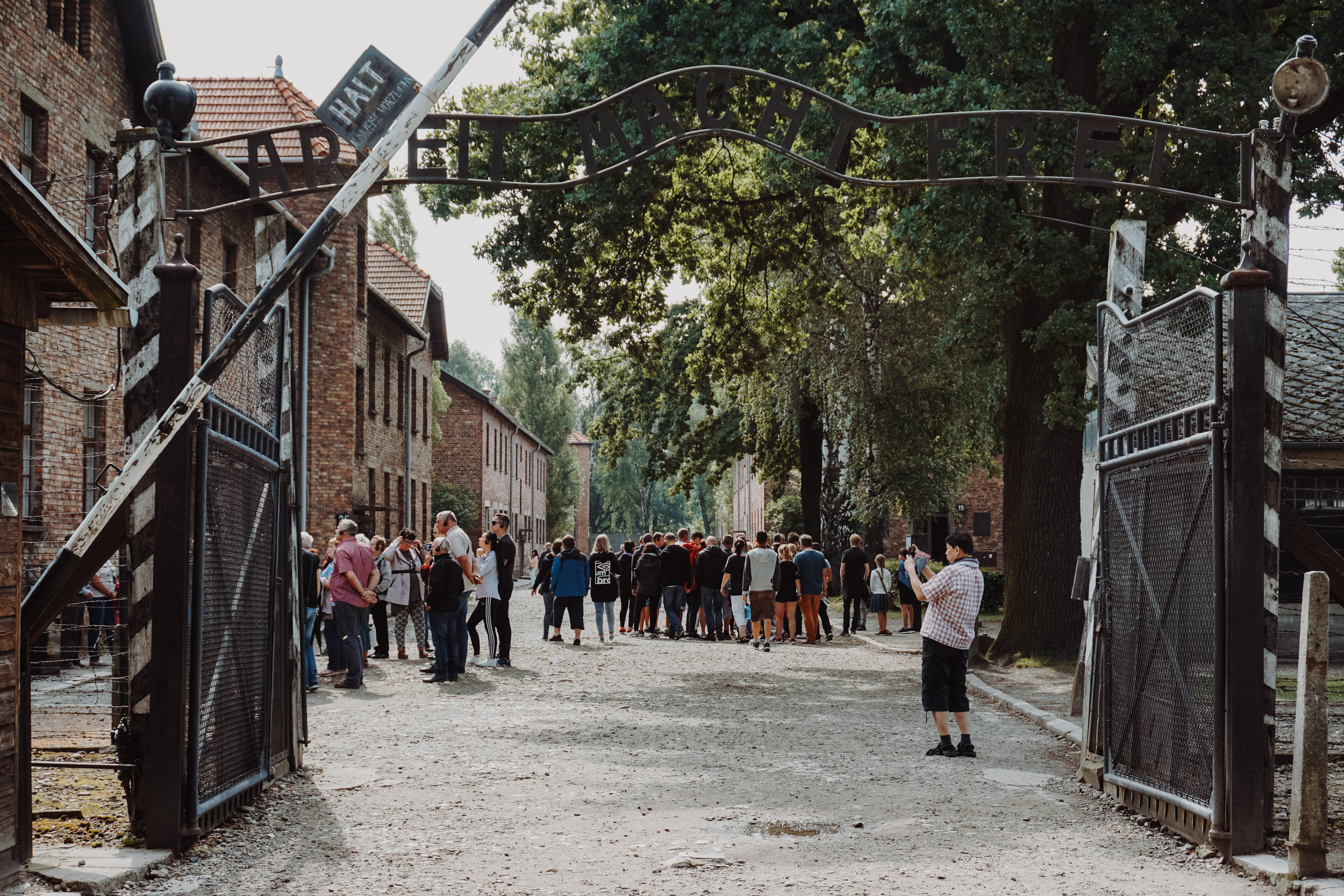
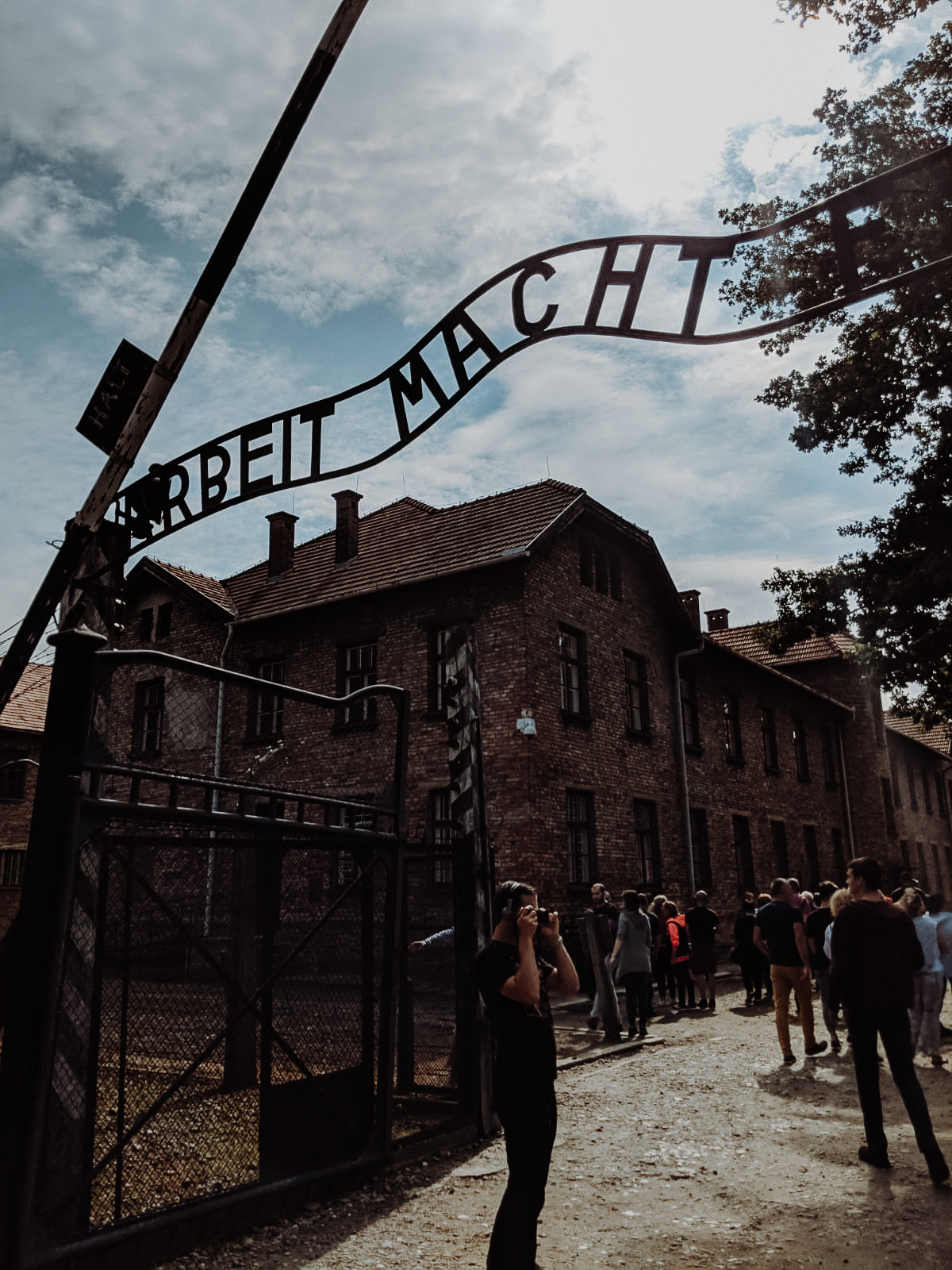

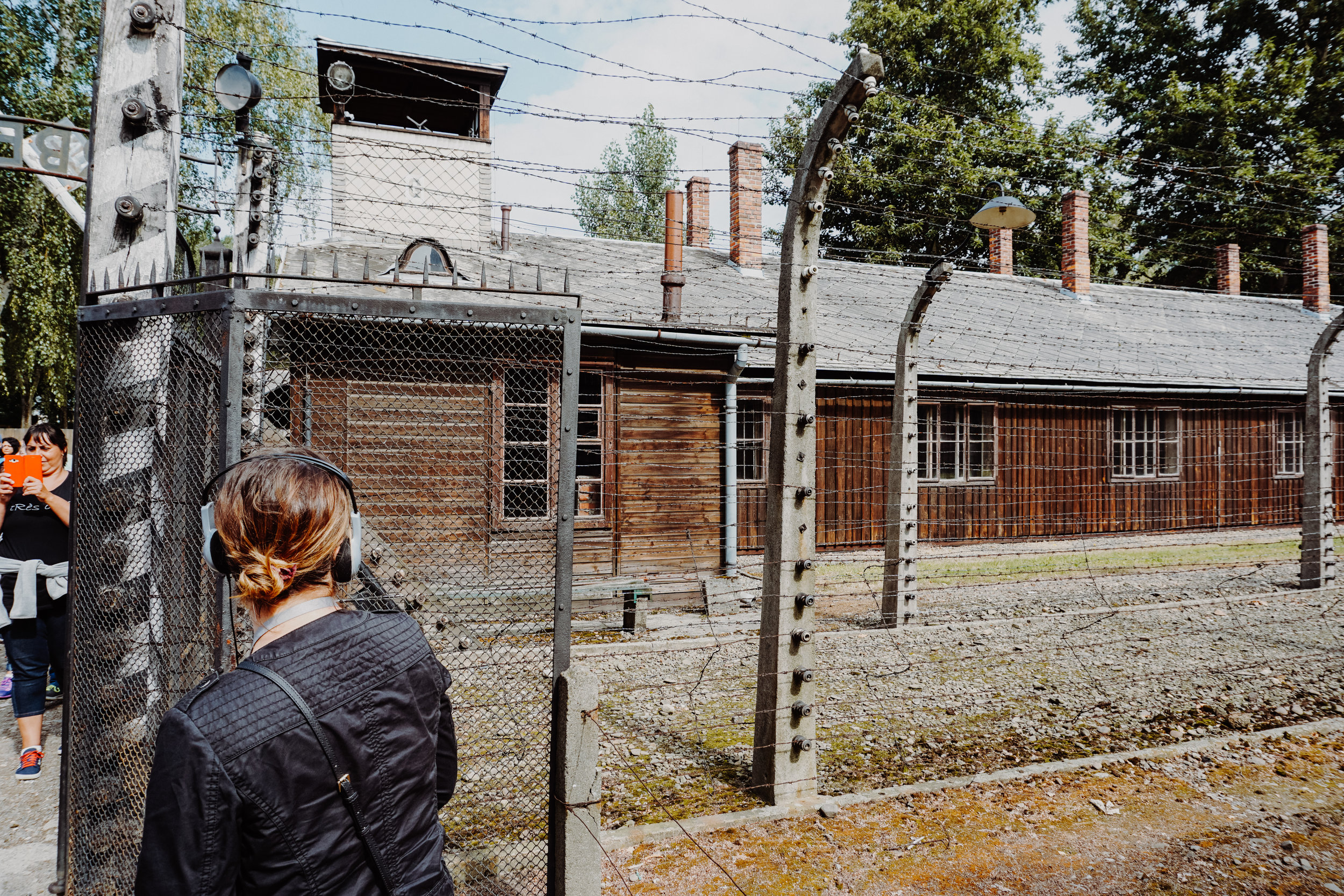
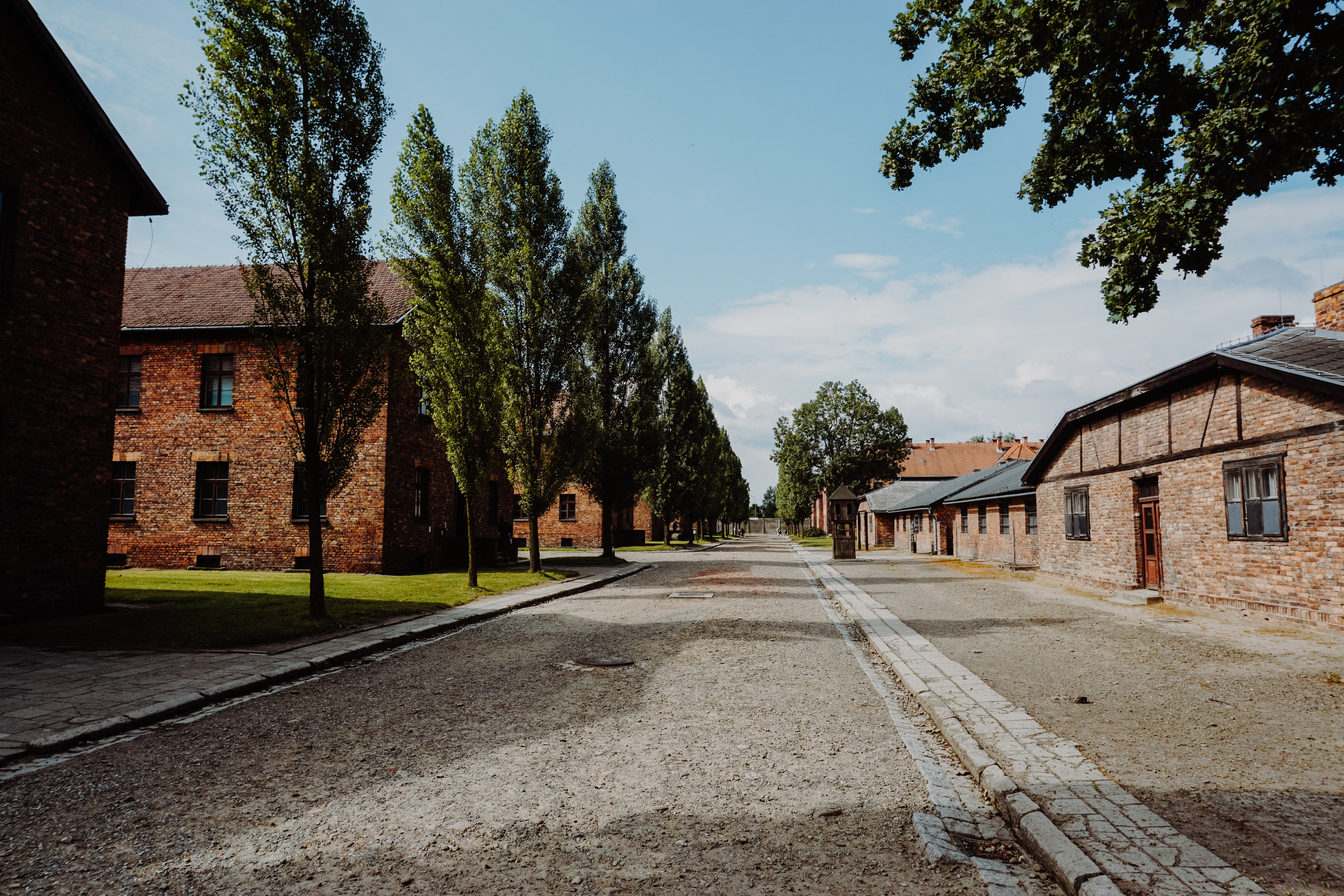
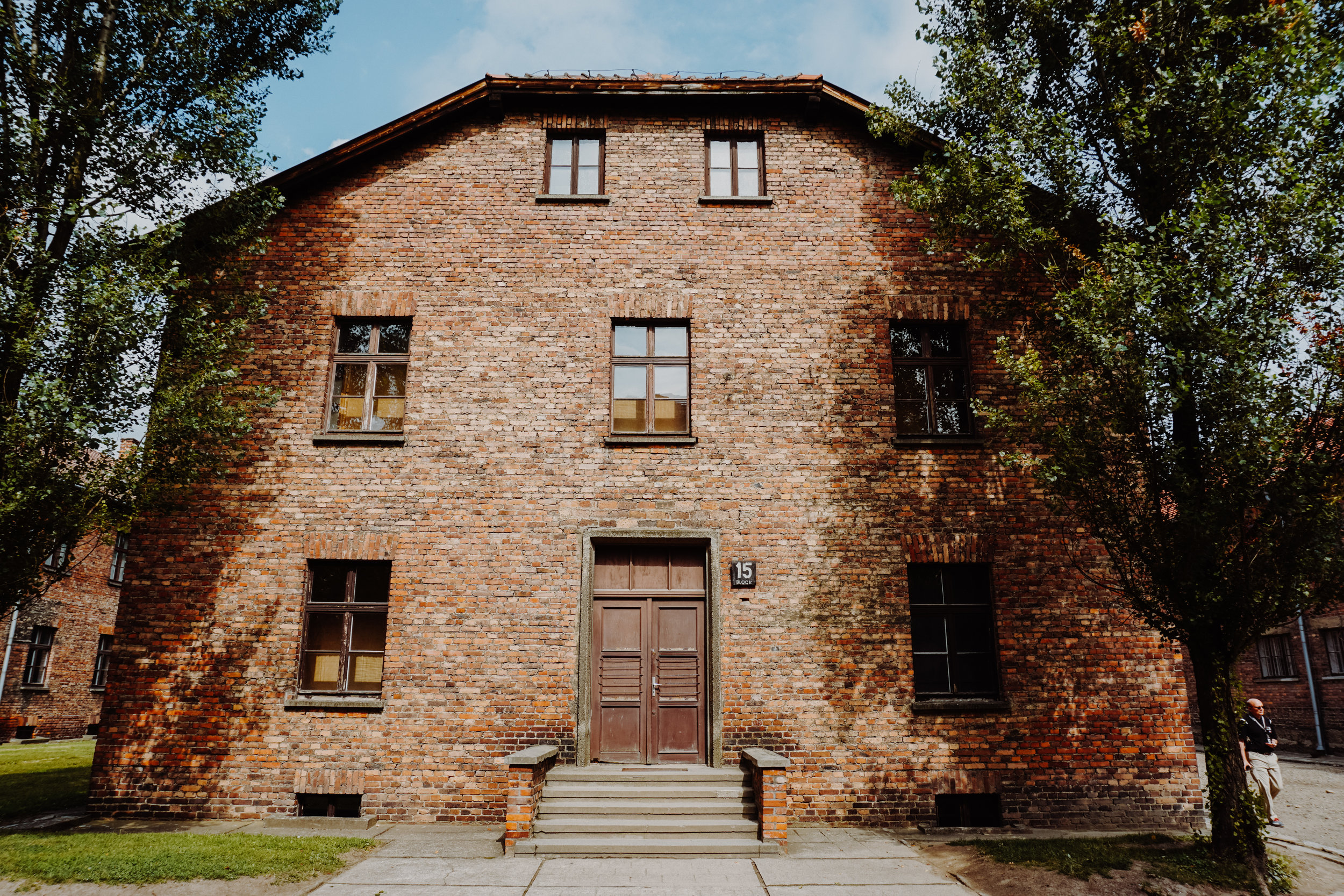
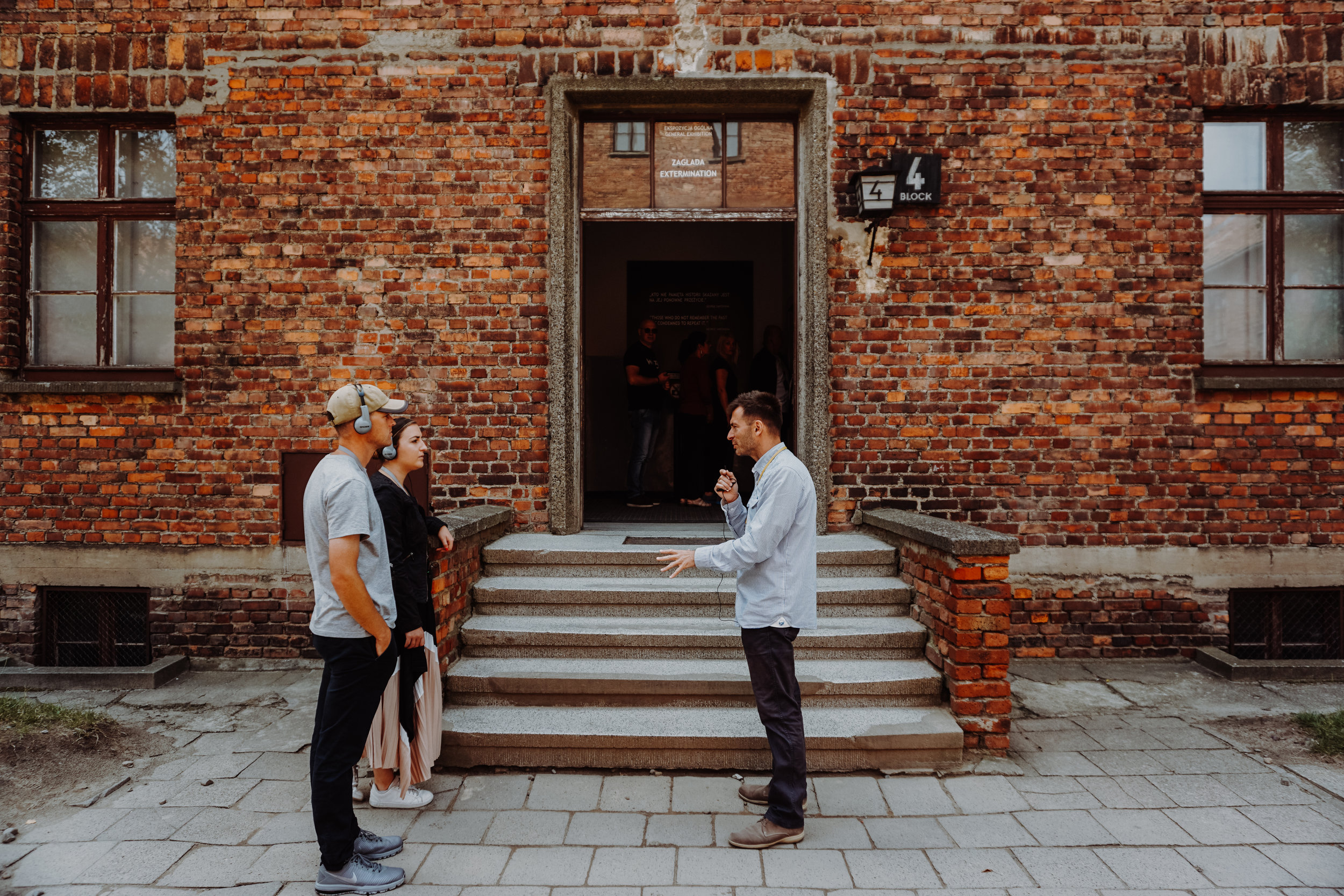
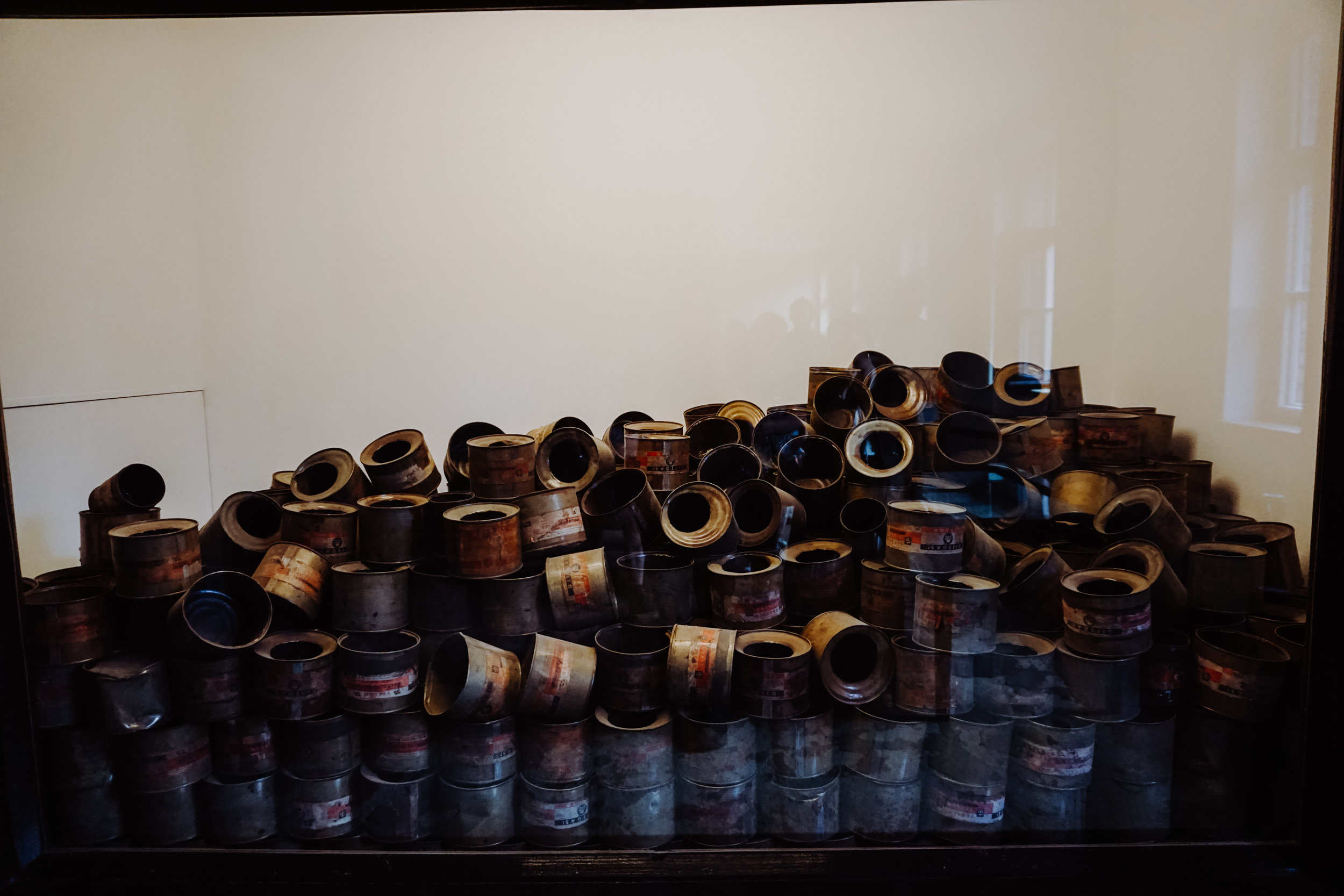


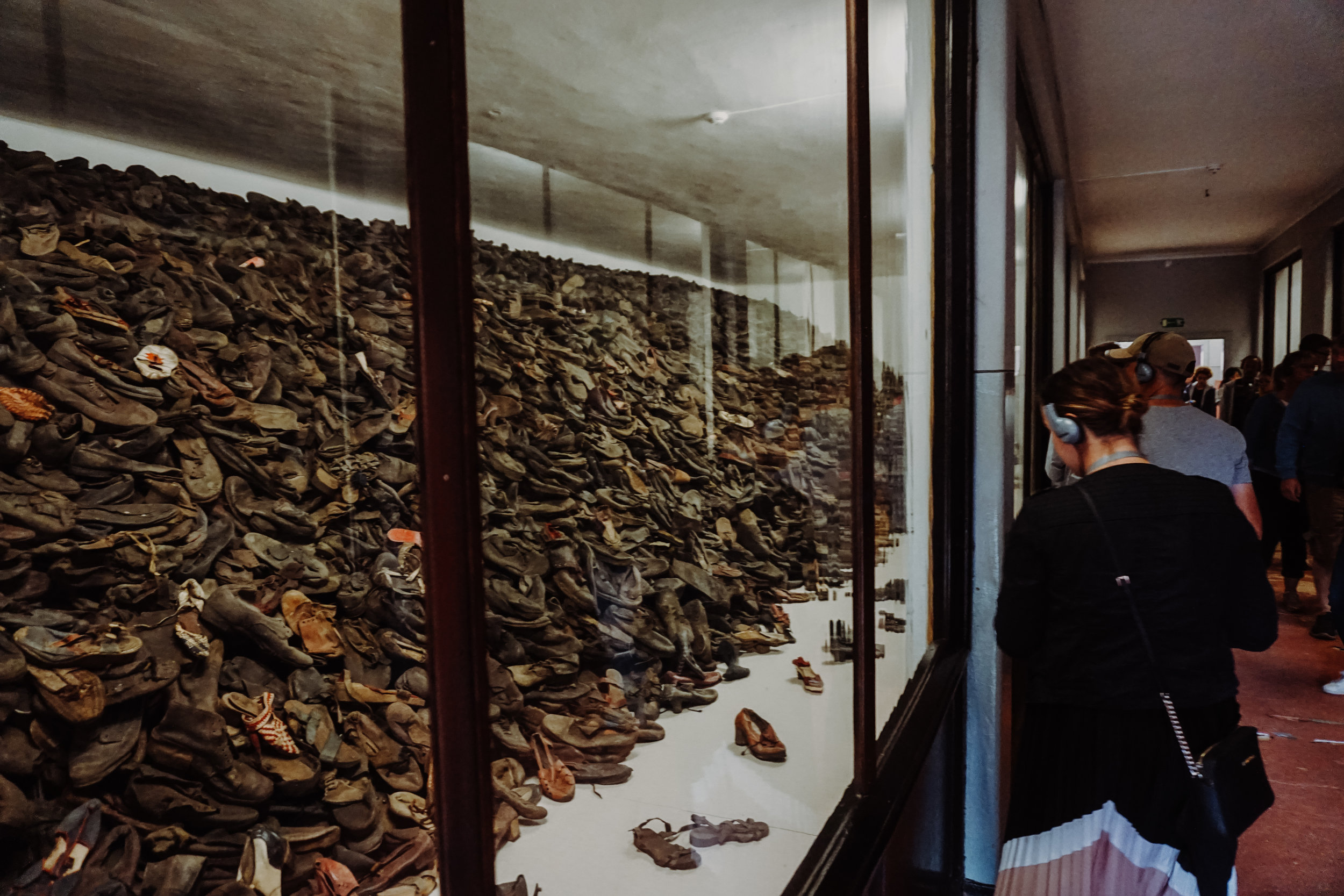
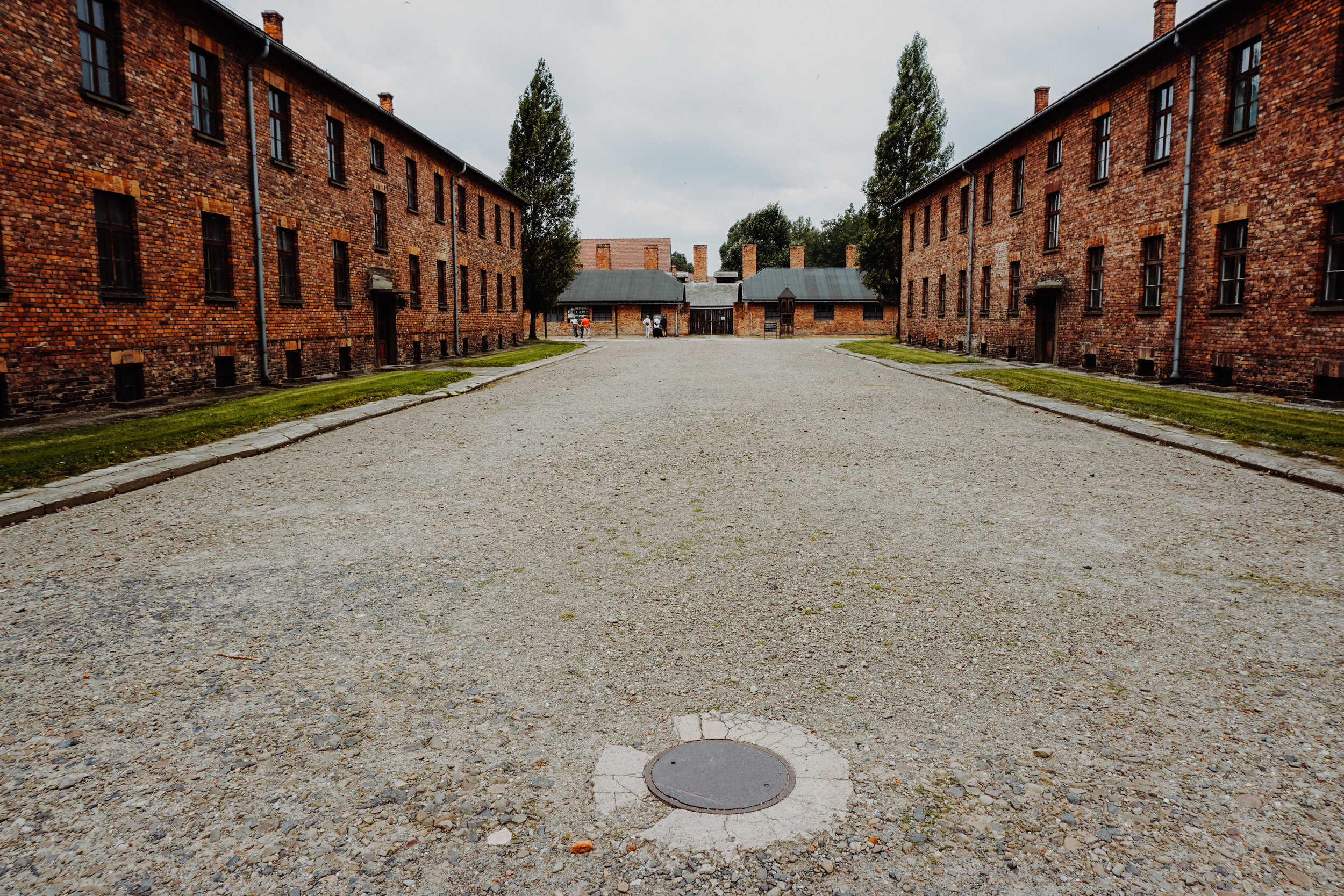
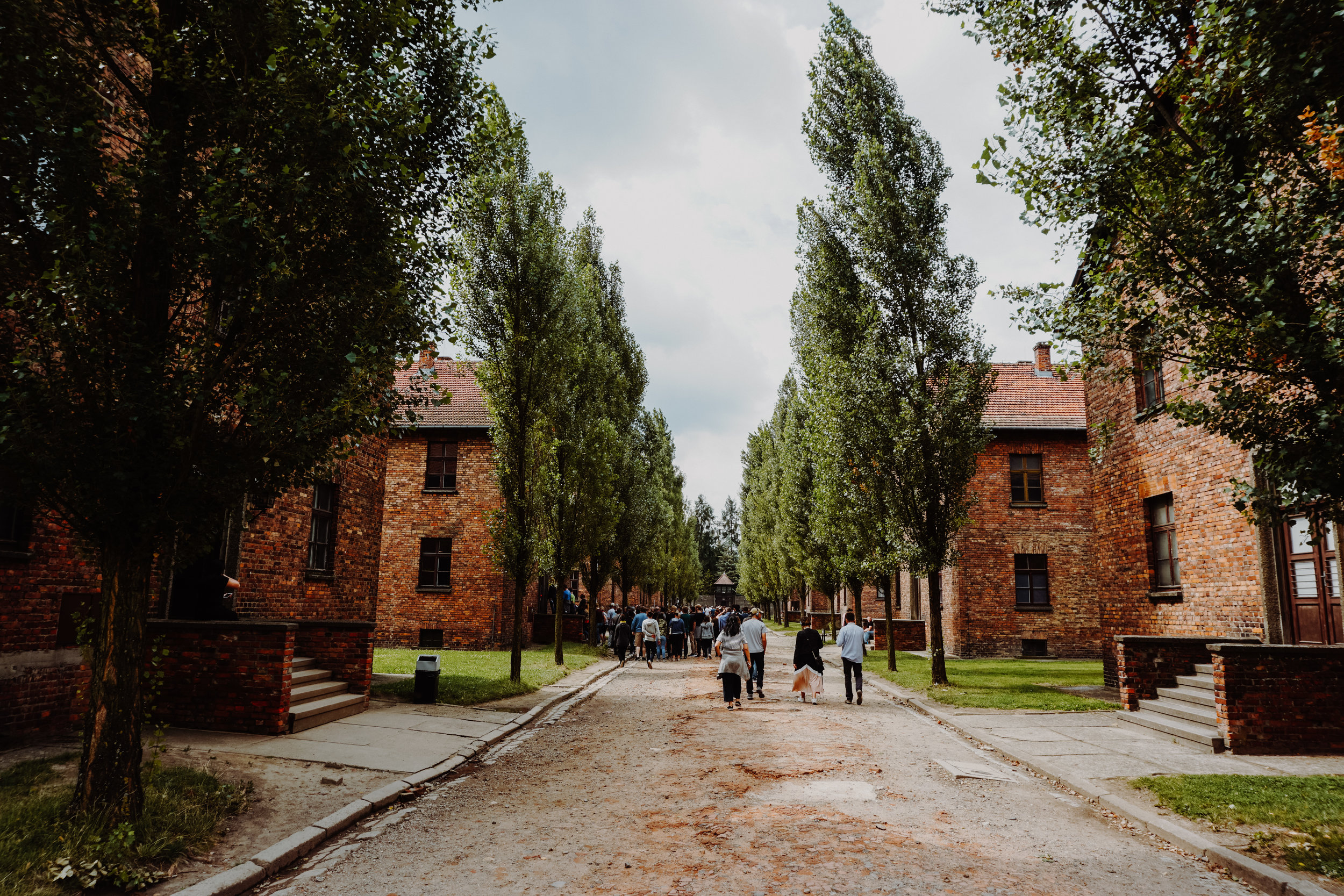

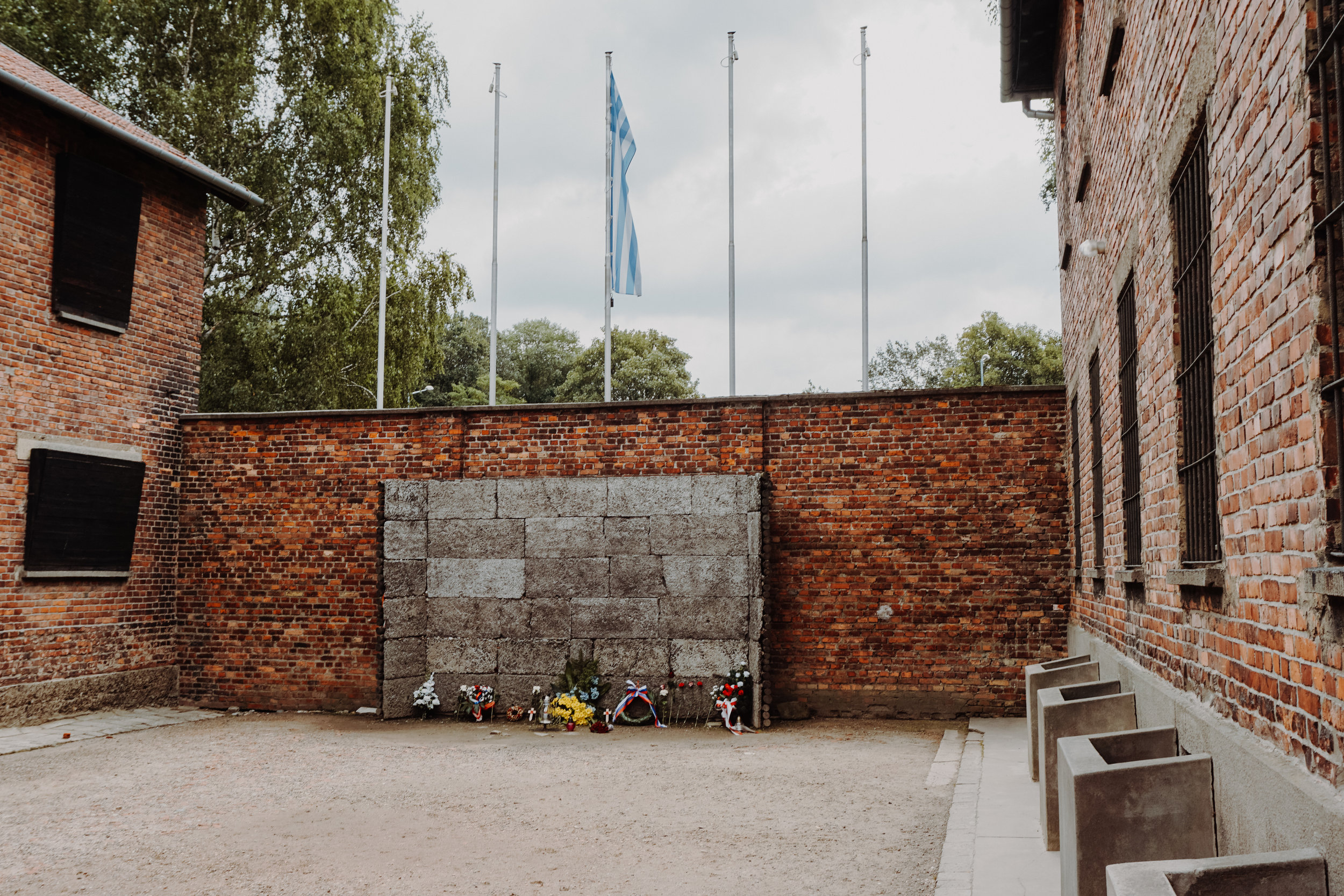
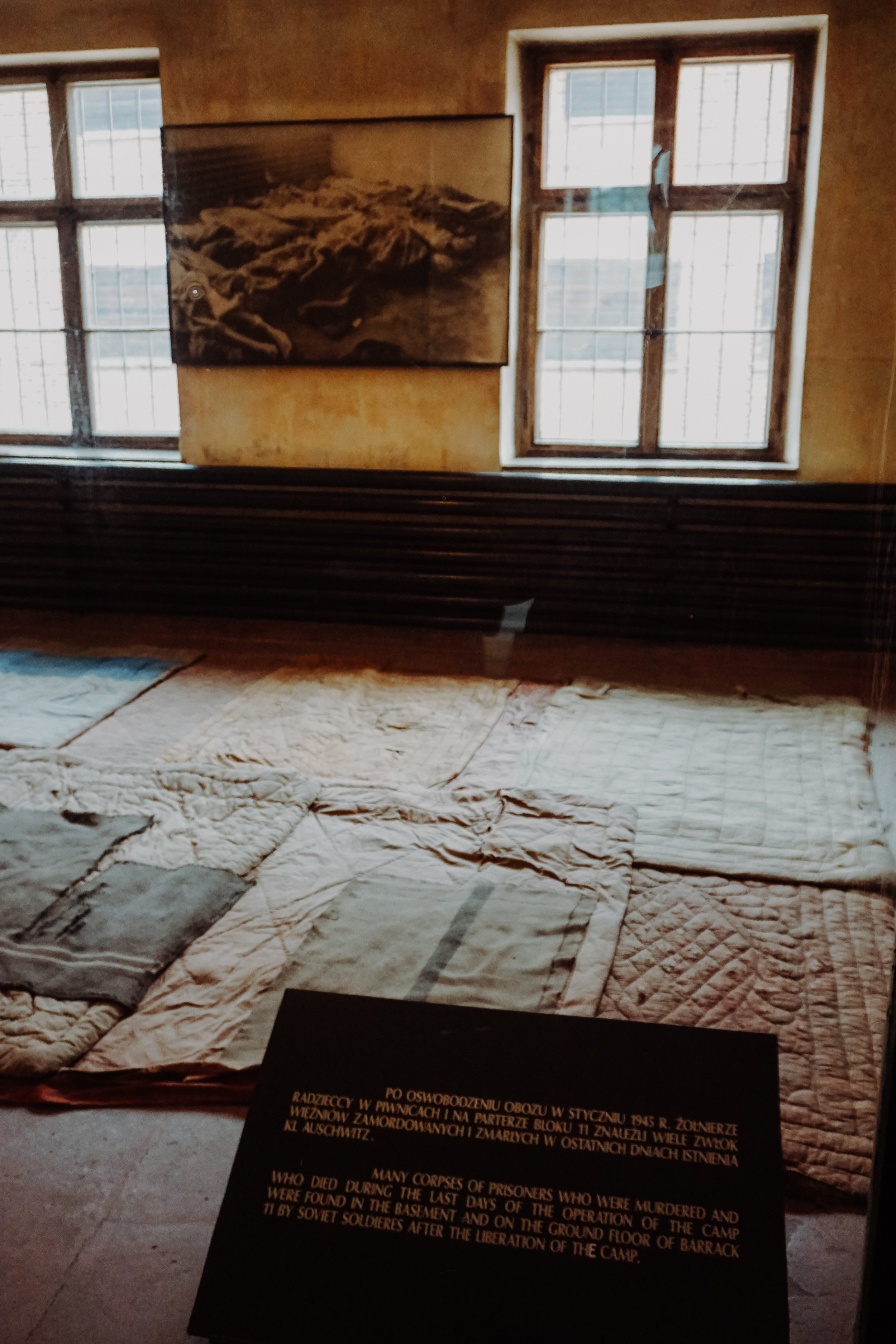
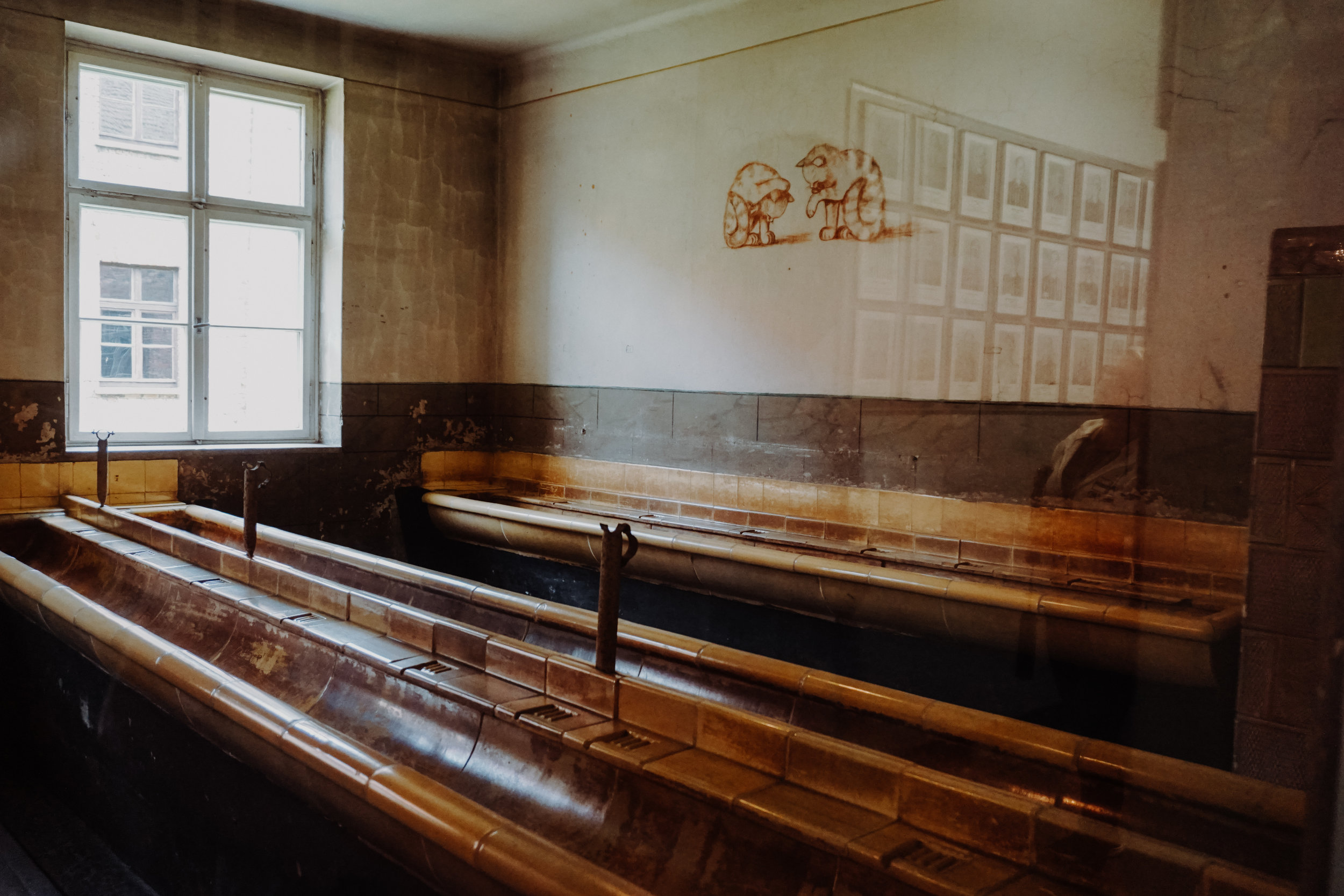
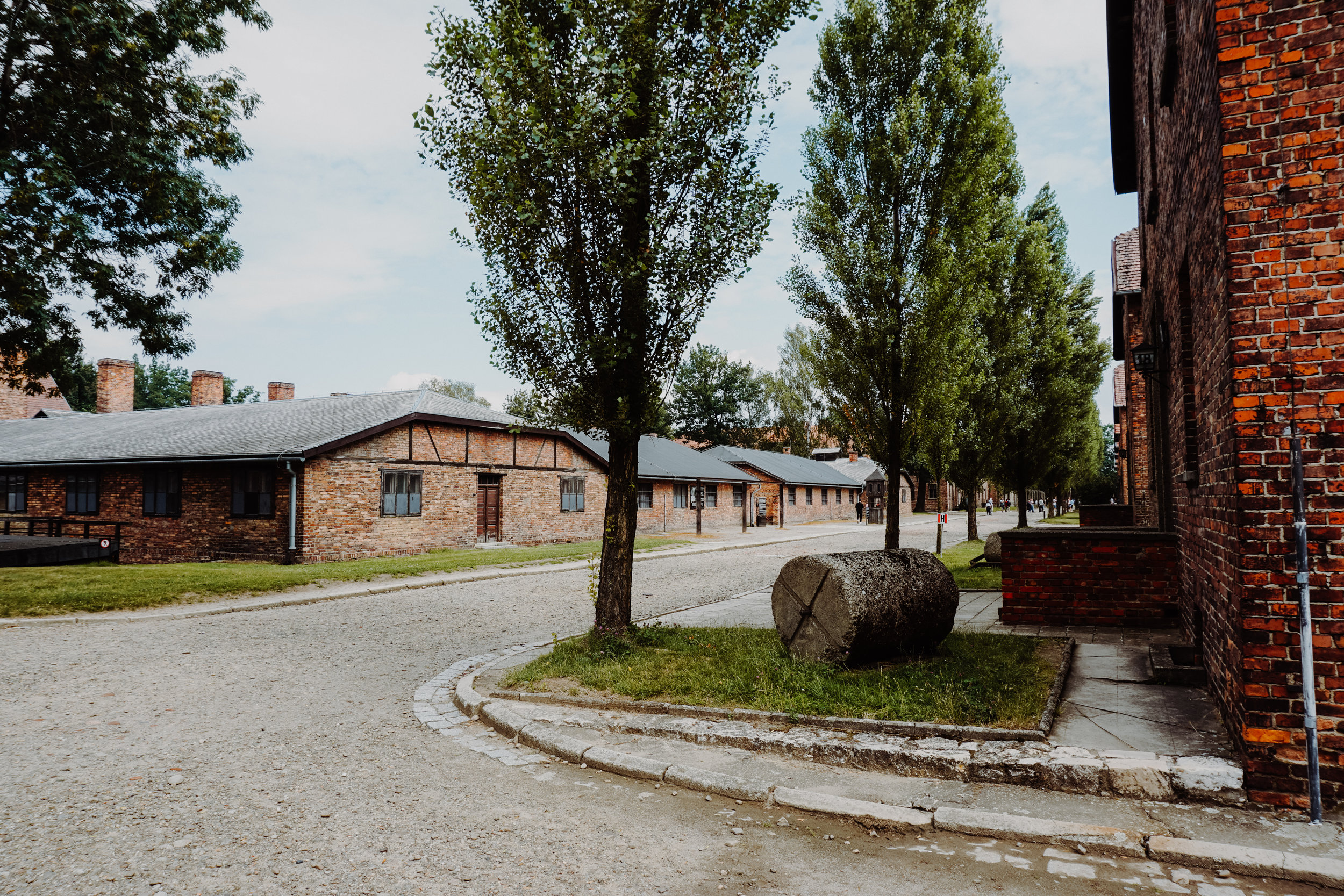
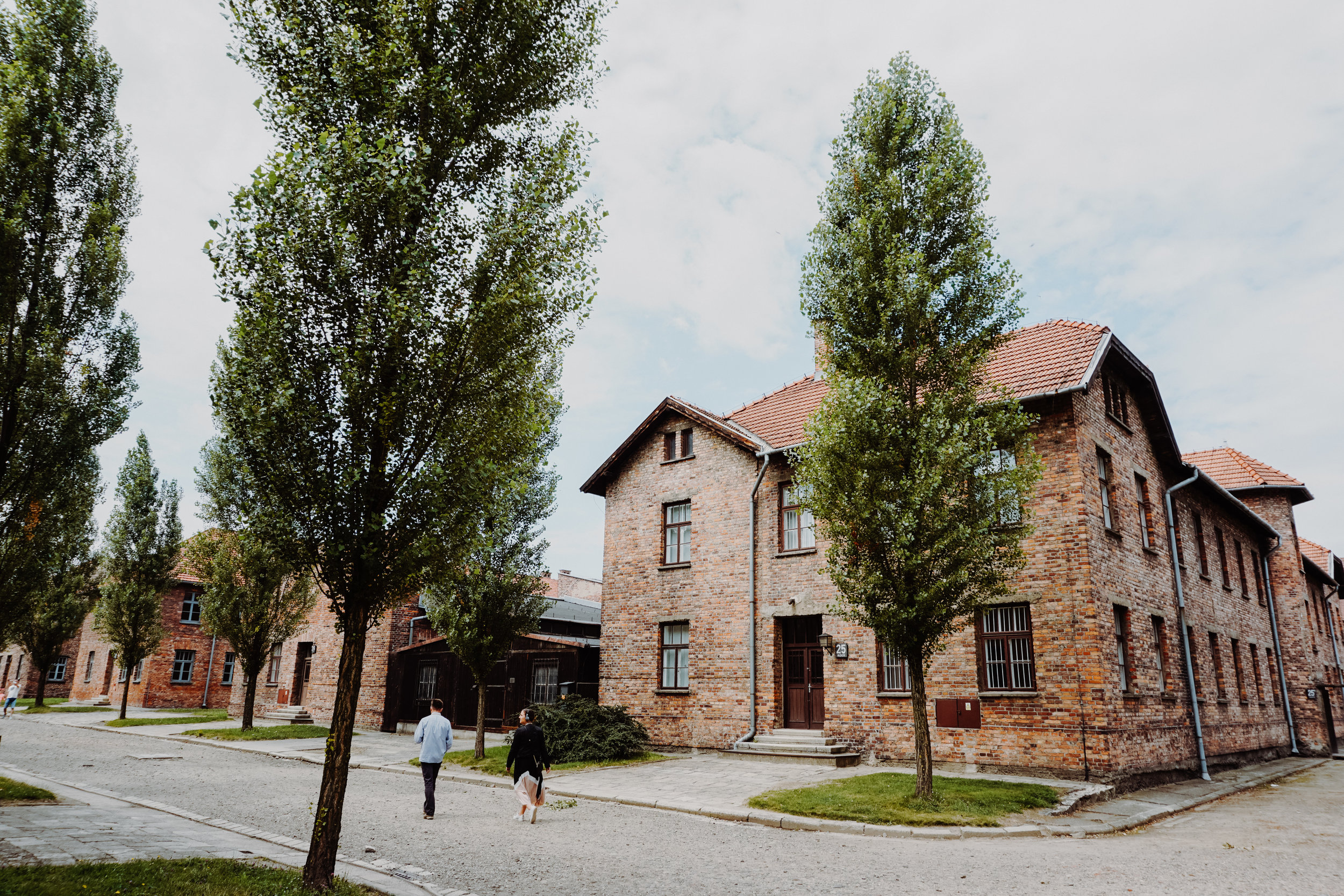
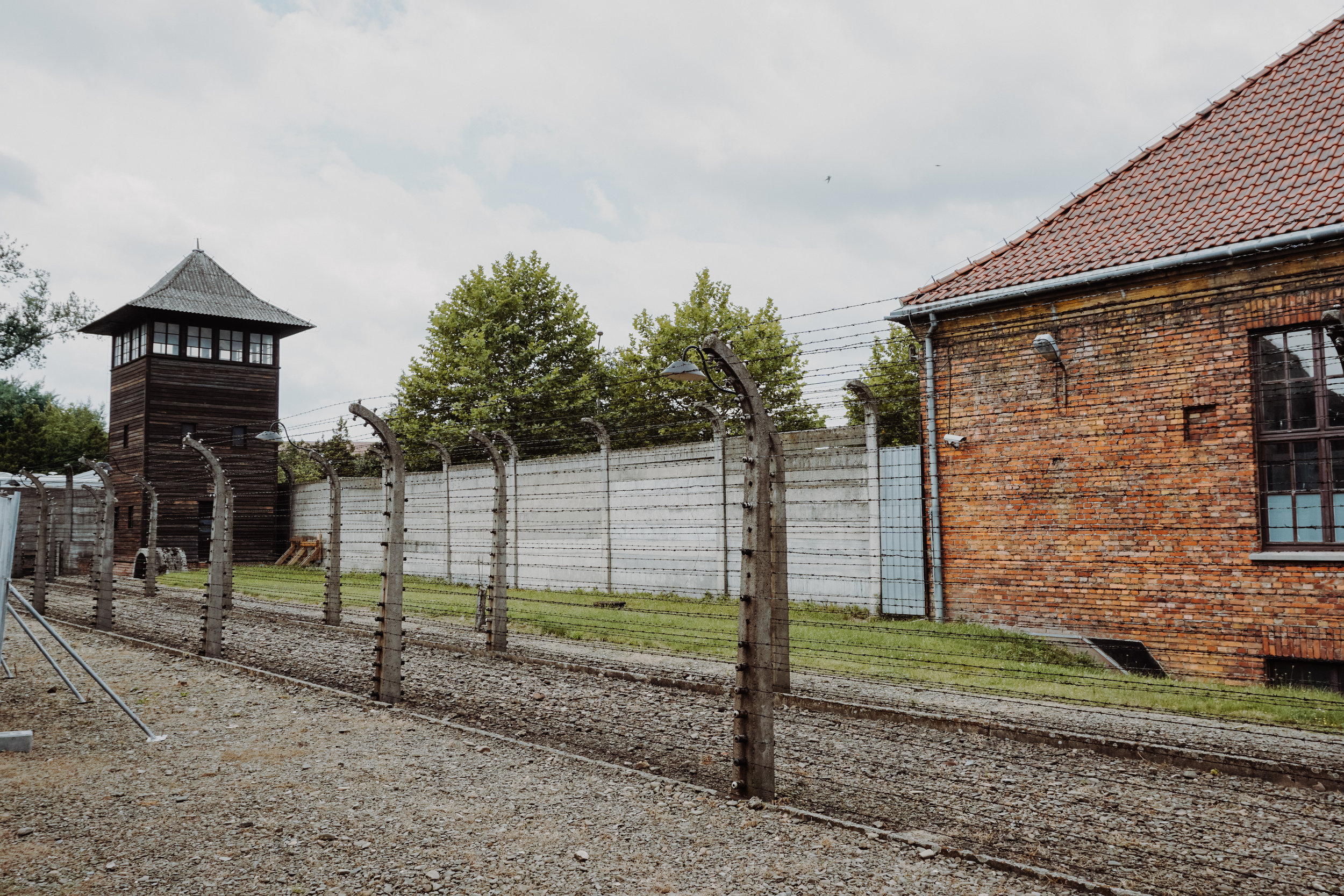
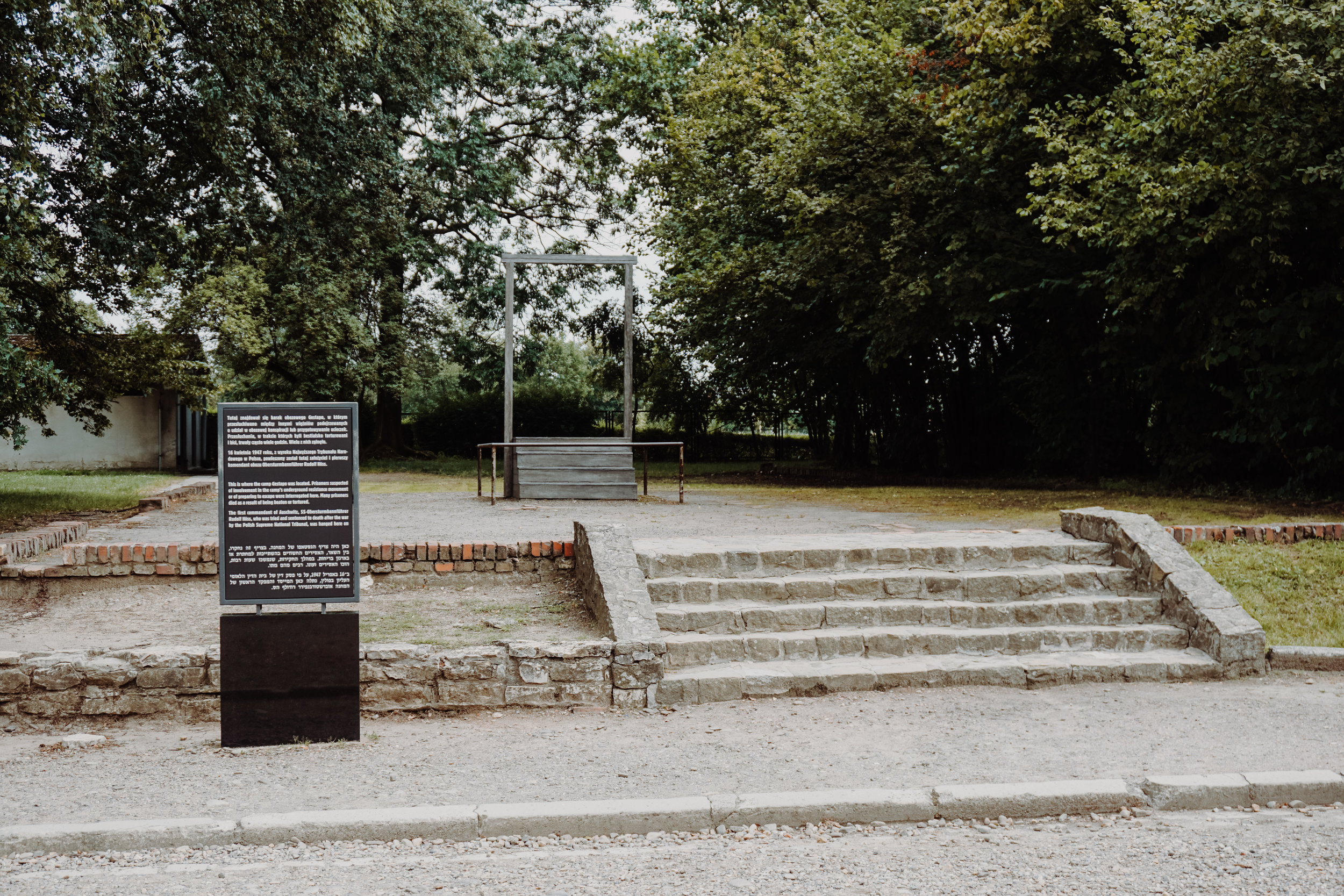
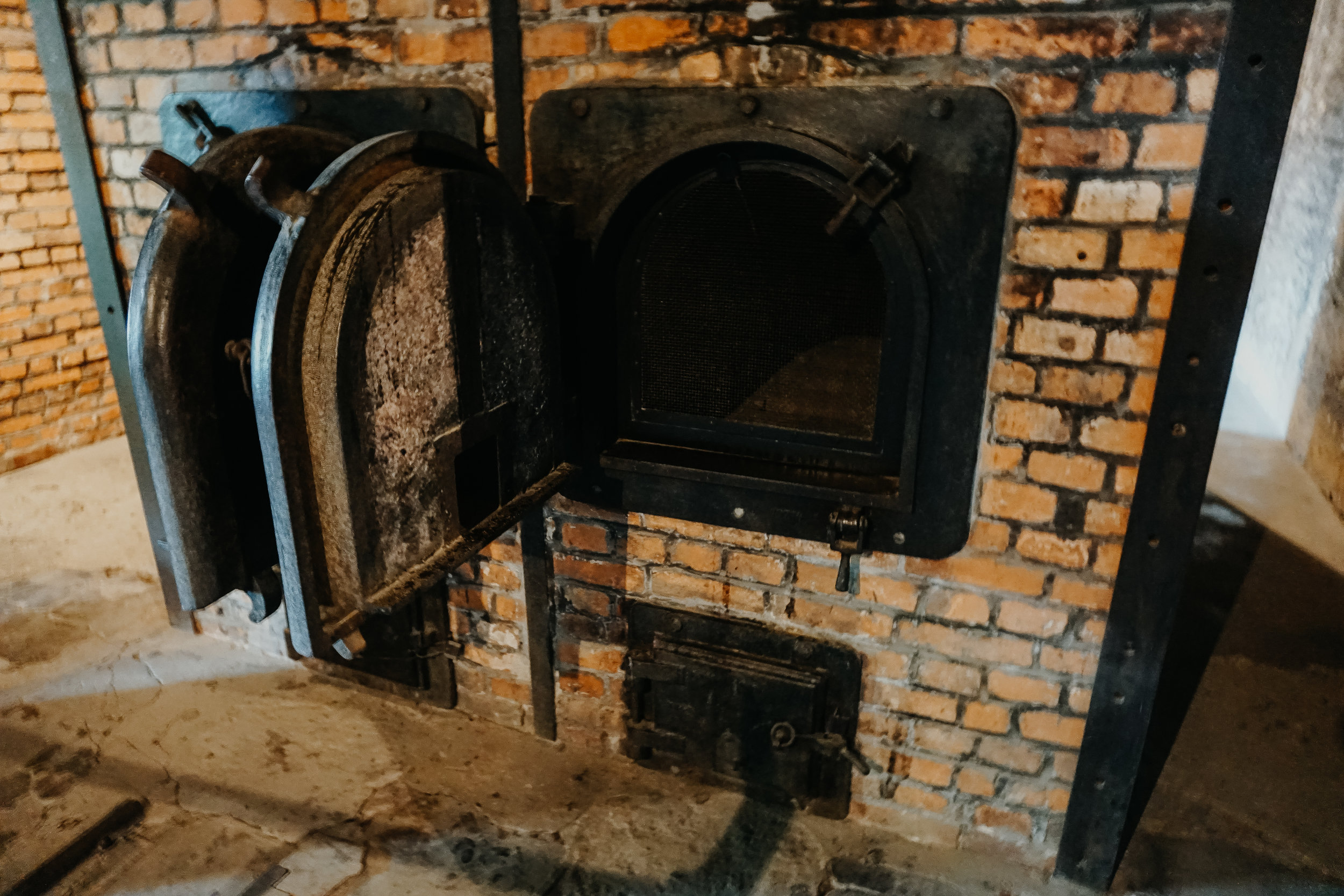
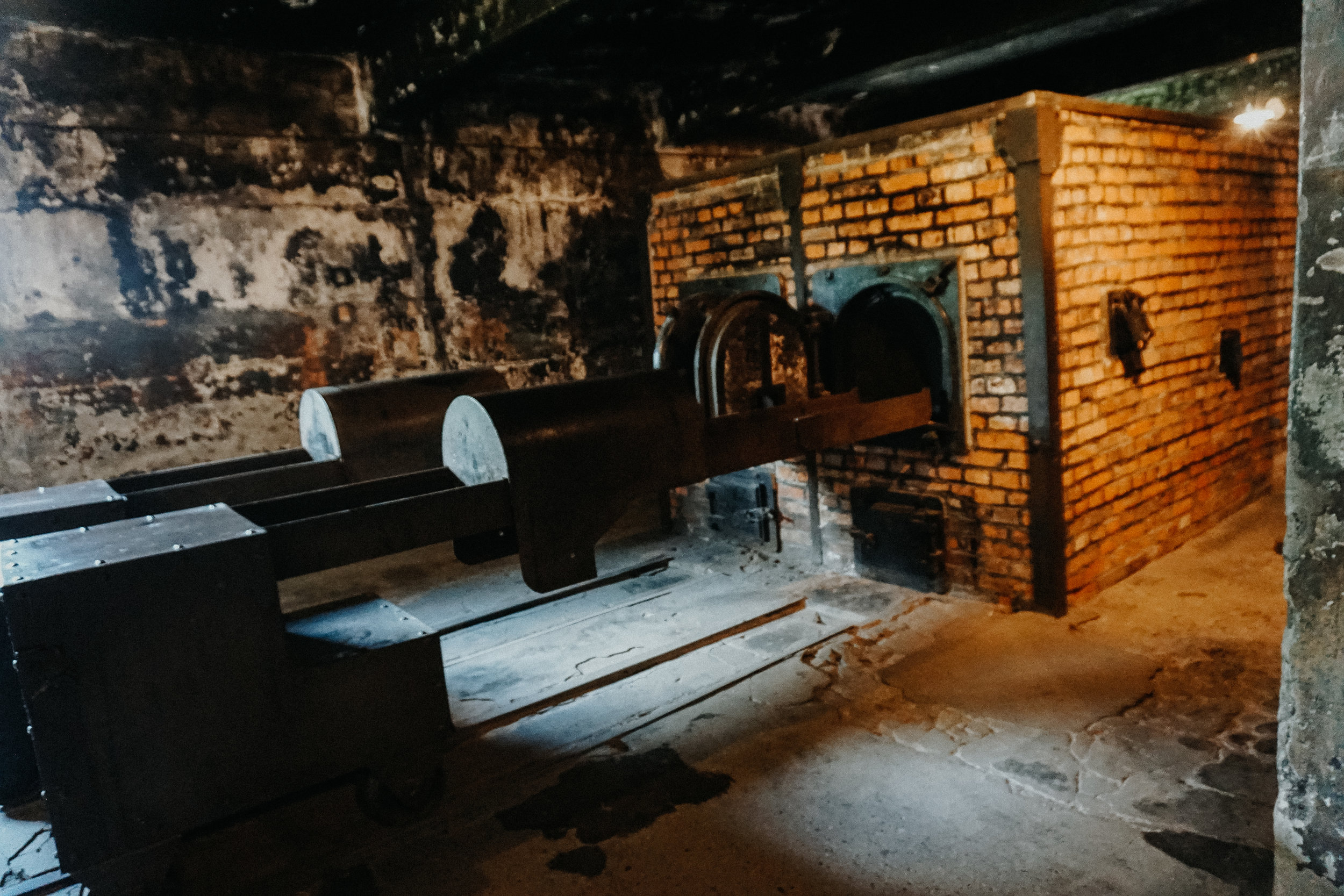


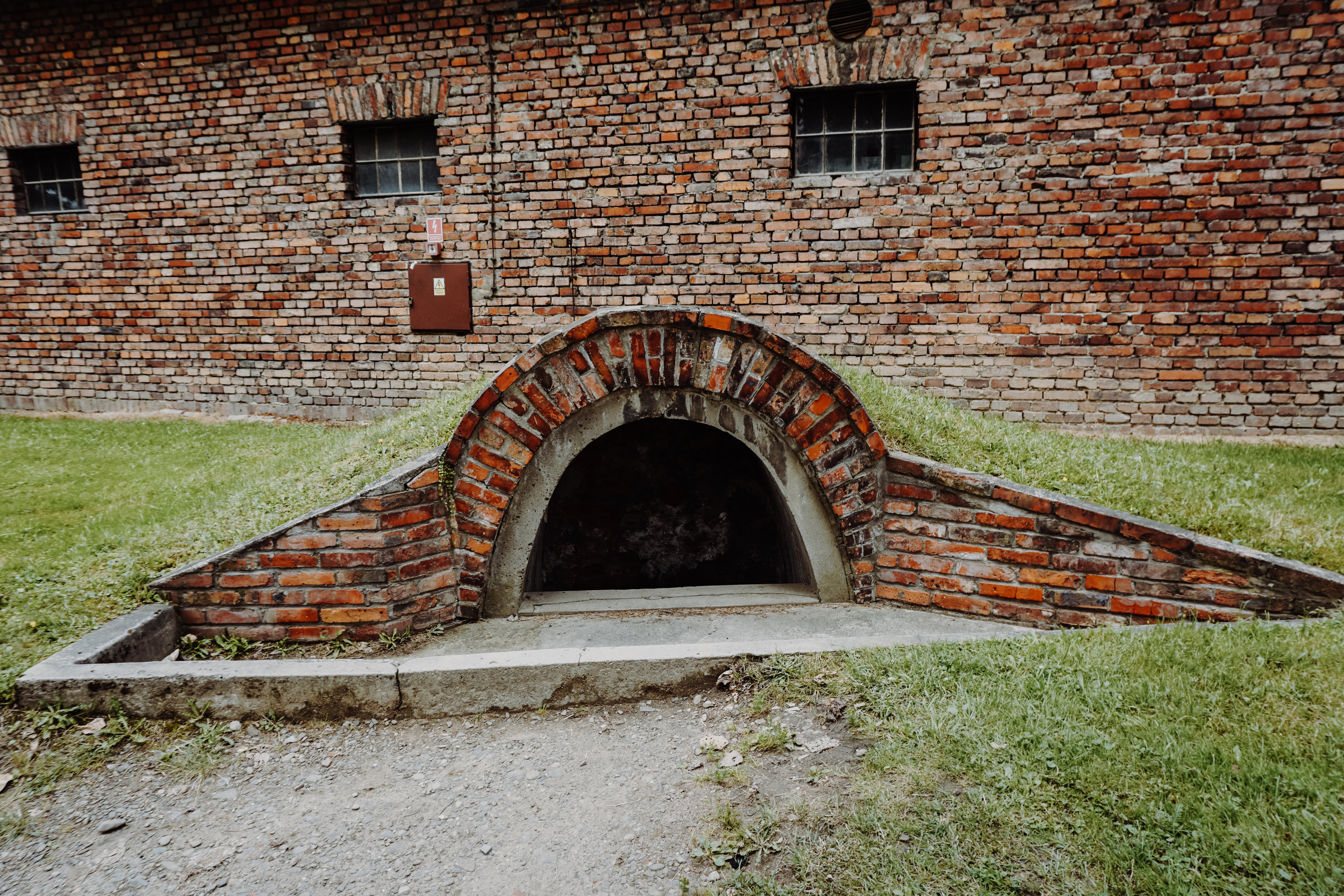
After lunch at the Auschwitz cafeteria, our driver took the four of us to Birkenau, which was less than 2 miles / 3 km down the road. Construction of Birkenau, also known as Auschwitz II, begain in 1941 and grew in size until its liberation by the Russians in 1945. It held the largest population of prisoners and had separate areas for men, women, gypsies, Hungarians, etc. Birkenau was a death camp. The camp had at least four gas chambers / crematoriums. The train would drive into the camp, people would get stripped of their belongings, and go stand in the selection line where the camp "doctor" would look at each individual and decide in that quick moment who was capable of working and who was not. If a person was deemed not healthy enough to work, they were immediately marched the 400 yards down the gravel road to the gas chambers and murdered. Nearly 1 million people were killed at Auschwitz-Birkenau.
Our first stop was to go up into the tower seen above, which gave us a bird's eye view of the entire camp, which is much larger than Auschwitz. Birkenau, much like Dachau, is expansive because of how many people were imprisoned there. You can see the outlines of the foundations and chimneys of all the wooden barracks that used to stand there during the camp's operation. After the war, many people who lived in the area came and dissembled the wooden barracks, taking the wood for themselves to use for their own homes and buildings. This is why they are mostly all gone. When Birkenau was made into a museum, a full row of barracks were recreated to give a sense of what it looked like.
The Germans used a model for horse stables in building the wooden barracks. Each barrack was designed to sleep 400 people, but they have records showing as many as 700 were crammed into the bunks. Wojtek believes there could have been even 1,000 people in a barrack at one point. When the Germans realized they were losing the war, the only thing they could continue to do successfully was exterminate the Jewish population, which is why so many people were sent to Birkenau, especially in 1944. You will be able to see below pictures of the grounds: the lookout tower, inside the wooden barracks that had the toilets and the bunks, barbed wire fences, and the railroad tracks.
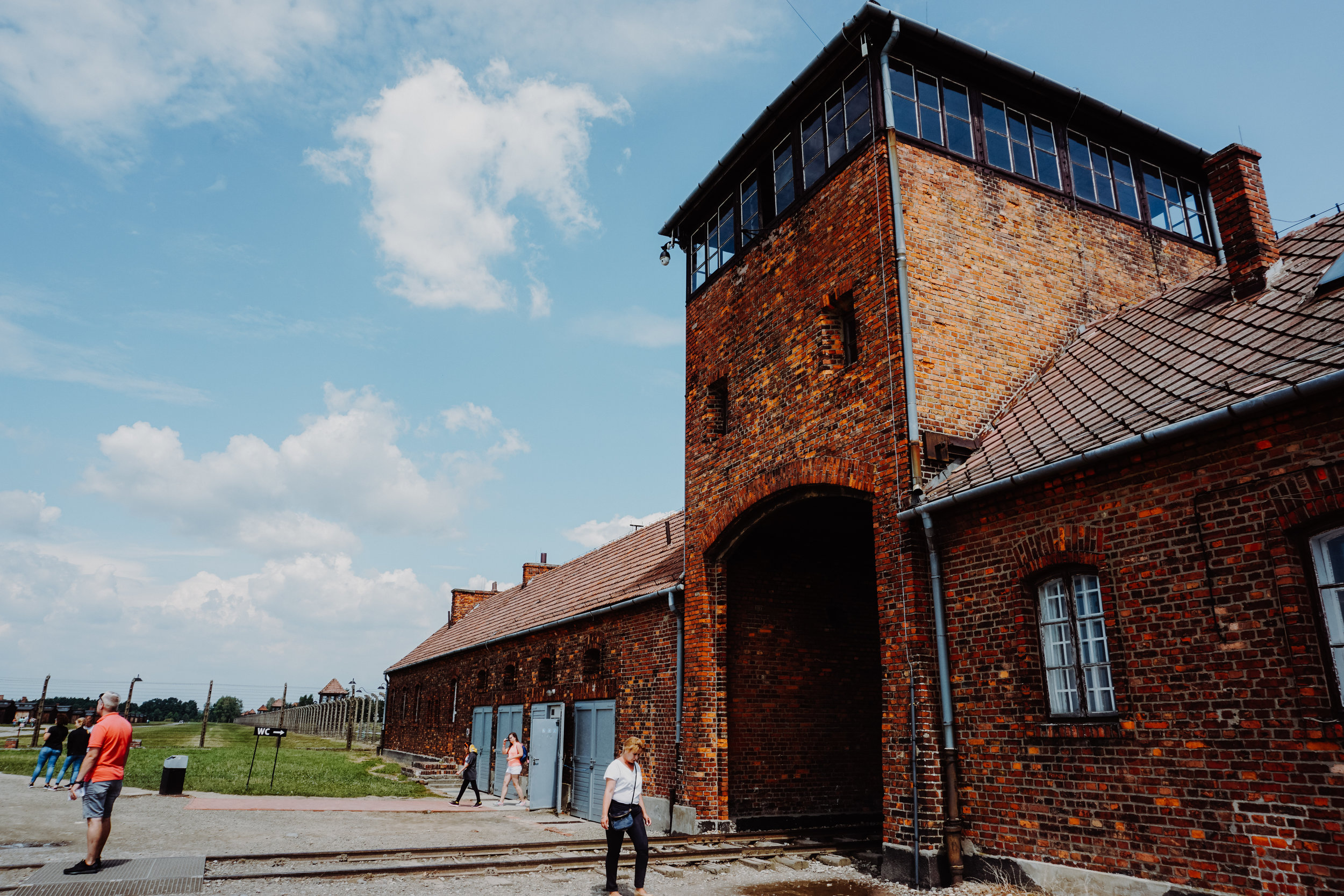
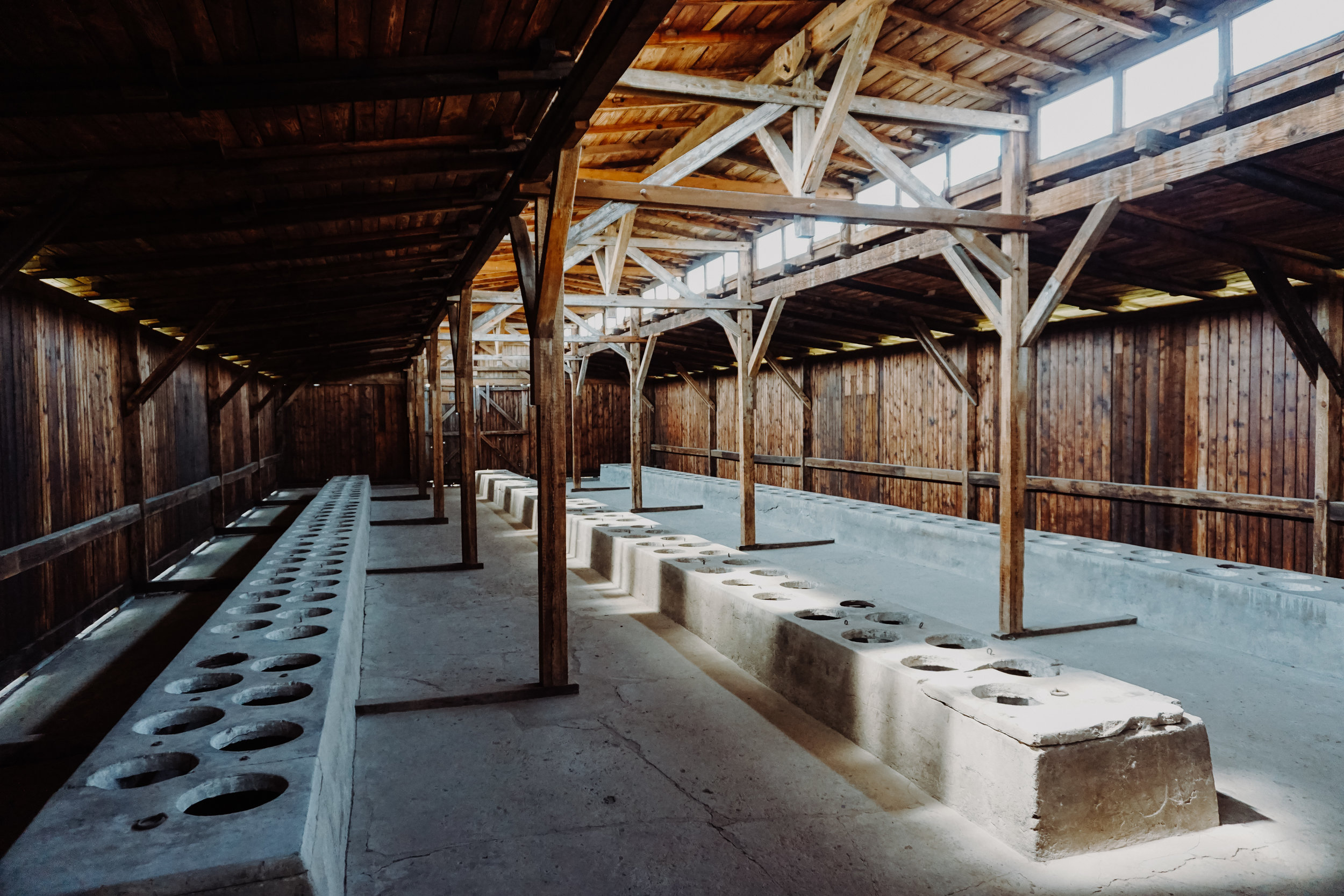
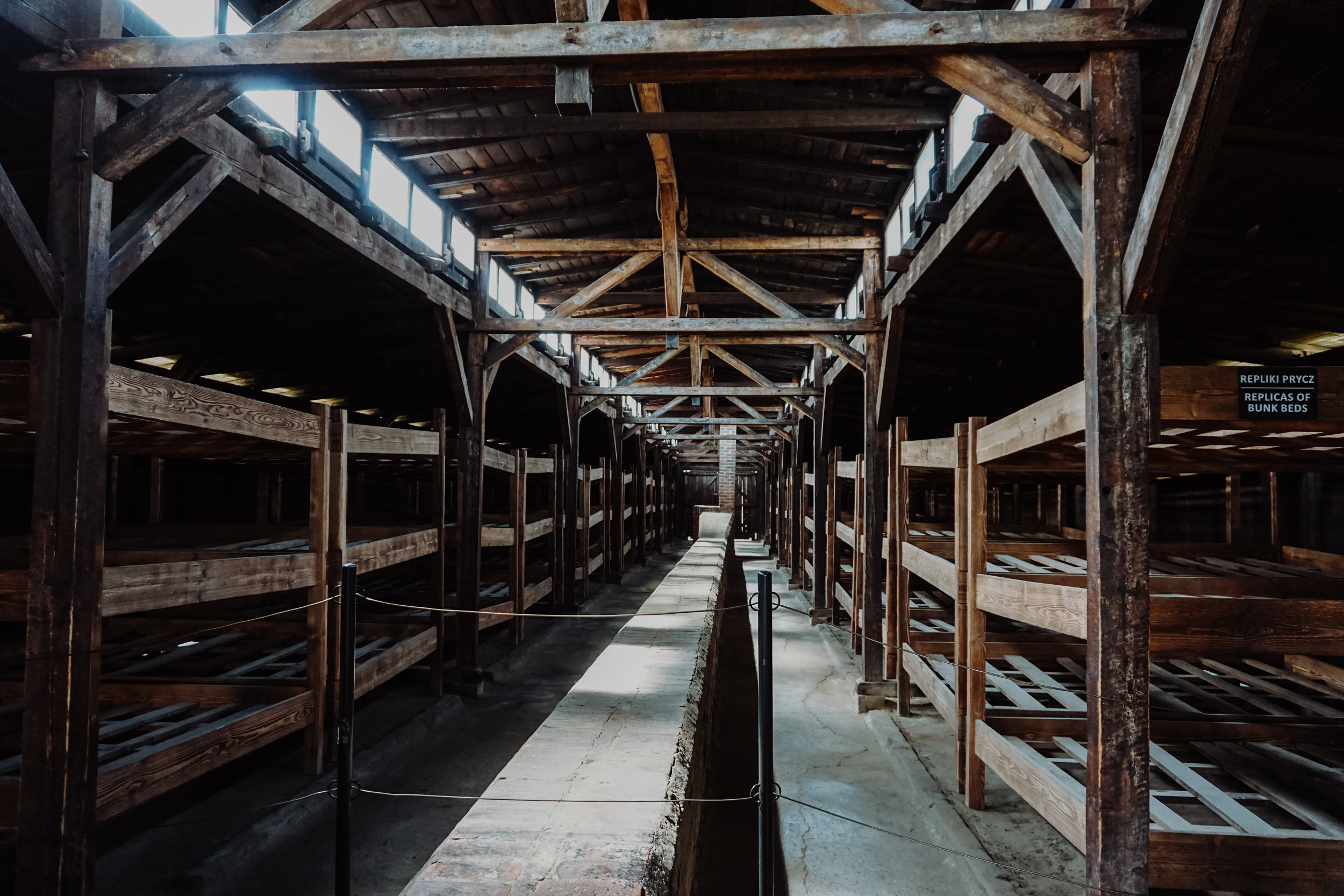
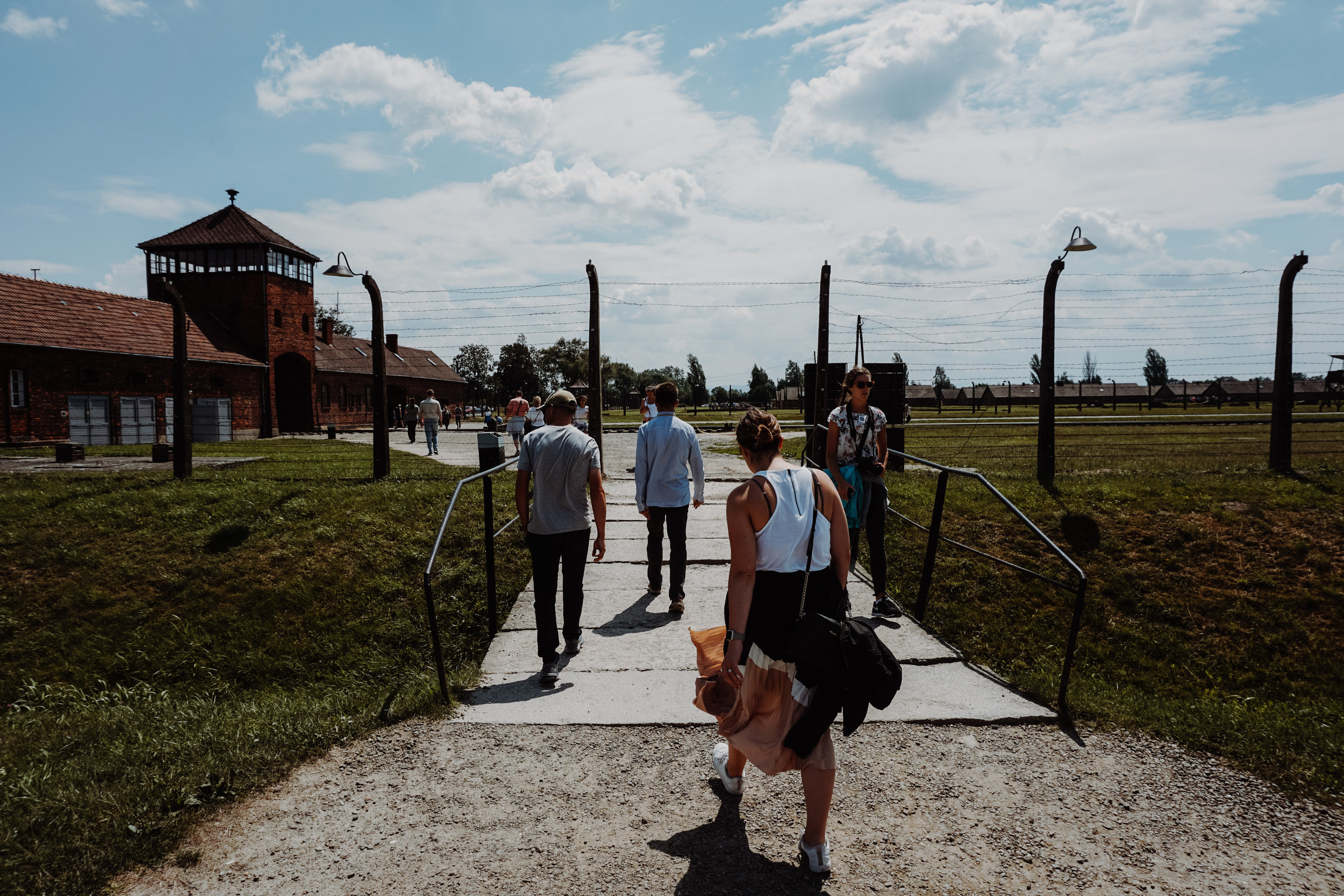
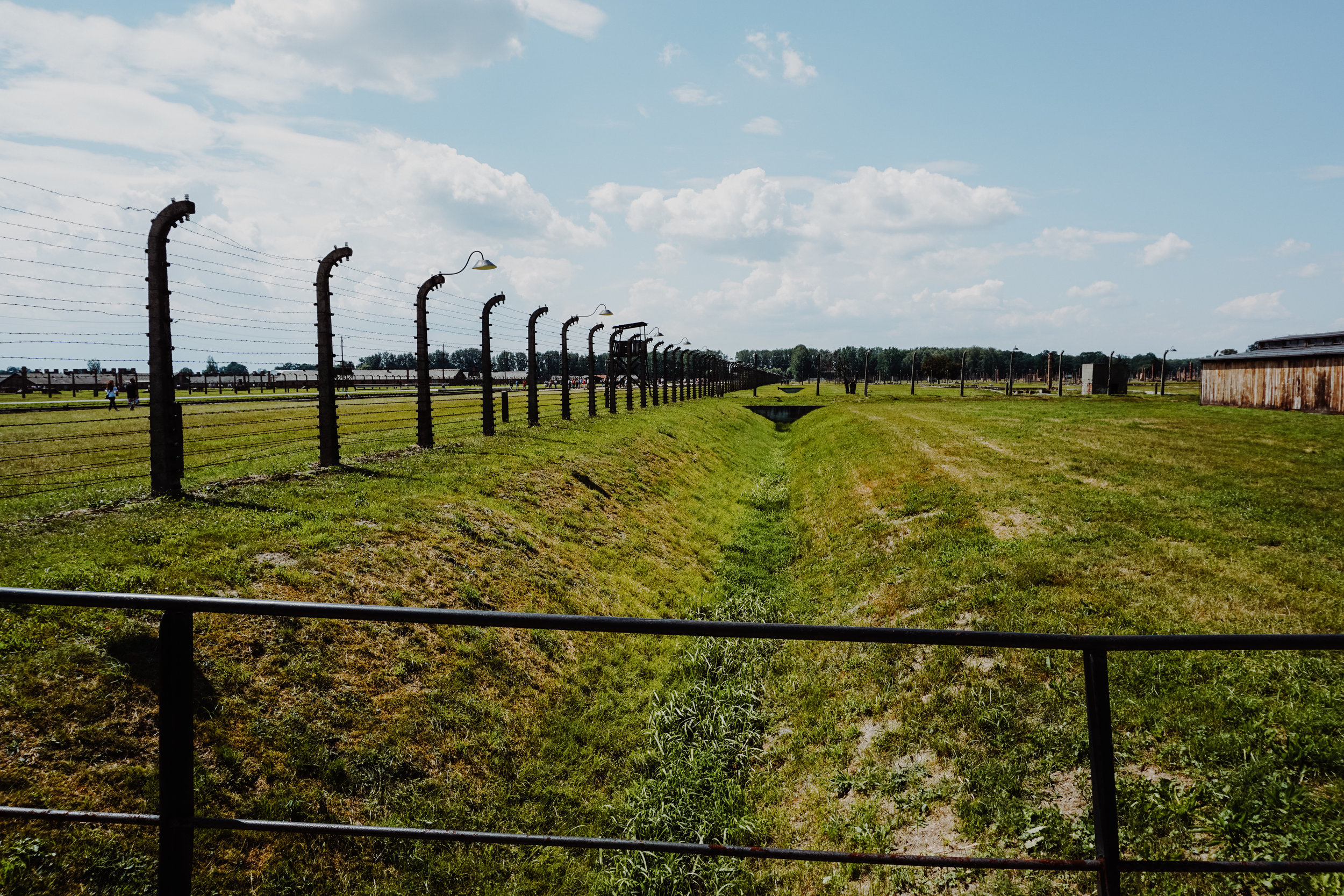
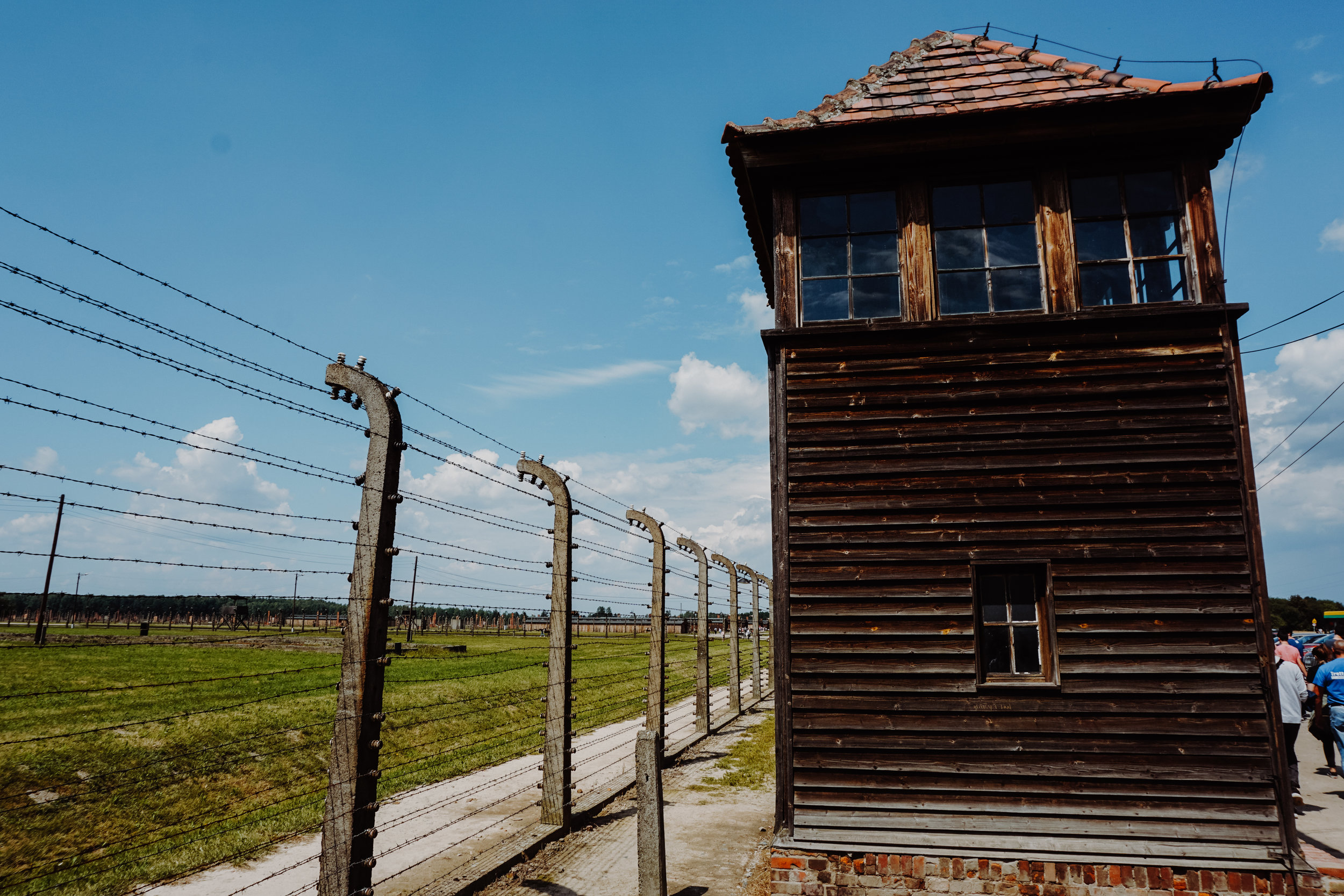
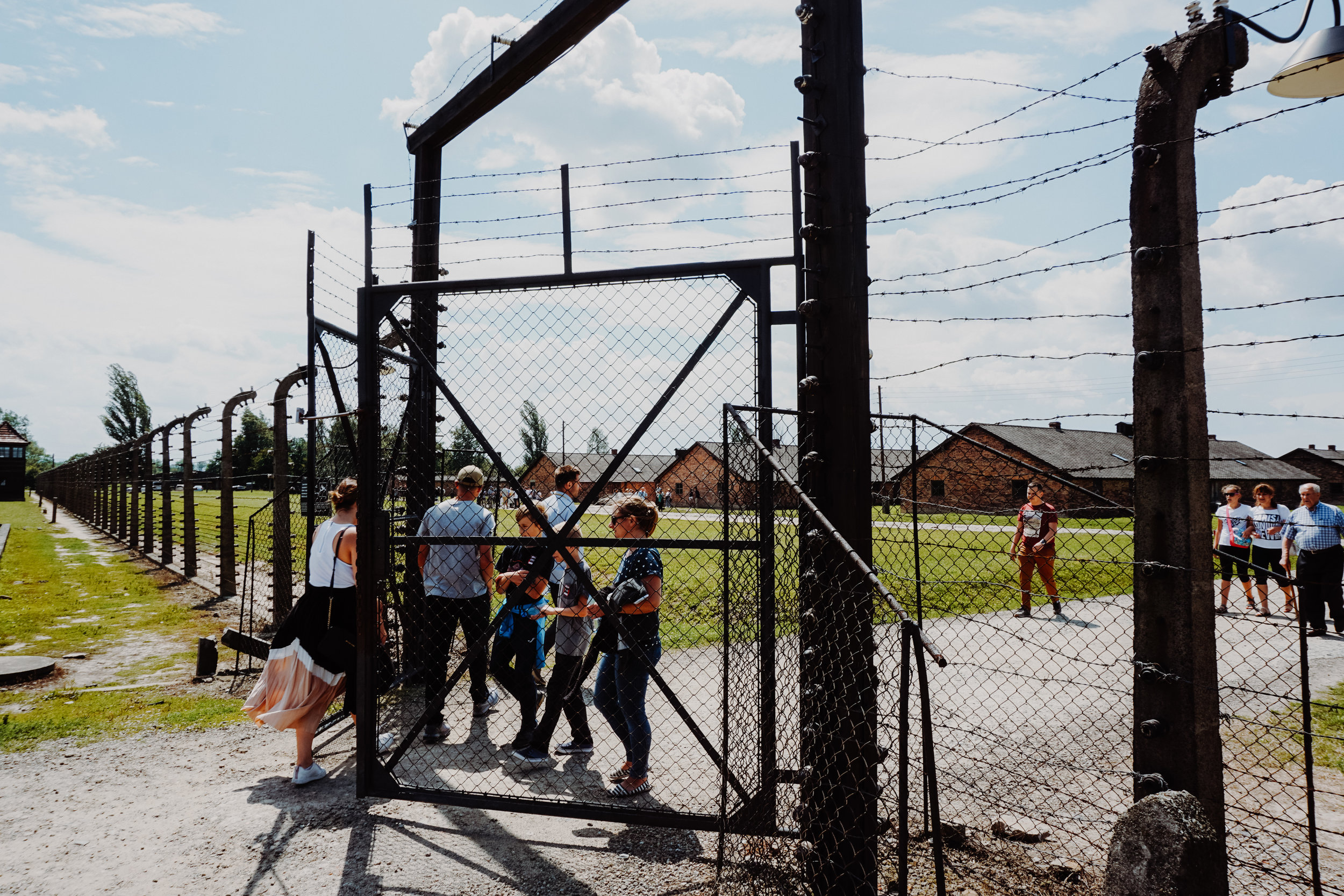
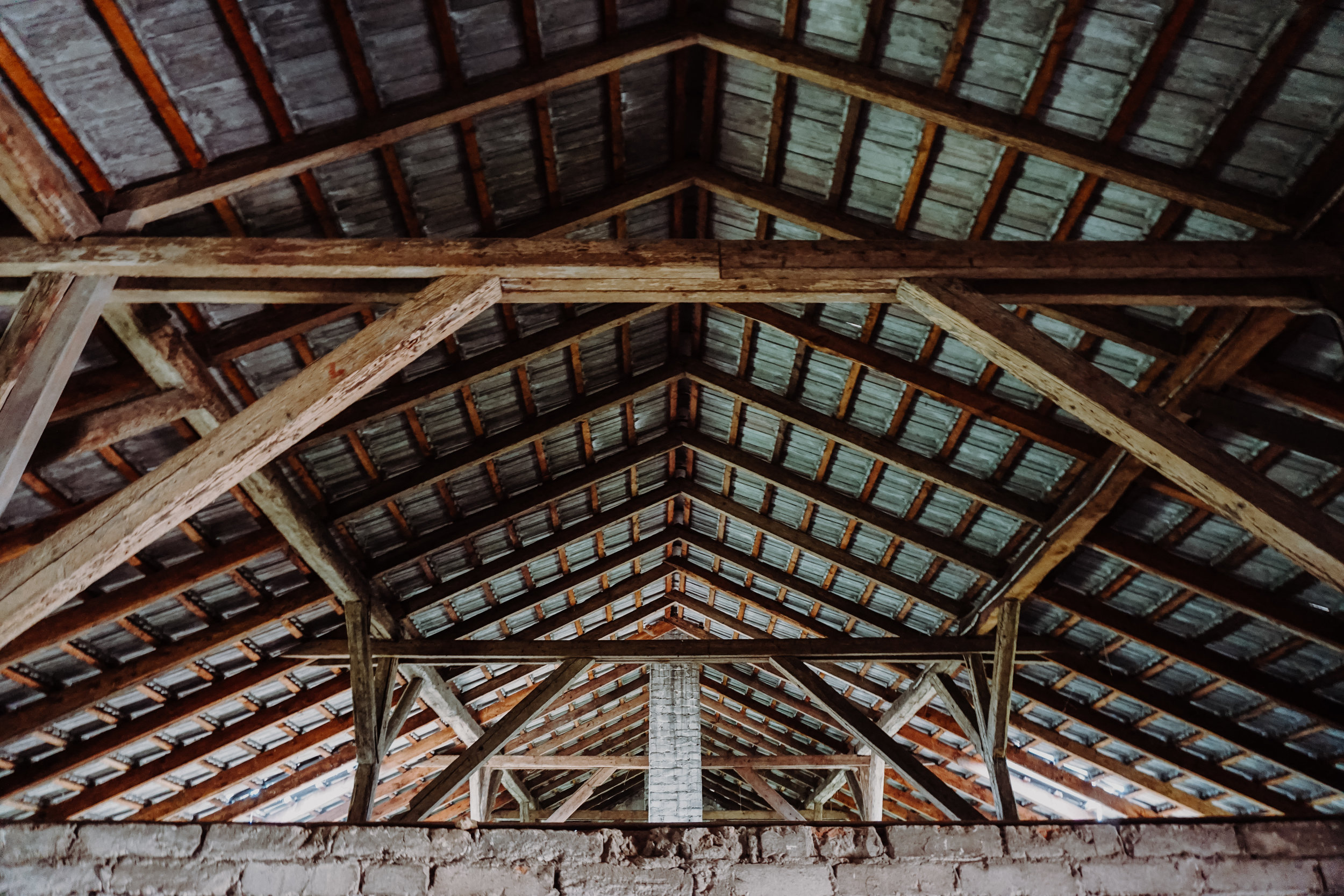
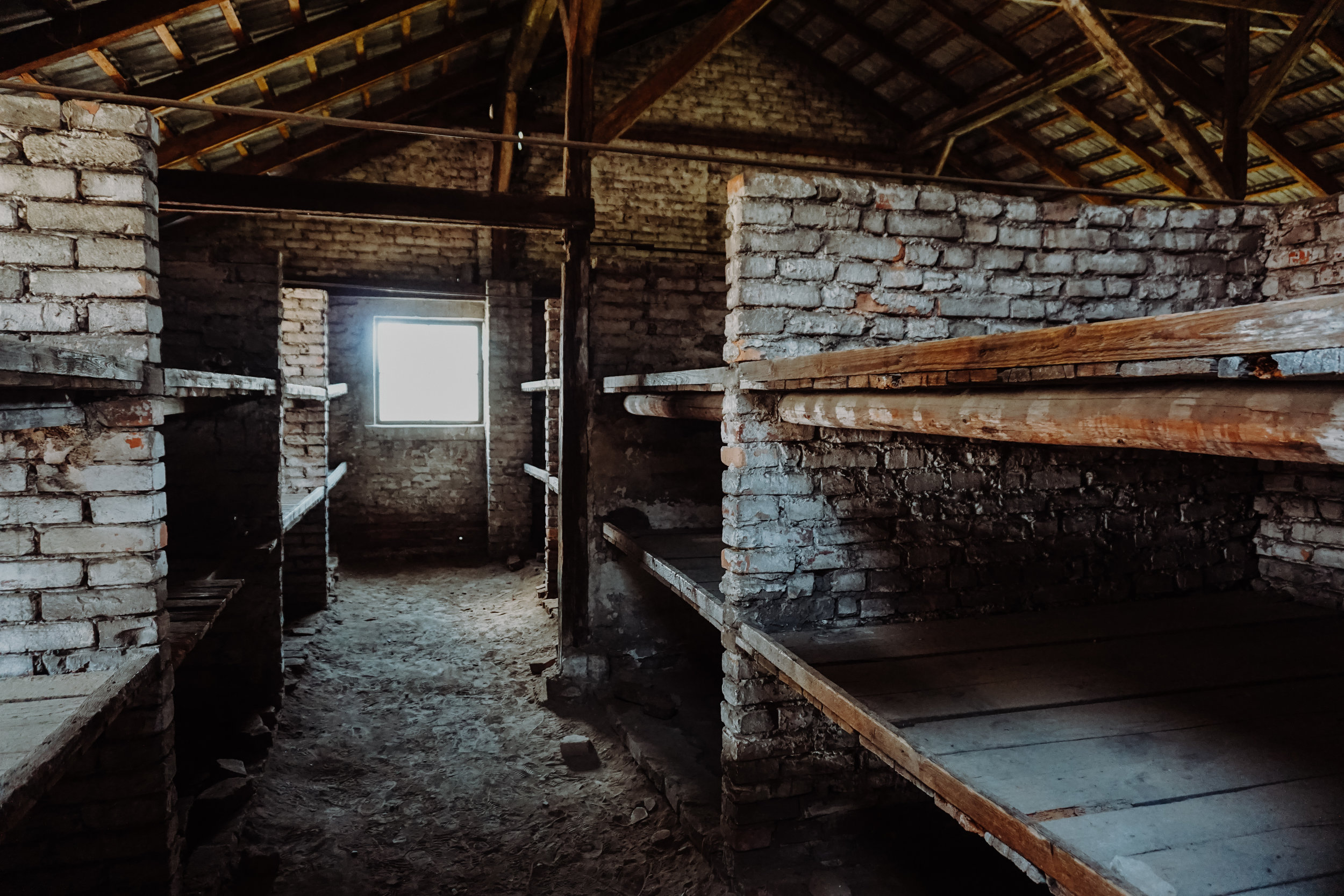


Down at the end of the railway tracks are the remains of two of the gas chambers / crematoriums. When the Nazis knew everything was over, they blew up all four crematoriums before deserting the camp. What's left now is the rubble of those buildings. Even still today, they are finding human bone fragments on the site.
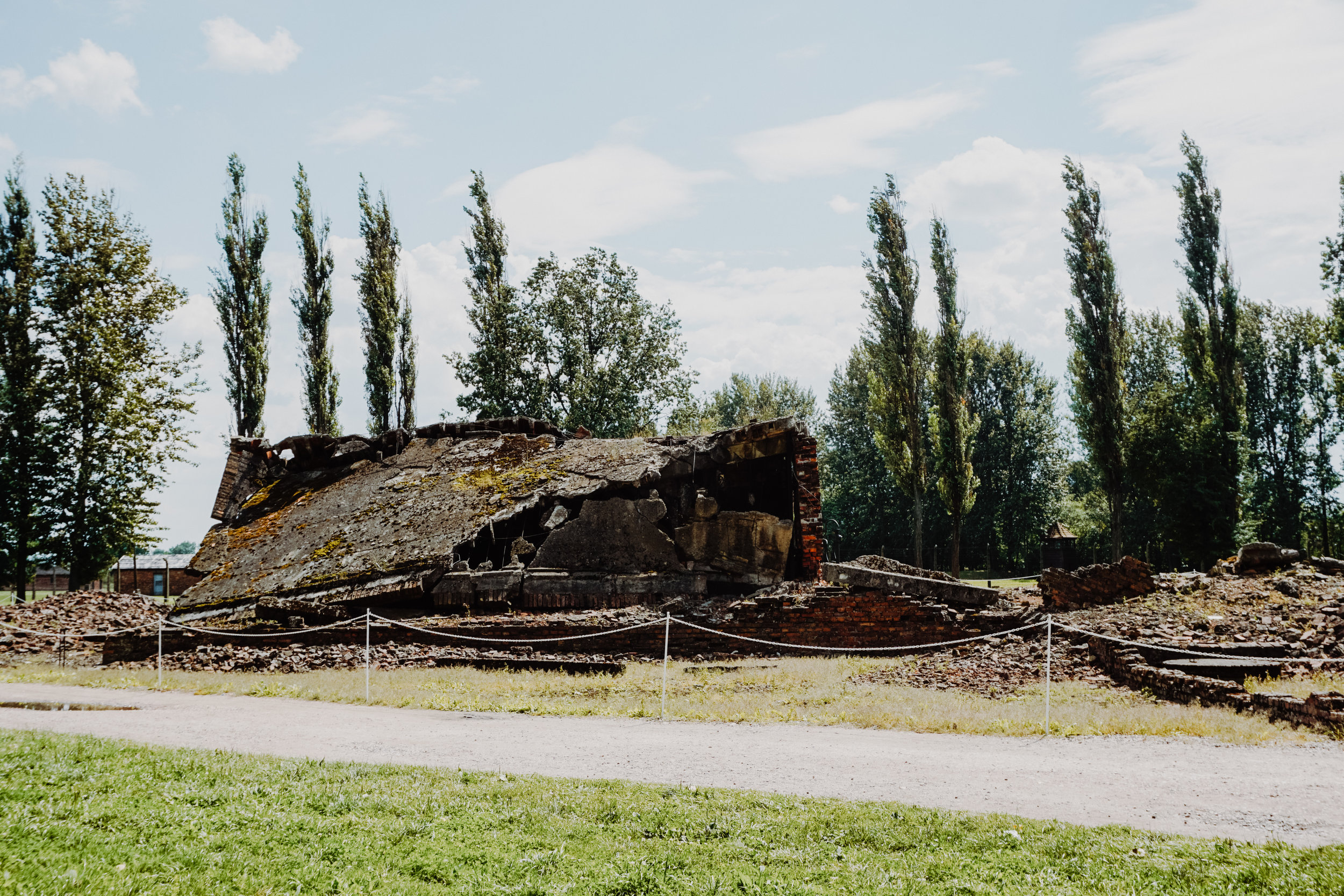
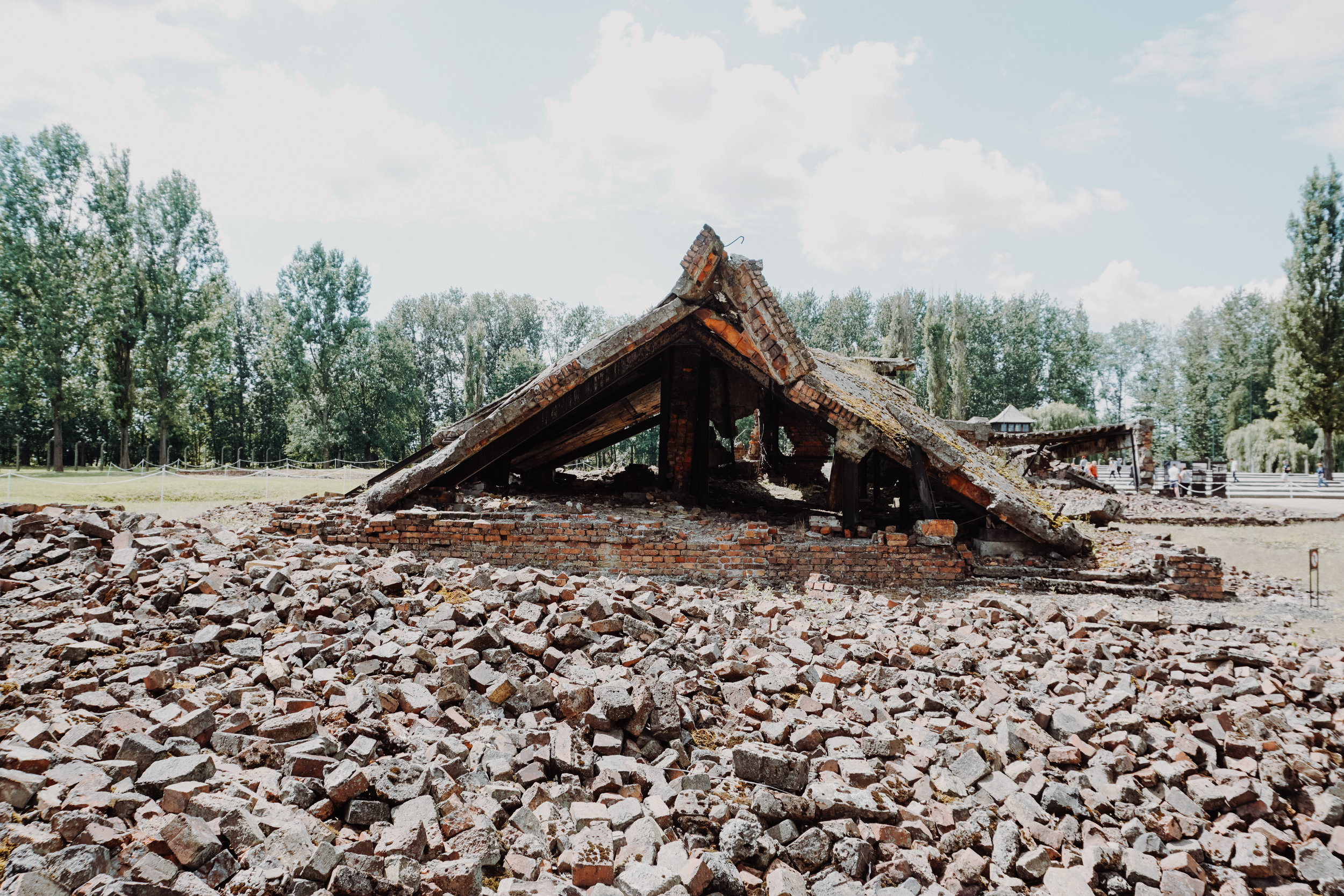
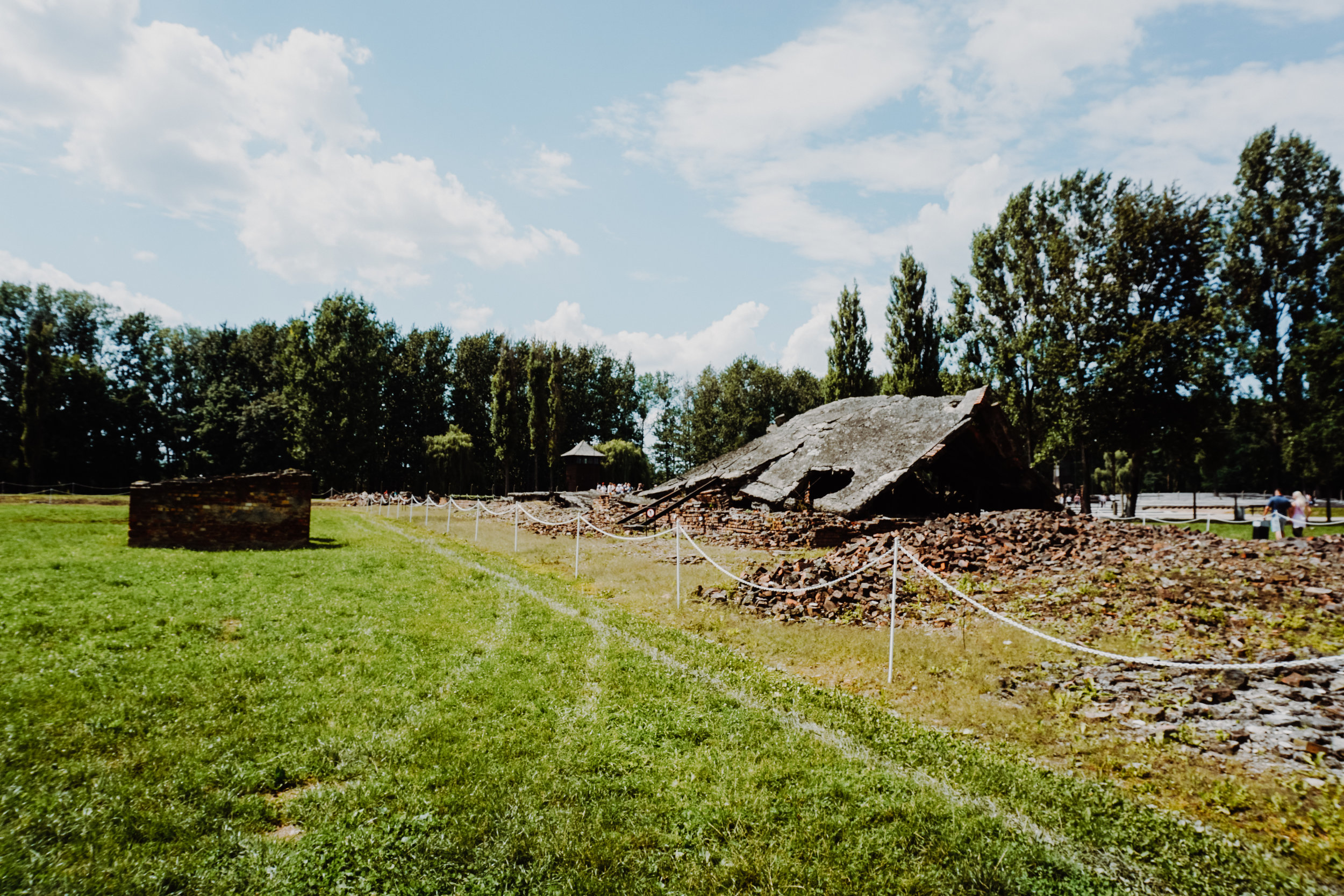
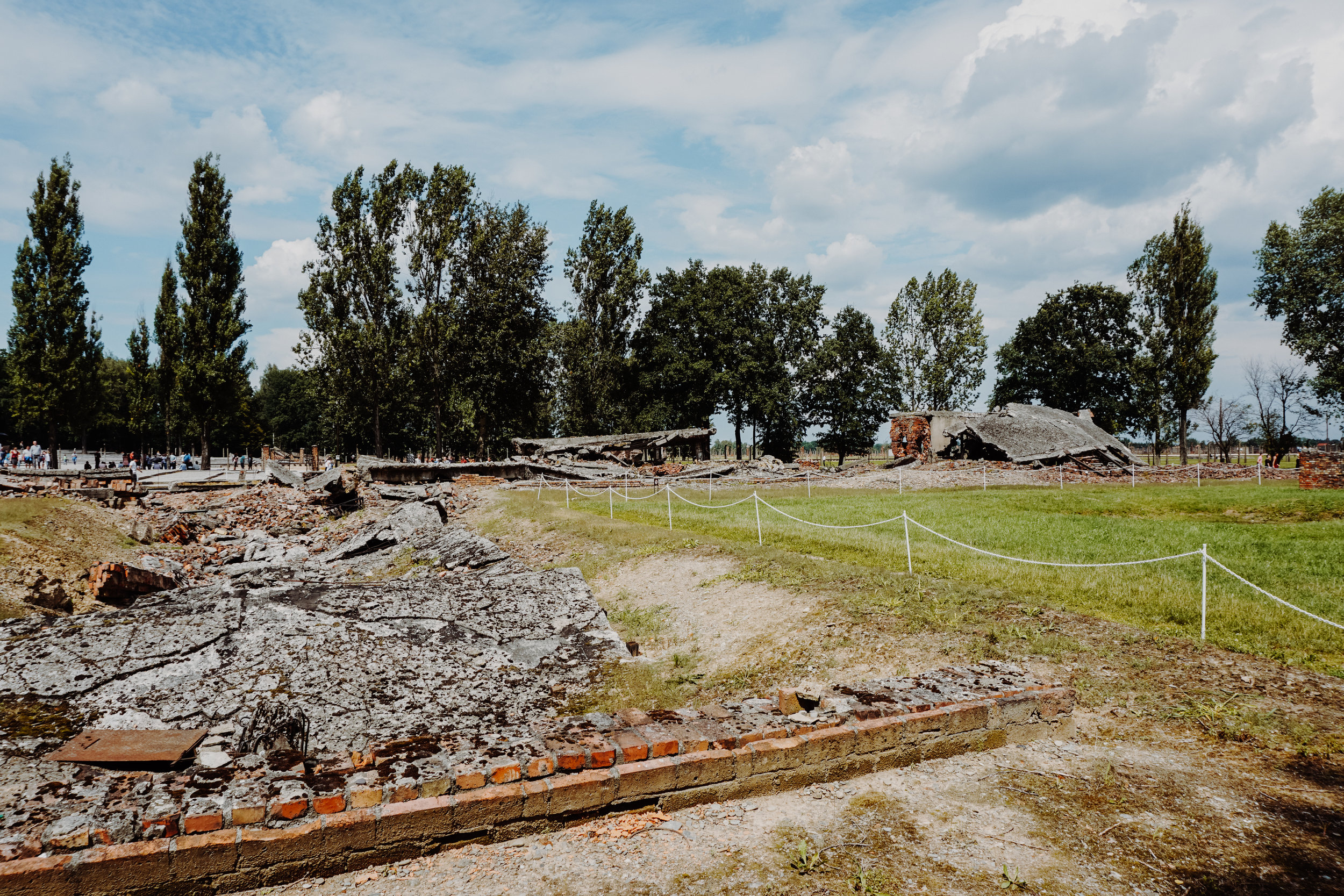

Right next to the destroyed crematoriums is a memorial for all those who lost their lives at Auschwitz-Birkenau.
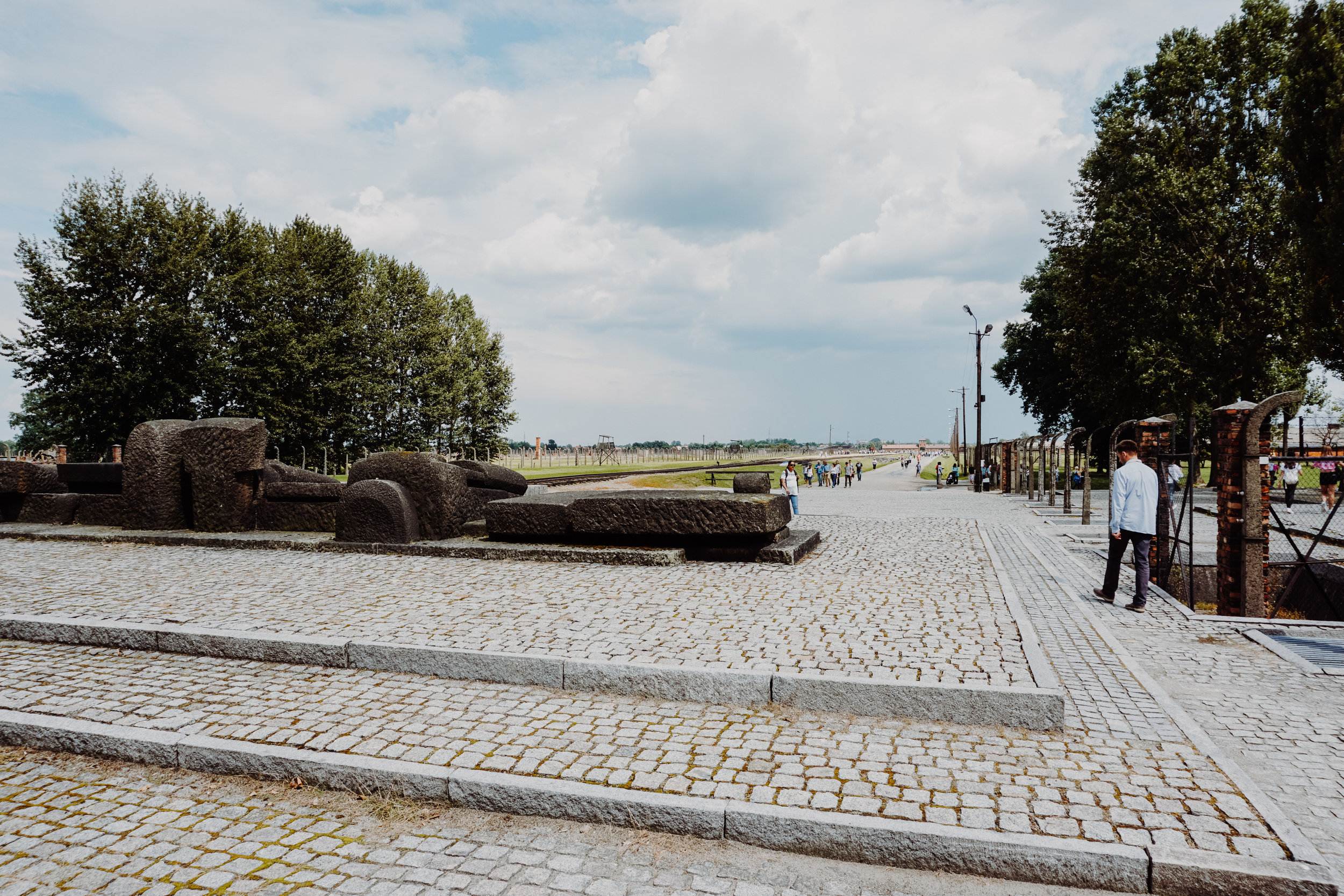
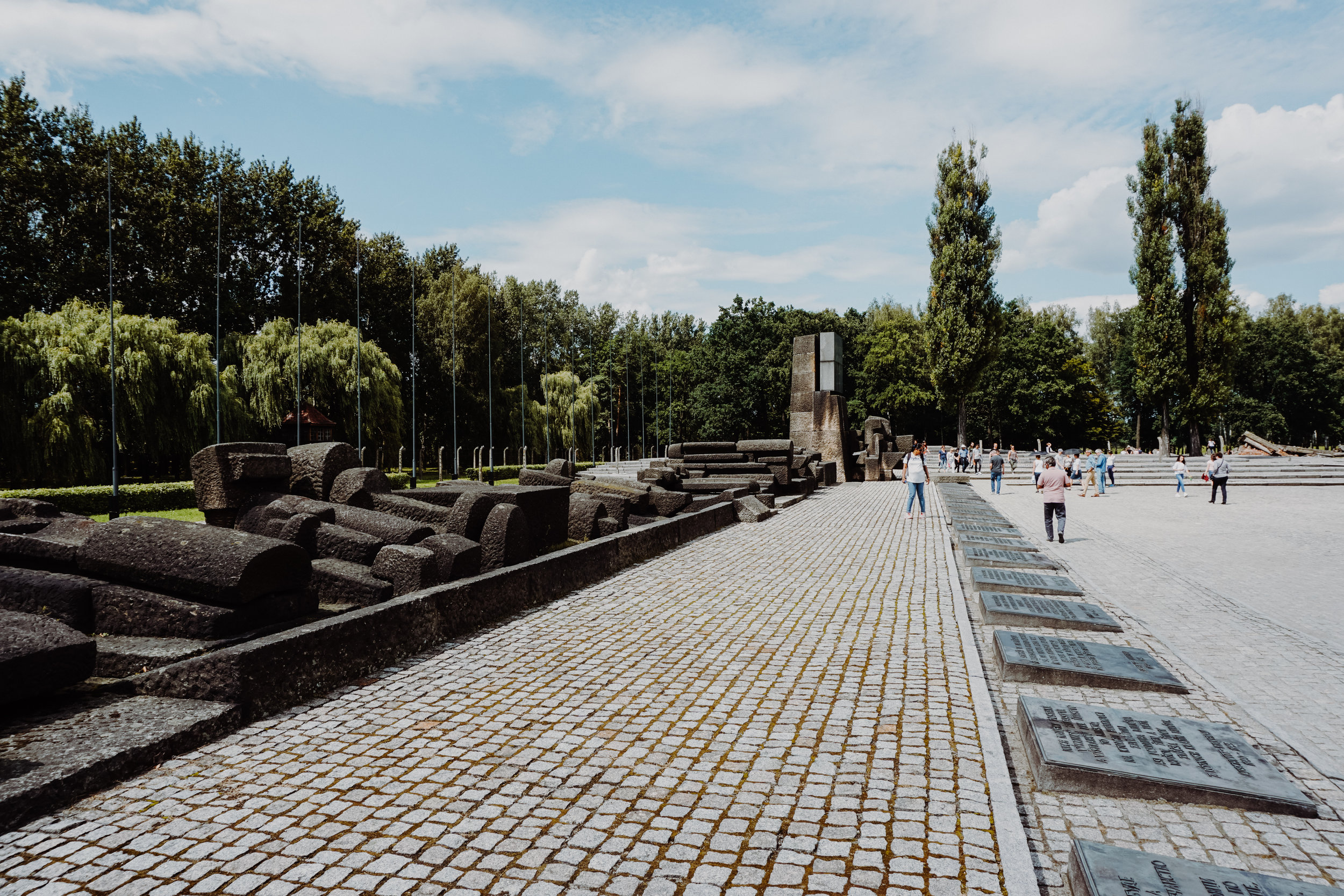
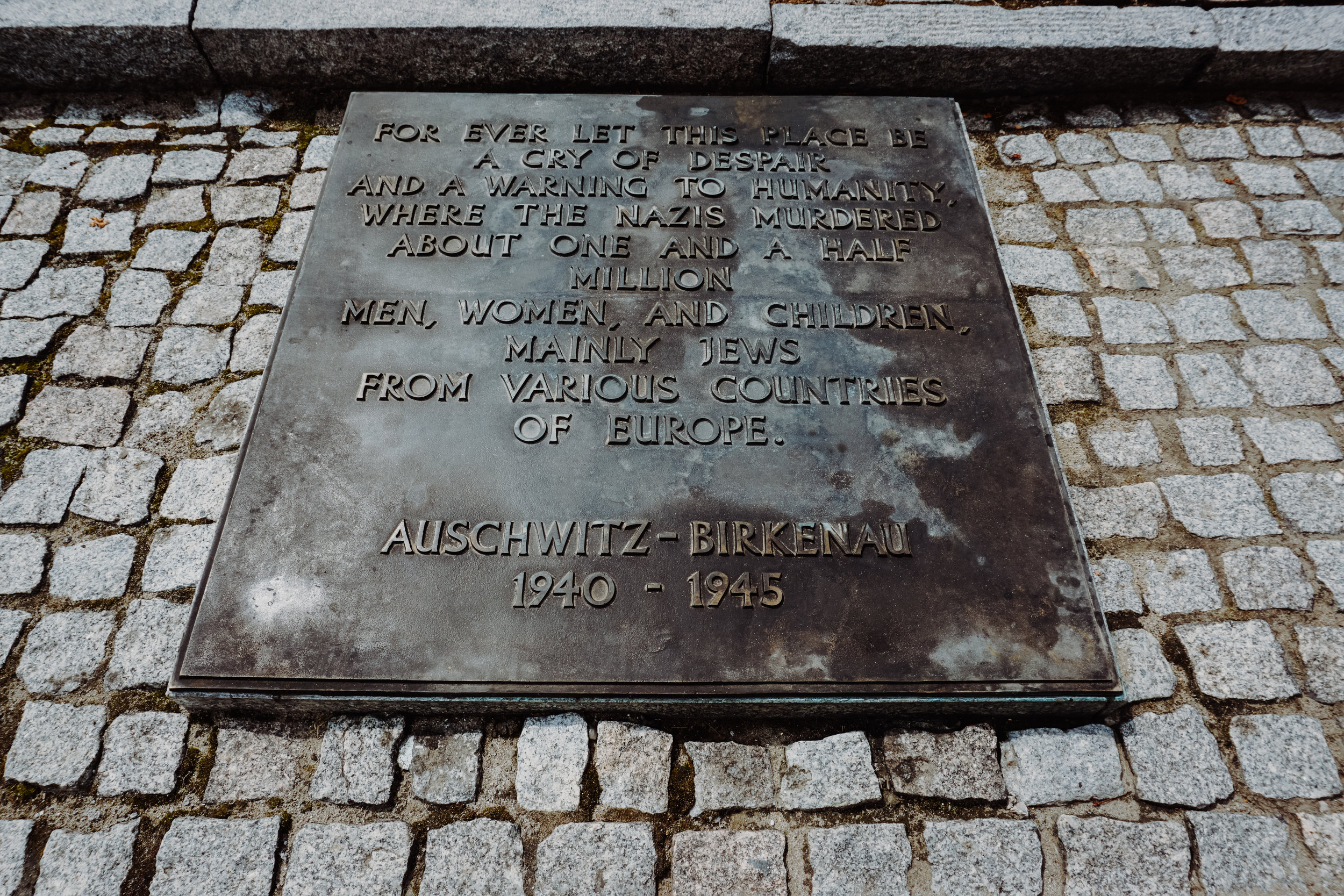
Our tour ended around 3:00 in the afternoon and we made the hour-long trip back to Kraków. The private guided tour was absolutely incredible. Wojtek was a fantastic guide, who I would recommend to anyone. He is as knowledgeable as it gets and his close connection to the camp is rare. The tour cost 1400 PLN / $385 / €328 and was worth every penny. If anyone would like Wojtek's contact information, hit me up in the comments section below and I would be glad to send it your way.
When we got back into Kraków, we were proper depressed after our day and needed a drink, so we hopped around to a few bars. The best place we visited was a bar called Wodka Bar. It came as a recommendation from a family friend and what a little gem! It's a teeny, tiny bar that has loads of Polish vodkas and specializes in vodka flights.
While I took a little snoozer at our AirBnb, the boys got started on their flights trying everything from cherry vodka to coffee vodka.
When I rejoined the party, the boys were ready for another flight, so we got one to share -- 2 shots / baby wine glasses (?) each. The vodkas were lovely and had no bite at all!
There was one particular vodka that is infamous in Poland called Źubrówka. My Uncle Paul texted me that we had to try it because he had a couple tastes of it during his visit to Poland and said it was smooth and very good. The catch? There is a blade of grass in each bottle that may or may not have been pissed on by a bison. So the vodka is affectionately known as bison piss. And you know what? It tasted great and you should definitely try it if you are visiting.
What do you do with a little vodka buzz? Shop of course! We popped into the Zara to see what the Polish style was like and it was fun! Chris and Shawn both found great pieces and the price tags after the conversion rate weren't so bad either.
Around the corner, we found an Italian place for dinner [nothing worthy to blog about], loaded up on carbs, and tucked ourselves in for the night. It had been a great day.
Day 3 - Sunday, July 15th:
We woke up early on Sunday morning to catch some last views of the city and find some breakfast. Back in the main square, we found an English restaurant called the Bulldog that was open and serving breakfast at 8:30 a.m. After fueling up, we walked towards St. Florian's Gate, which marks one of the entrances into the Old Town. Erected in 1307, it is nearly all that remains in the city from medieval times.
We had a late morning flight out of Kraków, so unfortunately that was all we had time for that day. Our AirBnb host had offered to arrange transport to the airport for us, but we politely declined and went with the cheaper option using My Taxi [you could use Uber too]. This time, the ride cost only 55 PLN / $15 / €13. So cheap!
The Kraków Airport is small and nice, but the lines were unusually long. Luckily, we had plenty of time, so we got to check out the airport's lounge, which was the nicest lounge we have been to yet. It looks brand new, had a fantastic food and drink spread, and wasn't crowded at all. So if any of you have a credit card that gives you access to airport lounges, definitely take advantage of Kraków's!
We were sad to say goodbye to Kraków because our time there felt too short. I don't think we even had a full 48 hours, which makes me ever sadder typing this! Having known very little about the city, we didn't know what to expect, and it totally blew us away -- the architecture, history, food, and nightlife. It's a charming town that we barely scratched the surface of and is deserving of another visit in our lifetime.
Up next for us -- we are filming a special something this coming weekend and then are welcoming Chris' parents, Jerry and Karen, to our home in Dublin. We can't wait to show them everything Ireland has to offer!
Until next time...
Na Zdrowie! xo,




